Amboseli National Park: The Complete Guide
:max_bytes(150000):strip_icc():format(webp)/DSC00412-5b73daf7c9e77c0057ca2198.jpg)

Things to Do
Where to camp, where to stay, how to get there, accessibility, tips for your visit, amboseli national park.
The name Amboseli comes from the Maasai word empusel , meaning a salty, dusty place. And yet, there’s much more to Amboseli National Park, a relatively small reserve located in southern Kenya . It covers an area of approximately 150 square miles, including wide-open areas of savannah grassland, tangled acacia forests, and the dried-up bed of Lake Amboseli. Above it all stands the park’s crowning glory, Mount Kilimanjaro , which is visible from across the Tanzanian border.
The mountain’s snow-capped peak creates a spectacular backdrop for your safari photographs. Its meltwater also feeds the park’s unique swamp system, which provides a reliable, year-round source of water in an area otherwise characterized by its low rainfall. Animals and birds flock to Amboseli to drink from the swamps, making it Kenya’s second-most popular national park for wildlife viewing. In particular, the park is renowned as one of the best places in Africa to see wild elephants .
Elephants are the main attraction for visitors to Amboseli. The planet’s largest terrestrial animals can be seen in herds that often number over 100 individuals, from wise old matriarchs to tiny calves still covered in coarse orange fuzz. Sparse vegetation makes the elephants easy to spot. In particular, keep an eye out for Amboseli’s iconic tuskers, giants whose tusks have grown to extraordinary lengths. The park is also home to the world-famous Amboseli Trust for Elephants , which has been studying the herds since 1972.
With plenty of elephants, buffaloes, lions, and leopards roaming the park, four of the Big Five safari animals can be seen in Amboseli. The reserve also has high numbers of antelopes and other ungulates, ranging from graceful impala and Thomson’s gazelles to blue wildebeest, Grant’s zebra, and the endangered Maasai giraffe. Rarer carnivores like the cheetah and spotted hyena can also be seen, although Amboseli is not as famous for its predator sightings as other Kenyan reserves (namely the Maasai Mara ). Birders have the opportunity to see more than 400 different avian species, including 47 different types of raptors.
If you’re interested in the park’s human history, talk to your tour operator or lodge about arranging a cultural visit to one of the traditional Maasai villages on the park’s borders.
Game viewing is the number one activity in Amboseli, and there are several ways to do it. You can sign up for a guided game drive with your lodge or camp, or you can self-drive in your own vehicle. As with all Kenyan national parks, night drives are not permitted within the park boundaries. However, if you visit one of the private concessions on the edge of the reserve, you can enjoy a variety of safari experiences that aren't available inside the park boundaries, including night drives, walking safaris, horse and camel safaris, and even fly camping, which usually includes basic accommodations and sleeping under the stars. Conservation lectures and ranger experiences at the Amboseli Trust for Elephants can be arranged in advance or as part of a planned itinerary.
Specialist birding safaris (either in a vehicle or on foot) are popular for those with an interest in Amboseli’s birdlife. Some of the top avians to see include the lesser flamingo, the lesser kestrel, the blue-cheeked bee-eater, and the endangered Malagasy pond heron.
There's only one actual campground at Amboseli National Park, which is the Amboseli Campsite and the best option for budget travelers. Visitors are provided tents so you don't have to pack your own, and the campground offers basic toilet and bathroom facilities. It's conveniently located near the national park headquarters and offers easy access to nearly all parts of the park.
Slightly outside of the park is the Kimana Sanctuary , but the warm accommodations and beautiful landscape here more than justify the extra distance. Sleeping options include tent camping or—for something more comfortable— the Kimana House, which has bedrooms, bathrooms, and other amenities. The Kimana Sanctuary is run by Maasai tribe members, so you're also supporting the local community with your stay.
Amboseli National Park has accommodation options to suit every budget. On the more affordable end of the spectrum are the self-catering bandas, which are simple cottages operated by the Kenya Wildlife Service. For a more luxurious experience, consider staying in one of the park’s private lodges
- Kenyan Wildlife Service Bandas : There are three lodging options run by the park, which are basic accommodations but affordable options. Whether you choose Kilimanjaro Guest House , Simba Cottages , or Chui Cottages , you’ll benefit from a comfortable yet straightforward temporary home equipped with a kitchen, living room, and generator electricity.
- Ol Tukai Lodge : One of the more luxurious options, OI Tukai has 80 chalets, all with en-suite bathrooms and private terraces. You can enjoy guided game drives in the morning or afternoon, spend time relaxing by the pool and eat dinner in the restaurant to the accompaniment of traditional Maasai singing and dancing.
- Amboseli Serena Safari Lodge : Amboseli Serena Safari Lodge boasts beautiful Kilimanjaro views. It has 92 twin, double, and family rooms; a swimming pool; various safari activities; and a restaurant.
- Tortilis Camp and Tawi Lodge , both eco-friendly lodges, are private concessions outside the park that offer the opportunity to enjoy a broader range of activities.
The easiest way to reach the park is to fly into Amboseli Airstrip. Several airlines offer daily flights from Wilson Airport in Nairobi , including Airkenya and Safarilink, and the journey takes approximately 40 minutes. Some of the park’s lodges also have their own private airstrips.
If you’re traveling by road from Nairobi, you have two options. You can take the A104 south to Namanga, then go east on the C103 until you reach Meshanani Gate (around 150 miles). Or you can take the A109 southeast to Emali before heading south on the C102 to Iremito Gate (134 miles).
From Mombasa, take the A109 west to Voi, then carry on on the A23 to the Kimana Gate for a total distance of 240 miles. Several tour operators offer cross-border itineraries that will take you to Amboseli as part of a northern Tanzania and southern Kenya circuit.
Getting around rural Kenya can present some obstacles for visitors with mobility impairments, but there are tour groups that organize excursions from Nairobi and Mombasa that are designed for travelers with special needs, such as Roaming Africa Tours . Many of these tours are multi-day packages that include stops at several wildlife reserves around southern Kenya and northern Tanzania.
- The park is open every day, including public holidays, from 6 a.m. to 7 p.m.
- The park’s proximity to the equator means that there is very little change in annual temperature. It is typically hot, with readings of between 80–86 degrees F (27–30 degrees C). Temperatures can dip dramatically at night, though, so make sure to bring plenty of layers for the evening and early morning game drives.
- There are two rainy seasons : the long rains (March to May) and the short rains (November to December). Traditionally, the best time to travel in terms of wildlife viewing is during the long dry season (June to September). At this time, animals congregate around the park’s water sources and are easily visible.
- Visiting during the rainy season has advantages, as well. Not only are accommodations cheaper, but the landscape is lusher, Mount Kilimanjaro is more visible, and birds flock to the filled lake.
- Before visiting Amboseli, talk to your doctor about anti- malaria pills and any other vaccinations you may need for safe travel to Kenya .
- Single-use plastic is banned within all Kenyan national parks and conservation areas. Be sure to bring in a reusable water bottle.
Serengeti National Park, Tanzania: The Complete Guide
12 Best Things to Do in Kenya
8 of the Best Luxury Safari Lodges in Kenya
Masai Mara National Reserve, Kenya: The Complete Guide
Akagera National Park, Rwanda: The Complete Guide
The Top 5 Places to See Elephants in Africa
Top 10 Wildlife Parks and Reserves in Kenya
The Top 12 National Parks to Visit in Africa
13 Amazing Trips to Take Before You Turn 40
Where to Go in 2021: 10 Future Trips You Can Start Planning Now
Nairobi National Park: The Complete Guide
Uganda's Murchison Falls National Park: The Complete Guide
The 8 Best Day Trips from Nairobi
The 18 Best Things to Do in Tanzania
Top 10 Unmissable African Safari Destinations
The Top 19 Things to Do in Nairobi, Kenya

- Reservations
Enter your keywords
- Corporate Overview
- Organisational Structure
- Corporate Service Charter (English)
- CHATA YA HUDUMA
- AIRWING SERVICE DELIVERY CHARTER
- Board of Trustees
- Senior Management
- Corporate Awards
- International
- Latest News
The Kenya Wildlife Service (KWS) conserves and manages Kenya’s wildlife for the Kenyan people and the world
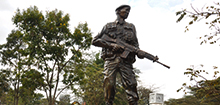
- Research Charter
- Conservation Research Forms
- Research Priorities and Programs
- Priority Ecosystems and Species
- Affiliations and Volunteer Guidelines
- Ecological Monitoring
- Multilateral Environmental Agreements
- Protected Area Management Plans
- Climate Change
- Environmental Impact Assessment
- SPECIES CONSERVATION AND MANAGEMENT DIVISION
- VETERINARY SERVICES DEPARTMENT
- DEPARTMENT OF SPECIES MANAGEMENT
- DEPARTMENT OF CAPTIVE WILDLIFE MANAGEMENT
- CITES IMPLEMENTATION DEPARTMENT
- Community Enteprises
- Community Wildlife Service
- Community projects
- Conservation Forum
- Conservation Education
- Wildlife Security
- SNAKE KEEPING FOR BREEDING AND ECOTOURISM
- National Parks
- National Reserves
- Marine Parks
- Sanctuaries
- Orphanage/Safari Walk
- Hours of Operation
- Interactive Map
- Cashless payment at KWS Parks and Reserves points of access
KWS manages about 8 per cent of the total landmass of the country. This land contains 22 National Parks, 28 National Reserves and 5 National Sanctuaries
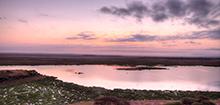
- About Kenya
- Travel Tips
- WHAT TO SEE
- OUR BANDAS & GUEST HOUSES
- OTHER Hotels & Lodges
- Promotions/Deals
- Feedback form
- Investment Procedures
- INVESTMENT OPPORTUNITIES
In Kenya, the environment and tourism have always been inextricably linked, and this is a truly symbiotic relationship
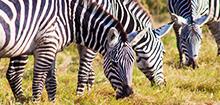
- Beach Management Programme
- Northern Kenya Biodiversity Programme
- Kenya Coastal Development Programme (KCDP)
- Video Gallery
- Photo Gallery
- Press & Media Releases
- Procurement plan 2022-2023 FY
- CONTRACT/TENDER AWARDS
- Annual Reports
Genuine eco-tourism means tourism that has no negative impact on eco-systems, and positively contributes to the destination on a social and environmental level

- Conservation Research
- Visitor Guide
- Press & Media Releases
- Amboseli National Park
- Kws Parks/reserves /
“Home of the African Elephant”
Crowned by Mount Kilimanjaro, Africa's highest peak, the Amboseli National Parks is one of Kenya's most popular parks. The name "Amboseli" comes from a Maasai word meaning "salty dust", and it is one of the best places in Africa to view large herds of elephants up close. Nature lovers can explore five different habitats here ranging from the dried-up bed of Lake Amboseli, wetlands with sulphur springs, the savannah and woodlands. They can also visit the local Maasai community who live around the park and experience their authentic culture.
- Park Activities
How to get there
Attractions.
- Accommodation
- Park Entry Fees
Key features
Protected area type, what to take with you.
- Leopard, Cheetah, Wild dogs, Buffalo, Elephant, Giraffe, Zebra, Lion, Crocodile, Mongoose, Hyrax, Dik- dik, Lesser Kudu, and Nocturnal Porcupine
- Prolific birdlife features 600 species
- Drinking water, picnic items and camping equipment if you intend to stay overnight.
- Also useful are: binoculars, camera, hat, sunscreen, sunglasses and guidebooks
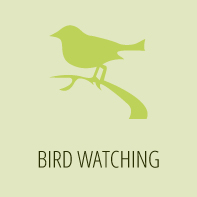
- By Road : The main road into the park is from Nairobi via Namanga (240 km) on the Nairobi - Arusha Road, through Meshanani Gate. The other road is from Nairobi via Emali (228 km) on the Nairobi - Mombasa Road. Access from Mombasa is mainly through Tsavo West National Park via Kimana (Olkelunyiet) Gate.
- By Air : Airstrips: The park has a single airstrip for light aircrafts at Empusel gate. Other airstrips exist at Kilimanjaro Buffalo Lodge and Namanga town
<ul> <li>Large Herds of Elephants</li> <li>Mt. Kilimanjaro</li> <li>Big Five</li> <li>Observation Hill which allows an overall view of the whole park especially the swamps and elephants,</li> <li>Swamp below observation hill hosts many elephants, buffaloes, hippos and a variety of water fowls like pelican, Egyptian goose</li> <li>Contemporary Maasai culture and indigenous lifestyle</li> </ul>
KWS Self Catering
Privately owned lodges, park entry fee.
* Kindly refer to the KWS Conservation Fees document below for other services and charges.
* Modes of Payment; Pay for your entry to any of our Parks or Reserves via eCitizen government platform.
* Create a personal account on the eCitizen Government platform by visiting https://kws.ecitizen.go.ke and make park payments in advance for a fast and convenient park entry.
Park Resources
Email: [email protected]
Mobile: +254 716 493 335
Postal Address:
P.O Box 356 – 00209,
- TRAVEL JOURNAL
- Write for Traveler’s Buddy
- Media content
- Video Content
- Photography and Video content
How to plan a safari in Amboseli National Park in Kenya
Known for being the best place to see mount Kilimanjaro, Amboseli National Park is probably Africa’s best hidden gem for safaris.
Overshadowed by the great Masai Mara in Kenya or the nearby Serengeti National Park in Tanzania, I was surprise to see many travelers skipping a safari in Amboseli National Park in East Africa. This national park not only offers the best views of Mount Kilimanjaro, but it is also home for one of the largest communities of elephants in Africa as well to zebras, lions, cheetahs and buffalo. Wild encounters are 100% guaranteed and no matter if you are a first-timer on your way to your first safari or an old experienced traveler looking to explore something different, Amboseli will leave you in awe.
Magic surrounds you everywhere in Amboseli. Either you go there for the panoramic views, the excellent bird-watching, or to spot these large herds of 30, 40 and even 50 elephants together, Amboseli won’t disappoint. Here is a guide on how to make the most during your visit in Amboseli National Park.
Understanding Amboseli National Park
Located almost 200 km south of Nairobi and situated right next to the border with Tanzania, Amboseli’s accessibility and biodiversity makes it one of the most interesting places to visit during a trip to Kenya.
Experts agree that the sceneries of Amboseli are probably the best in whole Africa and despite its size – way smaller than its bigger cousin, Masai Mara, or other national parks in Kenya like East Tsavo – Amboseli host some of the best animal encounters you can see in the continent.
It has some of the highest concentrations of wildlife during the dry season (June to October and December to March) and some consider it the best spot to see elephants in whole East Africa.
Amboseli’s unique location also adds something special to the mix. Its fresh underground water supply from the Kilimanjaro’s ice cap provides Amboseli with enough water, so wildlife can easily coexist all year round. Additionally, Amboseli offers some of the best sites in the world for birdwatching. Here, it is not surprising to see thousands of flamingo flying around as well large populations of ostriches and other East African birds.
For travelers visiting Amboseli and arriving from Nairobi or Arusha, the best way to explore it is from west to east. The western gates of the national park ( Meshanani Gate or Kiritua Gate ) are located between 70-80 kilometers from the town of Namanga. Furthermore, road conditions are also in very good shape (keep in mind, the road from Namanga to Kiritua Gate is a dirt-road) and there is plenty of accommodation in that area.
Inside the park, off road is forbidden by the authorities (in contrast to Masai Mara) and signalization is excellent. Amboseli is very well organized and very easy to move around without getting lost – something that can be a plus for those interested in doing a self-driving experience.
I visited Amboseli for 3 nights and 4 days and it was enough time to explore everything I wanted and take some incredible memories back home.
Read more: Tsavo, Amboseli or Masai Mara – Which safari park in Kenya should you visit?
Where is the best place to stay in Amboseli
Unlike Masai Mara or Serengeti where location is key when it comes to moving around the national park, Amboseli is small enough that is worth risking location in order to save some money.
Travelers visiting Amboseli can also choose between staying inside the national park or outside the park. Both options are fine and it is important to mention that staying outside Amboseli does not mean risking the quality of the experience.
Accommodation outside the national park
With multiple lodges and camps situated between Kiritua Gate and Namanga, this is probably the best location to stay when visiting Amboseli. Most lodges situated in this side of the park also offer excellent views of Kilimanjaro and depending on how far from the gate you book, you will need 10 minutes or less in order to get into the national park.
Prices for accommodation do not change much outside the national park. Rooms offering breakfast and dinner start at 80 USD a night and for 100-120 USD, you can spurge yourself a little bit without affecting the budget.
Accommodation next to the Meshanani, Ermito and Kimana gates are also available. However, expect long drives into the deep of the national park.
Accommodation inside the national park
Inside the national park, prices get high and quality as well. Amboseli Lodge, Ol Tukai or Serena Lodge offer luxury accommodation in the heart of the park. However, expect prices to easily triple or quadruple for a night.
For those expecting a full luxurious journey, Elewana Tortilis Camp Amboseli is located in the southern part of the park and offers a complete private experience.
But not everything inside Amboseli is luxurious. Amboseli’s public campsite offers camping spots for just 30 USD and if you or your tour operator are traveling with a full camping equipment, this could be a great option to get a different kind of experience.
Amboseli’s public campsite is also the preferred choice for travelers doing self-driving.
Other activities around Amboseli
Beside the game drive activities, there is plenty to do around Amboseli. Even though the national park is too far from Namanga, cultural village tours with the Masai are possible not far away from the entrance gate.
Additionally, travelers interested in the activities the national park itself offers, can also enjoy wonderful experiences such as a night drive for just 20 USD, horse riding for 25 USD and even walking safaris for just 15 USD.
Take into consideration that these are just the fees for these activities. You still need to arrange a guide and vehicle to move around.
Read more: What are the top experiences during a safari trip
Best time to visit Amboseli National Park for a safari
For travelers hoping to see the best of Amboseli in just a few days, the dry season from June to October is generally considered the best time to visit. Waterholes become excellent viewpoints for observation and with the grass low, spotting a lion or a cheetah becomes way easier.
However, dry season in Africa means high season for tourism. Even though Amboseli is not as popular as Masai Mara, expect accommodation to be booked months in advance. Still, Humphrey Ndara, owner of Africa Kenya Safaris and expert in safari experiences in Africa told me. “Even though I recommend booking as soon as you book your flights, it is possible to get accommodation in Amboseli on a short notice all year round.”
Wet season also offers a completely different experience. The sceneries of Amboseli turn green and vibrant and even though the spotting of big cats becomes kind of a difficult task, the herds or elephants roaming will not disappear.
At this time, prices also go down and availability increases. You can end up spending 30-40% less in accommodation and tours.
Read more: How to get ready for your first safari trip?
Self-driving or independent safari in Amboseli
Going on a self-driving experience when doing a safari is kind of a dilemma. The trip is definitely more unique, but finding animals is more complicated and long driving hours become exhausting.
And while self-driving in Serengeti or Masai Mara is not recommended at all, Amboseli is not a bad place to test those driving skills while going on a safari.
All roads in the national park have signalization, the driving conditions are fine for anyone who has driven on gravel road before and most vehicles simply follow other cars when it comes to spotting wildlife.
Self-driving fees do not divert at all from the normal vehicle fees and even though Google Maps is great for finding your way around the park, you can also get a road map at the arrival gate with the rangers.
NOTE: Remember basic etiquette while driving on a national park. Never get out of the vehicle. Do not chase animals in the wild and be cautious about encounters with elephants.
Read more: Self-driving in Serengeti – Is it really worth?
Costs to doing a safari in Amboseli National Park
As I mentioned before, I did a safari in Amboseli National Park on a private tour for four days and three nights.
I balanced my budget between accommodation and days in the national park, and decided to stay for a longer period of time and save money in accommodation.
Since I decided to go on a private safari with a private company, I didn’t have to deal with comparing accommodation prices and calling. I discussed with my tour operator my total budget, my priorities and let her decide what would be the best for me.
In comparison to Masai Mara, Amboseli is way cheaper. Group tours in Amboseli start at 200 USD for 3 days and 2 nights, while private tours for 2 people can start at 100 USD per night per person. The longer you also stay in the park, the cheaper is the tour.
For those looking for a safari experience in Amboseli the best they can do is get in touch with different tour operators, discuss the budget that you are willing to spend in total and arrange the right itinerary based on your needs.
Here is a short list of some trusted local tour operators for safaris in Kenya:
- Africa Kenya Safaris
- Natural World Safaris
- Hyrax Safaris
- Memorable Safaris
- Eyes on Africa Adventure Safaris
Planning a trip to Kenya independently is fun. However, if you want to arrange everything with tour operators beforehand from the comfort of your home. SafariBookings is the best platform for it.
They have the largest database of tour operators in Africa and you can simply send a request and negotiate a tour and a price directly with the operator. You don’t have to pay any additional fees.
These are some of the most popular tours in Amboseli National Park at SafariBookings
How do I find cheap flights to Kenya?
Finding a cheap flight anywhere around the world is not always easy. It’s about comparing platforms, selecting the right routes and booking at the right time. Fortunately, platforms like Skyscanner became known as an all-in-one tool for booking flights at the lowest cost possible.
They analyse every potential company and sub-contractor in order to find the lowest price available for you. Not only that, but you can also select the option “Travel Anywhere” and let Skyscanner find the cheapest place to travel at any selected date.
I check all my flights first at Skyscanner , and in 90% of the cases, I find the best option for me to book.
Also, by booking here using Skyscanner , you will support my blog and help me create more amazing and useful content.
MY FAVORITE NATIONAL PARKS
Saxon switzerland national park, masai mara natural reserve, bwindi impenetrable forest, white desert protected area, victoria falls national park.

Amboseli National Park, Kenya
a visitor’s guide to amboseli national park
Covering 3,810 square kilometers in the Kajiado District of southern Kenya, spreading across the Tanzania border and anchored by the stunning snow-capped peaks of Mount Kilimanjaro, Amboseli National Park is one of Kenya’s most popular safari parks. With breathtaking scenery and plenty of opportunities to see big game year-round, and the park reachable in an hour from Nairobi, it’s easy to see why.
Named after Lake Amboseli, the UNESCO protected park’s unique ecosystem has five main wildlife habitats, ranging from swamps and marshes to thick bushes and a dry lake bed. Although dry and arid, the scenery is lush thanks to the flooding from Lake Amboseli during heavy rainfall, and the melting snows of Kilimanjaro nourishing marshes and springs. Such a diverse landscape means there’s a huge range of wildlife to spot, with over 50 mammals and 400 species of birds to discover.
On the plains, you could see zebra , wildebeest , gazelle , and impala , in the dry bush areas gerenuk and oryx can be found, and small mammals like jackals , hyenas and a range of African monkeys reside in the park. Rare water birds can also be found in abundance in the swamps and lakes – but it’s the big game that’s the big draw here. You could see lions , giraffe , buffalo , elephants , and leopards on a game drive. Head to the eastern area of the park for the best game, close to the Engoni Naibor and Loginya lakes.
The popularity of safari tours means that Amboseli can often be crowded, but the chance to see elephants walking across open safari plains means it’s still well worth the trip.
Amboseli National Park cost
Entrance to the park is $80 per adult per day, and $40 per child per day (aged 3-18 years).
Amboseli National Park highlights
The chance to see elephants up close is second to none in Amboseli. But you’ll need to wake up early. Head to the Ol Tukai and Olokenya swamps before 7am to see them grazing in front of Mount Kilimanjaro. Head to Observation Hill for 360-degree panoramic views over the park and surrounding mountains.
Activities at Amboseli National Park
Walking safaris are not allowed, but many lodges and camps offer nature walks with the native Maasai tribe in the bordering areas and reserves. Horse safaris are also an option if you want to get even closer to the wildlife. Hour-long balloon safaris promise astounding views over the Mara plains.
Getting to AmboseliNational Park
Amboseli is 240km southeast of Nairobi, accessible by a daily flight from Wilson Airport. You can also take a bus from the capital to Namanga on the Tanzanian border (although there is no transport there to the park gates). The only way to get into and around the park is by private vehicle or on a safari tour.
Staying at Amboseli National Park
For luxury: Tortilis Camp For a luxurious safari, stay in Tortilis camp. In the southern area of the park, this tented camp boasts great views of Kilimanjaro. With a busy waterhole below, you can relax with a drink watching the animals get theirs. Other highlights include the swimming pool with breathtaking views and a dining room where you’ll be served food freshly grown on-site.
For authenticity: Porini Amboseli Camp This semi-permanent mobile camp is an hour from Amboseli on Masai land and offers a traditional bush camp experience. Shaded by Acacia trees, Porini truly feels out in the wild – but the Maasai nature walks and game drives mean you won’t miss out on the action.
For families: Amboseli Serena Lodge Situated near a spring and with spectacular mountain views, this family-friendly accommodation is a large safari hotel within the park grounds, with rooms decorated in traditional Masai style.
Kenya national park guides
Aberdare National Park Amboseli National Park Arabuk Sokoke National Park Hell’s Gate National Park Lake Nakuru National Park Malindi Watumu National Park
Read our Kenya safari guide >>
View our Kenya safari company directory >>
Top African parks for wildlife
Aberdare National Park, Kenya
Addo Elephant Park, South Africa
Arabuko-Sokoke National Park, Kenya
- Etosha National Park, Namibia
Fish River Canyon National Park, Namibia
Hell’s Gate National Park, Kenya
- Kruger National Park, South Africa
Lake Manyara National Park, Tanzania
Lake Nakuru National Park, Kenya
Malindi Marine National Reserve, Kenya
- Masai Mara National Reserve, Kenya
Namib Naukluft National Park, Namibia
Nyungwe National Park, Rwanda
Parc National des Volcan, Rwanda
Rubondo Island National Park, Tanzania
Savuti, Botswana
- Serengeti National Park, Tanzania
Skeleton Coast National Park, Namibia
Sperrgebiet National Park, Namibia
Top countries for safaris
- Botswana safaris
- Kenya safaris
- Namibia safaris
- South Africa safaris
- Tanzania safaris
- Uganda safaris
Safari basics
- Safari animals
- How to find the right safari company
- When to go on safari
- What to take on safari
- Safari clothing – what to wear
- Safari rules & etiquette
- Wildlife spotting tips
Most read articles
- All about the ‘big five’ animals
- Collective nouns for animals
- Safari movies to watch before you go
- The world’s fastest land animals
- Apex predators
- 10 Fascinating African tribes
- The biggest animals in the world
- 17 Epic hybrid animals
- The world’s ugliest animals
- Why are flamingos pink?
Africa’s best game reserves
- Chobe National Park, Botswana
- Moremi Game Reserve, Botswana
- Okavango Delta, Botswana
- +256 392 176327
- +256 702 805580
- [email protected]
Amboseli National Park
Imagine massive herds of elephants elegantly dotting on vast empty plains with a backdrop painting of the snow-capped Mount Kilimanjaro, Africa’s highest peak. Amboseli National Park is unquestionably one of the most quintessential wilderness in Africa to watch wild game. Its popularity is only surpassed by Masai Mara. Amboseli’s main attraction is the big herds of elephants that roam the dusty plains in the morning and evening. The park’s elephants carry particularly impressive ivory and are very relaxed around cars.
AMBOSELI NATIONAL PARK SAFARI GUIDE
Amboseli National Park is located in the south of Kenya on the Tanzania border, immediately northwest of Mt. Kilimanjaro and 140 miles (220 km) southeast of Nairobi. It’s one of Kenya’s top safari attractions, right after the Masai Mara National Reserve, synonymous with majestic herds of elephants and glorious views of Mount Kilimanjaro on the Tanzania side.
At dawn, as the cloud cover breaks and the first rays of sun illuminate the snowcapped 5,895-meter (19,340-foot) Kilimanjaro peak, the sky, colored by rosy pinks and soft reds, provides the perfect backdrop for the plains below. It gets even better at dusk when the mountain stands out in stark relief against the fiery sun.
Amboseli has five different habitats: open plains, acacia woodland, thorn scrub, swamps, and marshlands. To the west are the Ol Donyo Orok massif and Lake Amboseli , which is usually dry. But when the heavy rains return, the surrounding area becomes lush again and attracts back migratory birds. Expect some impassable roads during heavy rains and when the lake is completely dry because the fine alkaline dust that blows up from the lake bed is hell for tires. The salty dust is what the Maasai community calls Amboseli .
Amboseli National Park presents more great animals to watch on safari than just elephant herds, including zebra, warthog, giraffe, buffalo, hippo, impala, wildebeest, and baboons galore. Unusual antelopes roam its plains like the fringe-eared oryx and long-necked mini giraffe-like gerenuk. However, the rhino is extinct and your chances of seeing predators are not quite as good as in the Masai Mara .
Maasai hunters once almost killed off Amboseli’s lions because they preyed on their herds of cattle. Still, after many years of tolerance from the local communities, populations have increased steadily, and lucky visitors may spot not only lions but hyenas , jackals , and cheetah , too.
If it’s elephants you’re after, then Amboseli should feature on your Kenya safari adventure . Perhaps the oldest and most studied elephant population in sub-Saharan Africa lives here. There are more than 1,200 of these great pachyderms today, and because they’re accustomed to visitors and vehicles, you’ll experience eyeball-to-knee-high close encounters.
Birdlife is also prolific, with more than 420 recorded species. There are dozens of birds of prey, including more than ten different kinds of eagles. In the swamp areas, which are fed by the melting snow of Kilimanjaro, seasonal flamingo, pelican, and more than 12 species of heron are among the profusion of water birds.
Game-viewing is best around Enkongo Narok , which means “black and benevolent.” This belt of swamps in the middle of the park is home to hippos, numerous birds, beds of papyrus and waterlilies, herbivores coming to drink, and elephants taking baths. At Observation Hill , the Amboseli landmark just to the west of Lake Kioko , you are permitted to park and walk to the top for a surefire opportunity to spot game as you gaze out over the plains.
Getting There & Around
Amboseli is 220 km (140 miles), about four hours drive from Nairobi. There’s no public transportation within the park, and the roads are gravel; a 4×4 is a good idea and essential if it’s wet. The best approach by road is to the gates on the southeastern side of the park via the reasonably new tarred road from Emali on the Mombasa road (A109)—do not take the old route from Nairobi via the Namanga road (A104) as this is now rarely used and in poor shape. Amboseli’s airstrip is served by scheduled flights from Nairobi’s Wilson Airport and Mombasa’s Moi International Airport, some of which go via the Ukunda airstrip at Diani Beach.
January and February, and June through September are the best times to visit Amboseli National Park on a Kenya safari. During the rainy season (April and May), roads might become rough but it’s a favorite time for photographers and birders to be here when everything is green. There might also be slight rain in November and December.
- Large herds of long tasked elephants roam in the shadow of Mount Kilimanjaro.
- Quintessential views of immense Mount Kilimanjaro across the border in Tanzania.
- Share a fascinating cultural moment with the NATIVE Maasai bribe in their villages.
Tailored Masai Mara Safaris

Family Safari Holiday With Teenagers
8 Days | Best for Teenagers Nairobi, Laikipia & Masai Mara
View Safari Idea

Masai Mara & Gorilla Trekking Safari
10 Days | Fly-in Kenya & Uganda Entebbe, Bwindi, Masai Mara, Nairobi

Kenya Family Safari Holiday With Kids
10 Days | Best for Kids 4-10 yrs Nairobi, Masai Mara & Mombasa Beach
View Holiday Idea

Classic Kenya Luxury Safari Holiday
13 Days | Pure Luxury Travel Nairobi, Tsavo, Laikipia & Masai Mara
View the itinerary
WHERE TO STAY

Amboseli Serena Safari Lodge
Price USD 392
Amboseli Serena Lodge is situated beside a natural flowing spring, enjoying spectacular views of Mt. Kilimanjaro and is a good value for money. The lodge balcony has stunning views out onto the plains, and the front of the dining overlooks the waterhole, which gets floodlit at night. However, game drives and activities are not included in the room price, and not all the rooms have views.

Amboseli Sopa Lodge
Price USD 314
Ernest Hemingway’s book The Snows of Kilimanjaro is inspired by his stay around the land on which Amboseli Sopa Lodge was eventually built. The lodge has excellent early-morning views of Kilimanjaro, a great pool with comfy sun loungers, and plenty of wildlife to occupy your gazes, including elephants. However, safari activities are not included in the price, and it’s located a 20-minute drive from the Amboseli entrance.

Ol Tukai Lodge
Price USD 450
Ol Tukai Lodge is a delightful, contemporary retreat sitting within the pristine Amboseli National Park, with spectacular views of Mount Kilimanjaro and the golden plains. The rooms are very spacious, and the large, fenced-in property is excellent for kids. However, game drives, airstrip transfers, and other safari activities are not included in the price.

Porini Amboseli Camp
Price USD 1,110
Set in the remote and game-abundant 15,000-acre exclusive Selenkay Conservancy, a few miles north of the Amboseli National Park, Amboseli Porini Camp offers a classic safari camping in an area famous for both resident migratory wild game. The camp is entirely locally owned, eco-friendly, and highly benefits the local community and is eco-friendly. However, children under eight are not permitted.

Tortilis Camp Amboseli
Price USD 1210
Tortilis Camp Amboseli is a rustic bush camp named after the flat-topped Acacia Tortilis trees surrounding the main thatch-roof open bar, lounge, and dining room. These overlook a waterhole with superb views of Mt. Kilimanjaro and Mt. Meru in neighboring Tanzania. The camp has an excellent library, access to lots of elephants, and incredible birdlife. However, the tents are accessed by steep steps, and it’s about a 45-minute drive to Amboseli’s central swampy regions.

Satao Elerai Camp
Price USD 434
Satao Elerai Camp is an exclusive and eco-friendly game lodge set on a five 5,000-acre private conservation area on the border of Amboseli National Park. The lodge forms part of the community-owned Elerai Conservancy, and you have the opportunity to walk alongside Maasai warriors in search of elephants, giraffes, zebra,s, and other wild game as they herd their prized cattle to grazing grounds.
Kenya Travel Essentials
Travel safety.
Kenya is a relatively safe country, but occasional crime incidents are a reality for residents and tourists alike; follow these basic precautions for a safe trip.
Mugging, purse snatching, and pickpocketing can occur in big towns. Leave good jewelry and watches at home, and unless you’re on safari, keep cameras, camcorders, and binoculars out of sight. Always lock valuables in the hotel or lodge safe. If you must carry valuables, use a money belt under your clothes; keep some cash handy, so you don’t reveal your money belt in public. Don’t leave belongings out on balconies or terraces or show them in a vehicle. If you’re unfortunate to be a robbery victim, you will need a police report to make an insurance claim. Please bring copies of all your essential documents and stash them away from the originals. Carry extra passport photos in case you need new documents fast.
Always take a taxi after dark, and never take food or drinks from strangers—it could be drugged. Be on the lookout for street scams like hard-luck stories or appeals to finance a scholarship. If you’re driving, be polite but firm if you’re stopped by police officers charging you with an “instant fine” for a minor infraction. If you ask to go to the police station, the charges are often dismissed.
The best of Kenya safari attractions are nowhere near the terrorist zones in the northern and northeastern borders that have been for a long time restricted to tourists. Exercise increased caution in the terrorist strongholds on the northern border due to crime, terrorism, and kidnapping. These incidents occur very far from the premier tourism attractions. You’re much safer on a game drive in a Masai Mara than driving your car on a multi-lane turnpike.
The Kenyan Government deals with the international terror threat in much the same way as other modern countries. You’ll find strict security at airports and visible policing in places like shopping malls and outdoor markets, ensuring it is safe to visit Kenya.
In some instances, you’ll fly out of Nairobi immediately after landing, heading to the Samburu, Masai Mara, Amboseli, or any other attraction. Our staff traveling to Kenya regularly, staying in both Nairobi and the Masai Mara with travelers, have reported high airport security levels. Some hotels in the capital city have instituted security measures for additional peace of mind and ensure it is safe to visit Nairobi.
COVID-19 Restrictions
Starting May 9th, 2023, proof of COVID-19 vaccination or a negative COVID-19 PCR test will no longer be required for entry into Kenya by the Government. However, travelers with flu-like symptoms will need to take a rapid antigen test at their own expense using 30 USD. If they test positive on the antigen RDT, they must take a PCR test at their own expense using 50 USD and follow the Ministry of Health’s isolation guidance. Those with severe symptoms will follow the isolation requirements for mild, moderate, and severe disease. Any traveler entering Kenya with flu-like symptoms must fill out the passenger locator form on the ‘jitenge’ platform at https://ears.health.go.ke/airline_registration/ . Additionally, they may need to take a rapid antigen test at their own expense, regardless of age or vaccination status. You can find more information regarding the Government of Kenya’s coronavirus entry requirements on the Kenya Civil Aviation Authority website.
Health & Vaccination
Before you go to Kenya, make sure all your routine vaccinations are up to date. The risk of malaria is low during Green Season and very low during peak season. It is higher if you are going into rural areas and villages outside the parks and reserves. If you are going scuba diving afterward, be sure to let them know to ensure they prescribe the correct prophylactic. Check with your travel doctor if you need vaccinations, and be sure to get them timeously.
Yellow fever (before 2013)
The country requirement at entry: a yellow fever vaccination certificate is required for travelers aged one year or over arriving from countries with a risk of yellow fever transmission. WHO vaccination recommendation: yes
We recommend for all travelers aged nine months or over, except as mentioned below and generally not recommended for travelers whose itineraries are limited to the following areas: the entire North Eastern Province; the states of Kilifi, Kwale, Lamu, Malindi, and Tanariver in Coastal Province; and the cities of Nairobi and Mombasa.
Malaria (before 2018)
Malaria risk due predominantly to P. falciparum exists throughout the year in the entire country. Usually, there is little risk in Nairobi and the highlands (above 2500 m) of Central, Eastern, Nyanza, Rift Valley, and Western provinces. WHO recommended prevention: C
Always use sunscreen and bug repellent with DEET. The HIV infection rate is high, so exercise caution. Malaria is an issue in certain areas (not in Nairobi but definitely on the coast and low-lying game reserves). Consult your health provider well in advance about the best malaria prophylactics to take, as most medication needs to start before arrival in Kenya.
You’ll need full medical travel insurance that includes repatriation in the event of a medical emergency. If you plan to dive, trek, or climb, make sure your insurance covers active pursuits. Medical bills are often paid upfront in Kenya, so keep all paperwork to make an insurance claim.
The AMREF Flying Doctors service provides air evacuation and transportation between health-care facilities for medical emergencies in Kenya, Tanzania, and Uganda, or anywhere within a 1,000 km (621 miles) radius of Nairobi. The planes fly out of Nairobi’s Wilson Airport 24 hours a day, 365 days a year.
Phones & Internet
Local landline and mobile calls are pretty cheap, but hotels add hefty surcharges to phone calls. The need for public telephones in Kenya has fallen away, given that the majority of people carry a mobile phone, so most have been decommissioned or removed. If you don’t want to use your mobile phone because of expensive international roaming fees, buy a Kenyan pay-as-you-go SIM card (from one of the service-provider stores or street vendors—there’s no shortage of them) and add airtime as you need it. The local providers are Airtel, Safaricom, and Telkom. Coverage is good throughout most of the country but can be patchy in remote places—don’t expect to get a signal at an out-of-the-way safari lodge or camp.
Calling Within Kenya
City codes are (020) for Nairobi, (041) for Mombasa, (040) for Diani Beach, and (012) for Lamu; include the first 0 when you dial within the country. When making a phone call in Kenya, always use the full 10-digit number, including the area code, even if you’re in the same area.
Calling Outside Kenya: When dialing out from Kenya, dial 000 before the international code. So, for example, you would dial 000 (0001) for the United States. Other country codes are 00044 for the U.K and 00027 for South Africa.
Internet is widely available in Kenya. Free Wi-Fi is available in many public places in Nairobi and Mombasa such as restaurants and coffee shops and at almost all hotels—although again, in remote places you won’t be able to connect. You can top up your own phone with data on a Kenyan pay-as-you-go SIM card.
Restaurants
Kenya prides itself on game meat and seafood, organically grown vegetables, and excellent tropical fruits (such as passion fruit, papaya, and mangoes). When you’re near the coast, sample traditional Indian and Arabic food and look for Kenyan-grown tea and coffee and Tusker beer, a local brew.
“Swahili tea” is very similar to chai in India. You’ll find most cuisines, from Chinese to French to Ethiopian, in restaurants in Nairobi.
How To Get There
Kenya’s main airport is Jomo Kenyatta International Airport (NBO) , located 15km/9mi southeast of Nairobi. Kenya’s second international airport is Moi International Airport (MBA) , located 9km/6mi west of Mombasa, but aside from flights to Zanzibar, this is mainly used for domestic and charter flights. From Nairobi or Mombasa, one can fly or drive between reserves or opt to do a bit of both. Most domestic flights out of Nairobi depart from Wilson Airport (WIL) , 6km/4mi south of Nairobi.
In Kenya, several domestic and regional airlines fly from Jomo Kenyatta International Airport and Wilson Airport in Nairobi, and Moi International Airport in Mombasa. Several major towns have airports, and Kenya also has a vast network of well-maintained airstrips at the safari destinations. One airstrip will service an entire park or reserve, or in some parks like the famous Masai Mara, there are several airstrips that each serve a group of safari lodges and camps.
In most cases, transfers are provided from the airstrip to your accommodations . Schedules for the Kenya safari airlines often work in circuits and drop off and pick up at several destinations and may often return on the same route.
Search within Kenya Airways (the national carrier), Virgin Atlantic, or British Airways for direct affordable flights to Kenya.
There are plenty of efficient domestic airlines offering daily flights. Kenya Airways flies between Nairobi JKIA and Eldoret, Kisumu, Malindi and Mombasa, and several regional destinations, including Entebbe in Uganda, Kigali in Rwanda, and Kilimanjaro, Dar es Salaam, and Zanzibar in Tanzania. Kenya Airway’s no-frills airline, Jambojet, flies between Nairobi JKIA and Diani Beach (Ukunda), Eldoret, Kisumu, Lamu, Malindi, and Mombasa. Fly540 flies from Nairobi JKIA to Eldoret, Kisumu, Lamu, Lodwar, Malindi, Mombasa, Kilimanjaro, and Zanzibar in Tanzania. From Nairobi’s Wilson Airport, Airkenya flies to Amboseli, Diani Beach (Ukunda), Lamu, Lewa Downs, Loisaba, Malindi, the Masai Mara, Meru, Nanyuki, and Samburu, and Kilimanjaro in Tanzania.
Mombasa Air Safari has its hub at Moi International Airport. It flies in circuits from Mombasa, Diani Beach (Ukunda), and Malindi on the coast to Amboseli, the Masai Mara, and Tsavo West. Also from Wilson Airport, Safarilink flies to Amboseli, Diani Beach (Ukunda), Lamu, Lewa Downs, Lodwar, Loisaba, the Masai Mara, Naivasha, Nanyuki, Tsavo West, Samburu, and Kilimanjaro, and from the Masai Mara to Migori, which links travelers from the Mara to the Serengeti National Park in Tanzania .
Suppose you want to arrange your timetable to the safari destinations or coast. In that case, there are several air charter companies based at Nairobi’s Wilson Airport, such as East African Air Charters and Reliance Air Charters. Small planes like Cessnas are utilized, which can seat 5–13 passengers. Although more expensive than scheduled flights, charters are convenient and are an option for families and groups.
All domestic, regional, and charter flights can be booked directly with the airlines. Alternatively, ask your travel agent, or local accommodation, or a Kenyan tour operator to book as part of your package. Airport departure tax is included in all scheduled flight tickets but maybe additional on charter flights.
Be aware that the baggage allowance is usually 15 kg (33 pounds) per person on the small planes to the airstrips in the parks, including hand luggage and camera equipment, and bags should be soft-sided. If you are carrying more than this, most hotels in Nairobi will store extra luggage or ask your airline if they have facilities.
Whichever mode one chooses for travel, in most cases, our local driver or guide will pick you up at the airport and all further transportation as part of the Kenya safari package.
Self-drive Kenya safaris are an option; however, poor road conditions in many places mean there’s often a big difference between distance on a map and driving time. For example, it takes about five hours to drive from Nairobi to the Masai Mara, a 150-mile/240-km journey. Several car rental companies specialize in 4x4s, and most will also offer the services of a driver. Expect to pay $110 a day to hire a 4×4 and $20 a day for a driver.
Passport & Visa
All arriving passengers into Kenya now must apply and get their Visas online; this is a much easier method which saves you time from embassy visitations or long ques that use to be for those who opted to get these on arrival at our airports.
The e-visa can be obtained through an online system. For questions or concerns, please visit Kenya Immigration’s website .
- Your passport must have at least two blank pages and be valid for a minimum of six months after your date of entry into Kenya. Most nationalities require a visa, including citizens of the United States.
- Single-entry visas are available online. Multiple-entry visas must be applied for prior to traveling to Kenya. Single-entry visas (US$50) are valid for three months and allow reentry to Kenya after going to Tanzania and Uganda. Children under 16 years accompanying their parent(s) do not require visas.
- Obtain the latest information on visas, as well as any additional details regarding entry requirements, from the Embassy of Kenya, 2249 R Street, NW, Washington, D.C. 20008, telephone (202) 387-6101, or the Kenyan Consulates General in Los Angeles and New York City.
- You should have proof of yellow fever immunizations, or you may be denied entry.
Best time for Kenya Safari
When is the best time for a kenya safari holiday.
Generally, a Kenya safari is an all-year-round holiday. Traveler base on many options to tell when the best time is for a safari in Kenya. A traveler can consider how much they’re willing to spend, which places they’ll be visiting and how much time you have on your calendar fixed for the trip.
Most Kenya Safari attractions are showcasing their best during wildlife drama and action between January through March. During this time, the climate is friendly, mostly no rains, and wildlife viewing is climaxing. The dry season is the peak season for a safari in Kenya. Everyone else also considers this the best time for a Kenya Safari trip.
However, mid-March’s downpour through June and October through December, the rainy season, is mostly avoided by travelers. But we would urge you to travel during this time if you want to avoid the crowds and take advantage of off-season discounts.
When is the best time for the great migration in Mara, Kenya?
The best time for viewing the great migration in Masai Mara on a Kenya safari is between mid-August and late October when the wildebeest and zebra herds cross the border from Serengeti National Park. It’s not easy to accurately tell when the migrating animals will be crossing the Mara river, but it’s sometime between August and October. There’s no wildebeest movement from January through to June in Masai Mara. So that should help you narrow down your calendar options.
When is the best time to visit Kenya’s coastal beaches?
The best time to visit Kenya beach destinations is a moot point: Kenya’s Indian Ocean coast is hot and humid all year round, and rain can fall at any time. However, we would recommend avoiding the Kenyan coast during the mid-March to late May season when temperatures and rainfall are highest.
Money, Banks & Tipping
The official currency is the Kenya shilling (KSH) . Available notes are 50, 100, 200, 500, and 1,000 shillings. Available coins are 1, 5, 10, and 20 shillings.
Most things are priced and paid for in KSH. However, many businesses in the tourist industry like hotels, safari companies, and airlines may quote in U.S. dollars and shillings. If you pay with dollars, check that you’re getting a fair exchange rate.
If you exchange U.S. dollars at a bank or bureau de change, bring new notes; any old, worn, or damaged bills will not be accepted.
ATMs and Banks
Banks open at 8:30 on weekdays and close at 4; on Saturday, they open at nine and close at noon. Banks are closed on Sundays and public holidays. Most ATMs are open 24 hours.
Many banks can perform foreign exchange services or international electronic transfers. Try to avoid banks at their busiest times—at nine and from noon to 2 on Friday, and at month’s end—unless you’re willing to arrive early and line up with the locals. Major banks are Kenya Commercial Bank (KCB), which has the largest branch network in the country, and Barclays, National Bank of Kenya, and Standard Chartered.
Credit cards are widely accepted, but for small amounts like restaurants, shopping, taxi fares, fuel, and tips, it’s easiest to withdraw shillings from an ATM once you’re in the country. Most ATMs dispense large denomination notes; try and break these when you can as taxi drivers and souvenir vendors often don’t have change for large bills.
Major credit cards such as Visa and MasterCard are accepted at Kenyan banks and by ATMs. Most ATMs accept Cirrus, Plus, Maestro, Visa Electron, Visa, and MasterCard; the best place to withdraw cash is at an indoor ATM, preferably at the airport, in a shopping mall, or guarded by a security officer.
Tipping in Kenya isn’t mandatory, but porters do expect something, and 10% is customary in restaurants. Some hotels and most safari lodges and tented camps have a gratuity box for you to put a tip for all of the staff at the end of your stay. Tip your safari driver and guide approximately US$10–US$15 per person, per day. It’s not necessary to tip taxi drivers as the fare is determined before you set off.
Hotels, Lodges & Camps
Kenya has a broad choice of safari accommodations ranging from intimate tented camps and l uxurious boutique hotels to mid-range safari lodges and beach resorts as well as local lodgings and campsites. Hotel rates in Nairobi and other towns tend to stay the same throughout the year (although there could be midweek specials), but all room prices in the wildlife and coastal areas are seasonal. It’s essential to book in advance in the high season and look out for specials during the low season, while during rainy months.
There’s a bewildering choice of safari lodges and tented camps in the national parks, game reserves, and wildlife conservancies. Lodges tend to be large solid structures with hotel-like rooms and restaurants. Most are family-friendly, and many have extra facilities like a swimming pool. Smaller tented camps have spacious and often luxuriously appointed walk-in tents with bathrooms, meals are taken communally in a dining tent or outside, and most are unfenced, allowing for greater connection with the wildlife (as such, children aren’t always permitted).
Prices at lodges are almost always all-inclusive, which includes accommodations, meals, and activities such as game drives and walks; find out in advance if park fees (US$40 to US$100 per day) are included. Campsites in the wildlife areas have few or no facilities and aren’t an option for visitors with time restrictions or first-timers. Still, there is the option of going on a camping safari with a tour operator.
Nairobi has hundreds of hotels, and many international chains are represented, but there are also charming independent hotels and some older establishments with colonial ambiance. All kinds of accommodations can be found on the coast, from luxurious honeymoon hideaways to all-inclusive family beach resorts. On Lamu, some beautifully restored historic Arabic houses have opened as hotels. Standard prices usually include a full English breakfast, and other meals are available in the hotel’s restaurant. Hotel reviews have been shortened.


Amboseli National Park
Quick navigation.
Amboseli National Park is in Kenya near the border of Tanzania . The park encompasses 151 square miles (392 sq km). It is part of the larger ecosystem that stretches across Kenya and Tanzania covering an area of 3,100 square miles (8,000 sq km).
Mount Kilimanjaro , the rooftop of Africa, crowns this protected area. Amboseli National Park was formerly recognized as Masai Amboseli Game Reserve. It is situated in the Kailado County of southern Kenya. This national park protects two swamps and the plains from the foothill of Mount Kilimanjaro.
Amboseli is comprised of five different wildlife habitats. These include open plains, yellow-barked acacia woodlands, Lava-strewn rocky thornbush, swamps, and marshes. The Oldoinyo Orok massif stretching toward the skies reaching a height of 8,300 feet (2,760 m).
The collective groups of habitats create an abundance of scenic landscapes that are all capped-off with views of Mount Kilimanjaro. Amboseli National park is accompanied by an expanse of the skies stretching from horizon to horizon. The nights are filled with amazing opportunities for star-gazing.
Amboseli National Park is a safari destination with an array and abundance of wildlife to experience. The majority of people traveling to Amboseli and looking for safari and wildlife encounters. A pinnacle highlight is seeing wildlife with a clear view of Mount Kilimanjaro framing the background of the scene.
The long dry season creates excellent opportunities to experience animals visiting the swamps and various watering holes. Along with the herds of elephants, wildlife enthusiasts can hope for sightings of lion, cheetah, hyena, jackal, mongoose, giraffe, cape buffalo, warthog, baboon, monkeys, zebra, impala, different species of gazelle and more. The primary wildlife viewing area occurs in the eastern half of the park.
It is possible that within a single morning game drive through the eastern area, safari-goers may encounter lion, leopard, cheetah, black rhino, elephant, buffalo, and giraffe. Along with these sought after species, you may have sightings of eland, waterbuck, and zebra. Amboseli is a great place for experiencing the wilds of Africa.
Bird lovers will find a paradise of over 400 species of birds. There are 47 raptor species of birds as part of the highlights from the skies in Amboseli National Park. Although different species of birds may be experienced throughout the park, one of the best places to encounter birds is in the lake, marsh, and swamp areas.
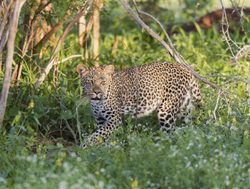
Amboseli offers one of the most stunning and picturesque views of Mount Kilimanjaro. Although the mountain is located in Tanzania , the best views of Kilimanjaro occur in Kenya . When you search for images of the mountain, many of the images are created from the Kenya viewpoint and almost all of those are from within Amboseli National Park.
There are over 1,000 roaming elephants that serve as one of the draws of the park. Apart from the elephants, many people have hopes of seeing some of the predator species which include lion, cheetah, and hyena. There are over 80 different mammal species that are complements to the elephants and predator species.
One of the intriguing wildlife experiences is when the elephants are feeding in the swampish grasslands as they wade through above their legs. They are nature's little bulldozers.
Amboseli National Park Accommodations
Tortilis camp.
Silverless-6.jpg?width=1000)
The Elewana Tortilis Camp is one of the best places to stay for your Amboseli national park experience featuring views of Mount Kilimanjaro from your luxury en suite tents.
Elerai Camp
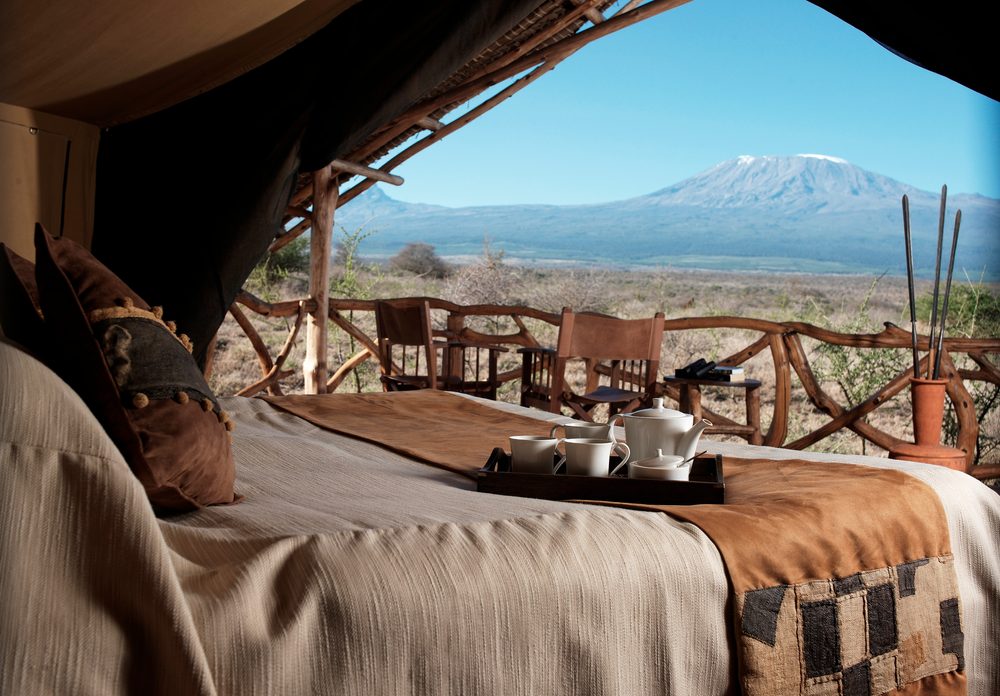
Elerai Camp offers luxury tents and en suite lodging accommodations that are nestled on the plains just outside Amboseli National Park with breathtaking views of Mount Kilimanjaro.
Amboseli National Park Trails
Amboseli is wildlife wilderness with predator species roaming throughout the park. There are no hiking trails within the area. However, there are guided walking safaris that allow visitors an opportunity to have a more intimate encounter with the nature of the park.
Park Protection
Amboseli National Park was established to protect the wilderness at the base of Mount Kilimanjaro where wildlife roams. The terrain is home to over 400 species of birds and abundant wildlife including the renowned Big 5. The park has over 1,000 elephants roaming in the grasslands and marshes.
Amboseli Highlights
- One of the most aesthetically beautiful views of Mount Kilimanjaro
- Amazing encounters with free ranging herds of elephants
- Amboseli, https://www.amboseli.com/ , retrieved July 2019.
- Kenya Travel Tips, https://www.kenyatraveltips.com , retrieved July 2021.
- Kenya Wildlife Service, Amboseli National Park, http://www.kws.go.ke/amboseli-national-park , retrieved July 2019.
- Lonely Planet, Amboseli National Park, https://www.lonelyplanet.com/kenya/southern-kenya/amboseli-national-park , retrieved June 2020.
- Magical Kenya, Amboseli National Park, https://magicalkenya.com/places-to-visit/wilderness-areas/amboseli-national-park/, retrieved June 2020.
- The Sane Travel, 7 Reasons to Visit Amboseli National Park, https://thesanetravel.com/travels/kenya/reasons-to-visit-amboseli-national-park , retrieved June 2020.
William, J.G., National Parks of East Africa, HarperCollins Publisher, 1995.

Amboseli National Park

Sub regions inside
Broader region.

Amboseli National Park is one of the most popular tourist destinations in Kenya . It is home to a variety of wildlife, including elephants, lions, cheetahs, giraffes, zebras, and more. The park also offers stunning views of Mount Kilimanjaro, the highest mountain in Africa. Visitors can enjoy a variety of activities, such as game drives, bird watching, and guided walks. The park is also home to a variety of cultural attractions.
The wildlife in Amboseli National Park congregate around very few watering holes during the dry season and disperse when the rains increase the availability of water throughout the park. The average temperatures in the park are moderate throughout the year. Little to no rainfall occurs during the dry season from July to October, this is the best time to consider travelling to Amboseli Park. Dry season is peak tourist season, as the wildebeest migration in Masai Mara brings visitors from around the world, many of those combine the trip with a stay in the Amboseli Park.
The name "Amboseli" comes from a Maasai word meaning "salty dust", and it is one of the best places in Africa to view large herds of elephants up close. Nature lovers can explore five different habitats here ranging from the dried-up bed of Lake Amboseli, wetlands with sulphur springs, the savannah and woodlands. They can also visit the local Maasai community who live around the park and experience their authentic culture.

Apr 28, 2024
Great service
Great service. The staff are so helpful and accomadating. I would highly recommend them.
Shann was great
Shann was great. Answered all questions promptly and setup the trip to Kruger last minute for us with ease.
Shann was amazing
Shann was amazing. Really knowledgeable and helpful. Nothing too much trouble.
Apr 27, 2024
Anja is awesome!
Anja is awesome!! She went above and beyond for me as I had several changes until I locked in my bucket list itinerary and then my friend cancelled. She wasn't mad and just went about cancelling her portion which saved me money in the long run. Anja is a true professional regardless and I have been dealing with her since Sept 2023. Cannot wait until my trip in Sept 2024.
Apr 26, 2024
Shann was beyond amazing
Shann was beyond amazing. Listened to our needs, communicated super-efficiently and gave really honest excellent advice. She was so patient, kind and professional. The time difference across the globe made no difference. I am so excited for the itinerary she has put together. I usually cobble my own itinerary together for our holidays and it’s so time consuming and hard work. This was a piece of cake! Thank you Shann.
Great planning and service
Great planning and service, and everything worked like clockwork. We booked an Inyari Lodge safari with air with Safari.com. it wasn't clear if there will be 2 or three of us, so with Candis' help we booked a family chalet for 2 and added the third later when it was confirmed he can come. Candis put us on flights that maximized our game drive time (unlike some of the other guests) so we got all 6 drives in 3 nights. The lodge was great. Especially the game drives. We saw more than we hoped for. Additionally, Safari.com's insurance was very competitive. Highly recommended.
Apr 24, 2024
Kim helped us for the details of trip…
Kim helped us for the details of trip planning.
Apr 23, 2024
Shann was amazing , great prompt service and went above and beyond to meet our travel requirements.
Apr 22, 2024
My experience with safari.com is always…
My experience with safari.com is always incredibly, pascal made happen my dream again. He is the best always answering questions and making everything perfect.thank you again pascal, can’t wait to tell all about my second trip to Africa in October.

- +254 712683442
AMBOSELI NATIONAL PARK
Endless elephants.

Lions? Leopards? And Chimps
- It’s one of the best spots in Africa for seeing great herds of free-ranging elephants
- The park sits at the foot of world-famous Mt. Kilimanjaro – the tallest mountain in Africa and the highest free-standing mountain in the world
- Amboseli teems with wildlife- lion, cheetah, wildebeest, Masai giraffe, zebra, buffalo and so much more
- The mighty tuskers parading before the towering snow-capped mountain are a photographer’s dream – it’s hard to take a bad photo at Amboseli

Under Amboseli’s Big Sky
The big sky and scattered brush here shelter a wonder of wildlife waiting to be discovered. You’ll find small mammals like jackal, hyena, fox, monkey, and baboon.
The park’s active marshes also offer sightings of kingfisher, egret, pelican, heron, and raptors – a total of 370 bird species.
And standing sentinel over it all, the massive form of Kilimanjaro rises through the clouds to over 5895 m (19,000 ft). Though partly obscured during the day it is not uncommon for the mist to disperse at dawn or dusk leaving stunning views of its snow-capped summit.
Home of the Maasai
At Amboseli, you’ll have the opportunity to meet the indigenous Maasai people in their local village. This can be a moving cultural encounter, learning how these ancient herders tend their livestock and live off the land. You may even get to experience their rituals and ceremonies and perhaps their traditional jumping dance.

Riverine Forest
Things to Do in Amboseli National Park

Elephant Research Camp – The great numbers of elephants here present wonderful research opportunities. Located in the heart of the park, the camp continues to carry out the work of Dr. Cynthia Moss who studied the great pachyderms who became the subject of many books and documentaries.
Ol Okenya Swamp – You’re guaranteed to spot the free-ranging elephants of Amboseli as they are so plentiful. This is a favorite place to see them during the day foraging and enjoying the cool waters of Ol Okenya Swamp.
The Maasai People – Don’t miss visiting one of the several Maasai villages in the area. Your Africa Kenya Safari guide can easily arrange a visit to meet and learn about these pastoral people. You may even want to purchase some of their beaded work as a souvenir.
Observation Hill – This is a great spot to leave your safari Jeep and stretch your legs – you’ll be rewarded with scenic vistas of the park’s lakes, marshes, and plains… and the wildlife inhabiting them. Of course, the views of Mt. Kilimanjaro are equally captivating.
Sinet Delta – Amboseli is much more than just fabulous elephants. Head to this delta for the finest birdwatching in the area. Plus, you’ll find more photogenic views of Kilimanjaro to the south.

Community Projects
These reserve-based projects help the livelihoods of the nearby rural communities.
- Education for local students, including computer skills training
- Healthcare – providing medical supplies to the local health centers and mobile clinic
- Energy – providing hundreds of local families with energy-efficient stoves – reducing the need for firewood.
Ol Pejeta Eco-Facts
- Sanctuaries to protect endangered chimpanzees, oryx, hartebeest, Grevy’s zebra, and bat-eared fox
- Home to the world’s last remaining northern white rhinos
- The largest black rhino sanctuary in East Africa – the rhino population has increased by over 100 in the last 25 years.

Survey: Amboseli Park
Amboseli is not one of Kenya’s larger parks but that just makes it easier to spot the wildlife with its greater concentration of species. The park is just 392 sq. km (151 sq. mi).
Location: Set on the Kenya/Tanzania border, the park resides in the shadow of Mt. Kilimanjaro to the south.
Climate : Daytime temperatures are about 28 0 C/82 0 F which makes for a mild to warm safari experience. The park tends to be on the drier side.
Best time to visit: The dry season (June – October) presents the best viewing as the brush is thinner and allows more visibility of the wildlife.
Operating Hours: Amboseli is open year-round from 6:00 am to 6:00 pm, daily.
Getting there : The easiest way is to book a tour with Africa Kenya Safaris. We’ll take you there in style – a specially outfitted 4 x 4 Safari Jeep.

This is Amboseli National Park
This is the land of the Giants – great herds and magnificent vistas. And then there’s the grandeur of Mt. Kilimanjaro. An easy journey from Nairobi, come to Amboseli to discover its rich eco-systems and the colorful birds and wildlife that make this popular park their home.

Join us at Amboseli
Africa Kenya Safaris has several safari adventures to Amboseli ranging from one day to several, or as part of a larger tour. Just contact us to get your safari started.
Here are some of our Amboseli tours:

Let’s Get Started
Amboseli National Park Facts
Want to discover more about amazing Amboseli? Our quick Q&A guide will help you with Amboseli National Park facts and information on its wildlife, climate, history, and just what makes it an unmissable safari destination!
Where is Amboseli National Park?
Amboseli National Park is a famous wildlife conservation area located in the southern part of Kenya, near the border with Tanzania. This iconic park covers an area of 392 square kilometres and is home to a wide range of wildlife species, including over 80 species of mammals and over 400 species of birds. The park is located at the foot of Mount Kilimanjaro, which is the highest peak in Africa and one of the highest free-standing mountains in the world.
Amboseli Location and Access
Amboseli National Park is situated in Kajiado County, which is in the southern part of Kenya. The park is located about 240 kilometres south-east of Nairobi, the capital city of Kenya. Visitors can access the park via road or air. If traveling by road, it takes about 4-5 hours to drive from Nairobi to Amboseli National Park. Alternatively, visitors can take a flight from Nairobi to Amboseli Airstrip, which is located within the park.
The Park’s Unique Features
One of the most striking features of Amboseli National Park is the stunning backdrop of Mount Kilimanjaro. The snow-capped peak of Africa’s highest mountain provides a stunning contrast to the park’s dry, dusty plains. Amboseli is also known for its large herds of elephants, which are some of the most photographed animals in the world. The park is also home to other wildlife species such as lions, cheetahs, zebras, giraffes, buffaloes, and various species of antelopes. Bird enthusiasts can also spot a variety of birds such as kingfishers, weavers, and pelicans, among others.
Discover Maasai Culture
In addition to the wildlife, Amboseli National Park also offers visitors a chance to experience the Maasai culture. The park is located in an area where the Maasai people live, and visitors can learn about their traditional way of life and interact with them. The Maasai are known for their vibrant culture, unique dress, and their co-existence with wildlife.
How big is Amboseli National Park?
Amboseli National Park is one of Kenya’s most popular national parks and is located in the southern part of the country near the Tanzanian border. The park covers an area of 392 square kilometres (151 square miles) and is part of the larger Amboseli ecosystem.
Comparing Amboseli National Park
To put the size of Amboseli National Park into perspective, it is roughly the same size as the city of San Francisco in the United States. However, despite its relatively small size, the park is home to an abundance of wildlife and offers visitors a chance to see a wide range of animals in their natural habitat.
Geographical Features of Amboseli National Park
The landscape of Amboseli National Park is dominated by the stunning Mount Kilimanjaro, which is the highest peak in Africa and the highest free-standing mountain in the world. The park is also home to several swamps, which attract a variety of animals, including elephants, buffalo, and hippos. The park’s unique combination of grassy plains, wetlands, and woodlands provides a diverse range of habitats for wildlife, making it an ideal safari destination.
How far is Amboseli from Nairobi?
Amboseli National Park is situated in the southern part of Kenya, close to the border with Tanzania. The park is located about 230 km from Nairobi, the capital city of Kenya. The distance between Nairobi and Amboseli National Park can be covered by both road and air transport. The driving time from Nairobi to Amboseli is approximately 4-5 hours, depending on the mode of transportation and the route taken.
Safari Packages to Amboseli National Park from Nairobi
Africa Kenya Safaris is a tour operator based in Nairobi that offers a range of safari packages to various destinations in Kenya, including Amboseli National Park. One of the popular packages is the 3-Day Amboseli Safari , which starts and ends in Nairobi. The package includes accommodation, transport, park fees, and game drives. Guests can expect to see a wide range of wildlife such as elephants, lions, cheetahs, wildebeests, zebras, and many more.
Another package offered by Africa Kenya Safaris is the 4-Day Amboseli and Tsavo Safari . This package includes visits to both Amboseli and Tsavo East National Parks. Visitors can expect to see the famous herds of elephants in Amboseli as well as the diverse wildlife in Tsavo East, including the ‘red elephants’. The package includes accommodation, transport, park fees, and game drives.
Where can I stay in Amboseli National Park?
Amboseli National Park offers a range of accommodations to suit different tastes and budgets. There are various lodges, tented camps, and campsites located both inside and outside the park.
Safari Lodges in Amboseli
Inside the park, there are several options for visitors who want to experience the wildlife up close. One of the most popular lodges is the Amboseli Serena Safari Lodge, located on a hill overlooking the park. The lodge has 96 rooms, each with a private balcony that offers stunning views of Mount Kilimanjaro. Another popular option is the Tortilis Camp, which has 17 luxury tents nestled in a shady acacia grove.
Lodges and Campsites Near Amboseli
For visitors who prefer to stay outside the park, there are several lodges and campsites located in the surrounding areas. One of the best options is the Ol Tukai Lodge, located on a 20,000-acre wildlife sanctuary bordering the national park. The lodge has 80 chalet-style rooms, each with its own private veranda with views of the park and Mount Kilimanjaro.
Book Safari Packages with Budget or Luxury Accommodation
Africa Kenya Safaris offers a variety of safari packages that include stays at various accommodations in and around Amboseli National Park. These packages range from budget camping safaris to luxury lodge safaris, and include game drives, guided walks, and cultural visits to local Maasai communities. Visitors can choose from packages that range from 2 to 10 days, depending on their interests and time available.
When is the best time to visit Amboseli National Park?
Amboseli National Park is a popular destination for tourists and wildlife enthusiasts. The best time to visit Amboseli National Park is during the dry season from July to October and January to February. During this time, the weather is pleasant, and the wildlife is easy to spot because they gather around the water sources. Visitors can witness the iconic views of Mount Kilimanjaro, the highest mountain in Africa, with clear blue skies in the background.
Rainy Season
The rainy season, which starts from March to June and November to December, can make some parts of the park inaccessible, and wildlife is not easily visible. The wet season brings about lush vegetation and more abundant water sources, which can be a good time for birdwatching enthusiasts to visit.
Migration Season
The wildebeest migration can also be seen in Amboseli National Park from late November to early December. The park serves as a corridor for the wildebeest migration from Tanzania to Kenya. However, the timing of the migration varies each year, depending on the rainfall patterns, and it’s essential to plan your visit accordingly. Africa Kenya Safaris offers packages that consider the best time to visit the park for the ultimate safari experience.
What is Amboseli weather like?
Amboseli National Park is located in a semi-arid region of Kenya, which means that it experiences long dry seasons and short rainy seasons. The weather in Amboseli is generally pleasant throughout the year, with plenty of sunshine and clear blue skies. However, visitors should be prepared for significant variations in temperature between day and night, and between the dry and wet seasons.
Dry Season (June-October)
The dry season in Amboseli is the best time to visit the park, especially for wildlife viewing. This season runs from June to October and is characterized by hot, dry weather with little to no rainfall. During this time, the animals are concentrated around water sources, making it easier for visitors to spot them. The skies are generally clear, providing excellent opportunities for photography and panoramic views of Mount Kilimanjaro. Temperatures during this period range from 20°C (68°F) to 30°C (86°F).
Wet Season (November-May)
The wet season in Amboseli runs from November to May, with the peak rainfall occurring between March and May. During this season, the park is lush and green, and the animals are scattered, making them harder to spot. The rains also create muddy roads, which can make it difficult to navigate the park. However, the wet season also brings migratory birds to the park, making it a great time for bird watching. Temperatures during this period range from 18°C (64°F) to 28°C (82°F), but can drop significantly at night.

What is the history of Amboseli National Park?
The history of Amboseli National Park dates back to the early 1900s when it was established as a reserve for the Maasai people and their livestock. However, it wasn’t until 1948 that the reserve was gazetted as a National Park and named “Amboseli” after the Maasai word for “salty dust”. In the years that followed, the park was managed by various colonial and post-colonial governments until it was handed over to the Kenya Wildlife Service in 1974.
Conservation Efforts in Amboseli
Over the years, Amboseli National Park has faced various conservation challenges such as human-wildlife conflict, poaching, and habitat degradation. However, concerted efforts by various stakeholders including the Maasai community, Kenya Wildlife Service, and non-governmental organizations have helped to mitigate these challenges. For instance, the Maasai community has been involved in conservation initiatives such as wildlife monitoring, anti-poaching patrols, and community-based tourism. These efforts have not only helped to protect the park’s wildlife but have also contributed to the socio-economic development of the local community.
Current Status of Amboseli National Park
Today, Amboseli National Park is a popular tourist destination, attracting thousands of visitors every year. The park is not only famous for its iconic views of Mount Kilimanjaro but also for its rich wildlife including elephants, lions, cheetahs, hyenas, and various bird species. The park also serves as an important research and conservation center, hosting various studies on wildlife ecology, behavior, and genetics. Overall, Amboseli National Park remains a vital conservation area and an important contributor to Kenya’s tourism industry.
What makes Amboseli National Park a good safari destination?
Amboseli National Park is one of the best safari destinations in Kenya due to its diverse wildlife and stunning landscapes. It is a perfect place to view the majestic African elephant, as it is one of the few places in Africa where you can get close to these giant animals. Amboseli is also home to over 80 other mammal species including lions, leopards, cheetahs, giraffes, zebras, buffalos, and many more.
Great for African Wildlife & Culture
In addition to its wildlife, Amboseli offers visitors a unique cultural experience. The park is located in the land of the Maasai people, who have lived in the area for centuries. Visitors have the opportunity to interact with the Maasai and learn about their way of life, including their traditional dances, music, and crafts. The Maasai also act as guides in the park, offering their expert knowledge and insight into the local wildlife.
Stunning Views of Mount Kilimanjaro
Another highlight of Amboseli is its breathtaking views of Mount Kilimanjaro, the highest mountain in Africa. The snow-capped peak of Kilimanjaro provides a stunning backdrop to the park’s flat plains and marshy swamps. It is a photographer’s dream come true, and visitors can capture some of the most iconic images of Africa from Amboseli National Park. Overall, Amboseli National Park is a must-visit destination for any safari enthusiast or nature lover.
How many elephants are in Amboseli National Park?
Amboseli National Park is famous for its large elephant herds, making it one of the best places in Africa to see these majestic animals in their natural habitat. While exact figures may vary depending on the source, the most recent estimates put the elephant population in Amboseli at around 1,600 individuals.
Elephant Research Project
The Amboseli Elephant Research Project (AERP) is a long-term study of the ecology, behavior, and social organization of elephants in the park. Founded in 1972 by Dr Cynthia Moss, the project is the longest-running study of elephants in the world, and has produced invaluable insights into the lives of these magnificent creatures.
Conservation efforts
Despite the size of the elephant population in Amboseli, there are still threats to their survival, including habitat loss, poaching, and human-wildlife conflict. To address these challenges, conservation efforts are ongoing in the park, including anti-poaching patrols, community outreach programs, and habitat restoration projects. With continued dedication and support, it is hoped that the elephant population in Amboseli will continue to thrive for generations to come.
What safari wildlife can be seen in Amboseli National Park?
Amboseli National Park is home to a diverse range of wildlife, making it a popular destination for safari enthusiasts. The park is known for its large elephant herds, which are some of the biggest in Africa, as well as for the iconic backdrop of Mount Kilimanjaro. Visitors can expect to see a variety of other wildlife species during their visit, including lions, leopards, cheetahs, hyenas, giraffes, zebras, wildebeests, and buffalos.
Amboseli Birdlife
The Amboseli ecosystem also provides habitat for over 400 species of birds, making it a birdwatcher’s paradise. Some of the bird species that can be spotted in the park include the African fish eagle, the martial eagle, the secretary bird, and the lilac-breasted roller. The park’s varied landscapes, from swamps and marshes to savannah and acacia woodlands, provide diverse habitats for these birds to thrive.
Beyond the Big Five Safari Animals
The park also has a number of smaller animal species that can be seen, such as dik-diks, rock hyraxes, and various rodents. Visitors can explore the park’s diverse habitats through game drives, guided walks, or even horseback riding safaris. The best times to view the wildlife are early in the morning or late in the afternoon when the animals are most active.
Our clients
Driving technology for leading brands, our accreditations and booking security.
Africa Kenya Safaris Ltd is licensed under the Kenya Tourism Regulatory Authority ( TRA ) . It is Bonded member No. AS/720 of the Kenya Association of Tour Operators ( KATO ) , Ecotourism Kenya , East African Wildlife Society, and the African Travel and Tourism Association ( ATTA )

Getty Images/Mint Images RM
Amboseli National Park
Amboseli belongs in the elite of Kenya’s national parks, and it’s easy to see why. Its signature attraction is the sight of hundreds of big-tusked elephants set against the backdrop of Africa’s best views of Mt Kilimanjaro (5895m). Africa’s highest peak broods over the southern boundary of the park, and while cloud cover can render the mountain’s massive bulk invisible for much of the day, you’ll be rewarded with stunning vistas when the weather clears, usually at dawn and/or dusk. Apart from guaranteed elephant sightings, you’ll also see wildebeest and zebras, and you’ve a reasonable chance of spotting lions, cheetahs and hyenas. The park is also home to over 370 bird species, and it has an excellent array of lodges and an agreeably mild, dry climate.
Attractions
Must-see attractions.
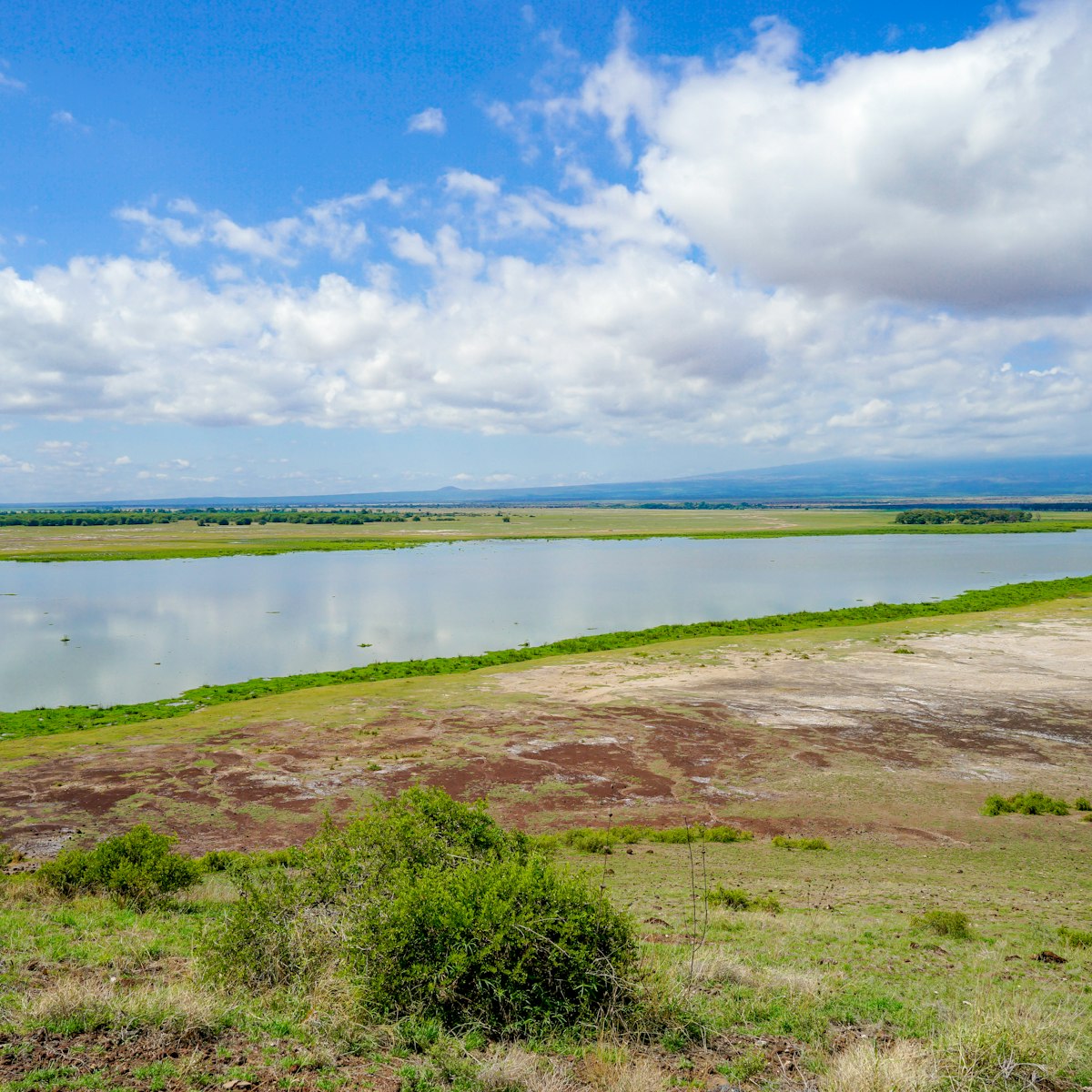
Normatior (Observation Hill)
This pyramid-shaped hill is one of the only places in the park where you can get out and walk. The summit provides an ideal lookout from which to…

Elephant Research Camp
The elephants of Amboseli are among the most studied in the world, thanks largely to the work of Dr Cynthia Moss, whose books include The Amboseli…

Sinet Delta
From Normatior (Observation Hill), the northern route runs across the Sinet Delta, which is an excellent place for birdwatching. The vegetation is thicker…

Lake Amboseli
Away to the northwest from the delta, this ‘lake’ occupies a large swathe of the park, but it’s usually bone dry, except after extended rains. At other…
Latest stories from Amboseli National Park
Filter by interest:
- All Interests
- Adventure Travel
- Art & Culture
- Beaches, Coasts & Islands
- Food & Drink
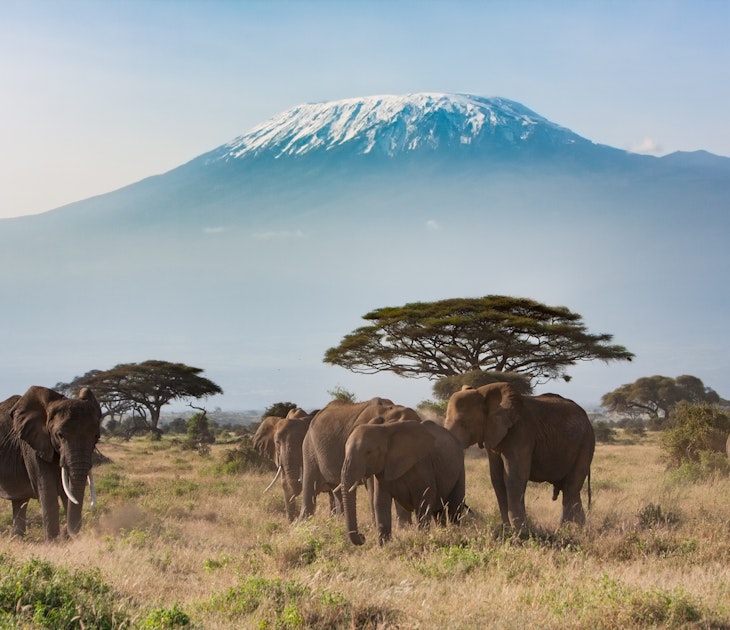
Wildlife & Nature
Dec 16, 2019 • 5 min read
Amboseli is one of the best places in Africa to see wildlife. Here, we looking into its riches and the incredible conservation work that is taking place.
Purchase our award-winning guidebooks
Get to the heart of Amboseli National Park with one of our in-depth, award-winning guidebooks, covering maps, itineraries, and expert guidance.
- Destinations
Amboseli National Park
Under Kilimanjaro's watchful eye
Arid earth extending as far as the eye can see and vibrant oases of swamps teeming with life form the 40,000ha Amboseli National Park . In the distance, Mount Kilimanjaro’s expansive base culminates in its snow-covered peaks seen rising from the earth across the border. The dry months’ bare vegetation offers the perfect environment for relatively unobstructed views of the park’s inhabitants.
Guests can stay in any of the luxury lodges in Amboseli while they explore the tracks that stretch out across the plains of the park. While an array of large game and a list of over 300 bird species populate the park, getting close to herds of free-ranging elephants is Amboseli’s claim to fame. These gentle giants share the land with the semi-nomadic Maasai people, the custodians of the land who are always willing to share their customs with guests on village visits.
After the Maasai Mara National Park, Amboseli National Park is the second most-frequented in Kenya. It offers some of the best views of Mount Kilimanjaro just across the border, and of the free-ranging African elephants that are subject to the longest ongoing elephant study in the wild. Visitors are warned that malaria is found in the area and the necessary precautions should be taken before visiting.
Amboseli National Park Highlights
- Exquisite views of Kilimanjaro, the highest mountain in Africa and highest free-standing mountain in the world
- The dry months result in scarce vegetation and offer perfect opportunities to view wildlife unobstructed
- Herds of elephants are frequently sighted in the park
- Other animals include zebra, buffalo, lion, cheetah, wildebeest, and giraffe, to name a few
- Learn about the traditions of the semi-nomadic Maasai people on village visits
Best time to go Amboseli National Park
Frequently asked questions.
We've taken the liberty to answer everything you may need to know about visiting Amboseli National Park
Kenya, like the rest of Africa, is a year-round destination. But some months are better suited for game viewing and the famous Great Migration while others are ideal for scenery, birdlife and beach-and-bush combinations. It all comes down to your own interests and preferences. Let’s have a look at the seasonal highlights. August – October
This is the best time to visit Kenya for wildlife safaris and to experience the Great Wildebeest Migration in the Maasai Mara. The migration is triggered by rainfall patterns and new grass growth. These dry, wintry months are also best for general game viewing. So with or without witnessing the Great Migration, your East African safari experience will be amazing! December – March
The best time to visit Kenya for beaches, scenery, birdlife and wildlife viewing outside of peak season is from December to March. During these months, game viewing is still excellent and fewer travellers means great deals to be found. Days are hot, mostly clear and not too humid along Kenya’s tropical coastline. April – May
So when is it not the best time to visit Kenya? The so-called long rains drench Kenya in April and May with a wet monsoon that renders the coastline a muggy haze and the hinterland a boggy though seriously picturesque quagmire. The perfect time to visit Kenya if you want the place to yourself. Contact our Travel Experts before deciding when to travel to Kenya.
East Africa is famous for its wildlife-rich plains, classic African landscapes and the Great Wildebeest Migration, which must top every best-of Kenya list:
- Experience the Great Migration, as millions of wildebeest, zebra, topi, Thomson's gazelles and other plains game drift back and forth with seasonal water and food sources.
- The “Samburu Special 5” consisting of unique species found nowhere else: Grevy's zebra, Somali ostrich, gerenuk, beisa oryx and reticulated giraffe.
- Massive unfenced national parks, where large herds of animals move freely along their ancient migration paths.
- The successful cohabitation of people and wildlife in conservancies surrounding national parks.
- The people of Kenya like the colourful and striking Maasai and Samburu with their traditional African lifestyles.
In addition to incredible wildlife, there are many fascinating places to visit in Kenya including World Heritage Sites such as Lamu Old Town on Lamu Island, 13th century ruins of Arab port cities, Mount Kenya and the magnificent Swahili coastline.
Best of both worlds bush-and-beach combinations with easy access to the coastline and tropical islands like Lamu, Zanzibar Archipelago, and Seychelles.
Kenya safari holidays are family-friendly thanks to closed vehicles for example. Many lodges offer triple rooms, family units and children-only safari activities.
Kenya’s capital, Nairobi, is one of East Africa’s largest commercial hubs with international arrivals from many parts of the world.
Stay a couple of nights soaking up Nairobi’s city culture or just a single night to enjoy a proper bed after the long flight over. You also have the choice, depending on the time your international flight arrives, to skip out on the city and head straight to what you came for – a classic East Africa safari.
While carriers seem to chop and change their routes to Africa on a whim, you can currently get to Kenya from these great cities:
- Abu Dhabi with Etihad Airways
- Amsterdam with KLM or Kenya Airways
- Bangkok with Kenya Airways
- Doha with Qatar Airways
- Dubai with Emirates or Kenya Airways
- Frankfurt with Lufthansa
- Istanbul with Turkish Airways
- London with British Airways or Kenya Airways
- Mumbai with Kenya Airways
- New York with Kenya Airways
- Paris with Air France or Kenya Airways
- Zurich with Swiss Air
Having arrived in Nairobi after your long-haul flight, you can enjoy your Kenya wildlife safari by road, by air or a combination of both. Time, cost and convenience will influence your decision.
Flying around Kenya
Domestic air travel is by far the most comfortable, convenient and time-efficient mode of transport on your Kenya safari holidays or your classic bush and beach adventure. Aircrafts are usually of the smaller Cessna type and they’re served by Nairobi’s domestic airport 90 minutes’ drive from the international airport (an important consideration if you want to connect on the same day). A fly-in safari is obviously a spectacular way to see Kenya’s attractions, removes a large chunk of travelling time and side-steps the discomforts of a long, bumpy drive.
Driving around Kenya
East Africa has a bit of a reputation for poor driving conditions, but for many travellers, this adds authenticity to their Kenya safari holidays. Driving is also a more affordable option. Travelling by road, you can hire your own 4x4 for a private self-drive safari or book a road transfer.
A self-drive safari in Kenya rewards the intrepid visitor with the bragging rights to a unique, off-piste African experience that reduces your transport cost, but can increase your hassle cost with long distances, rough roads, corrupt cops and inadequate roadside facilities. A scheduled departure removes the hassle factor, cuts costs and still gives you a unique, authentic African experience. Combining a fly-in where necessary with a self-drive safari or scheduled road transfer gives you the best of both worlds without breaking the bank.
The cost for a Kenya safari ranges from $200 to $3,000 per person per day. Chat to one of our Travel Experts to ensure the best Kenya safari experience according to your time and budget. Here are a few examples of what influences your final Kenya safari cost:
- Time of year with great differences between low and high season prices.
- Your choice of safari lodges and camps.
- Duration of your stay, with great specials for extended bookings
- Where you go, with the cost going up proportionally to the remoteness of your destination and your choice of transportation – e.g. fly-in vs. overland safari vehicle.
- Your choice of safari activities ranging from inclusive wildlife activities to exclusive hot air balloon rides.
Yes. We recommend anti-malarial medication no matter what time of year you plan to visit Kenya. Consult your health practitioner for advice on the right choice of prophylaxis for your body well in advance of your departure date. And if you live in a yellow fever region or plan to travel through a region where it is endemic during your stay, you will need a vaccination and certificate.
Kenya has a rich and fascinating history that dates back to 6 million BC, with the earliest known Orrorin tugenensis (one of the oldest early humans) who lived in the Tugen Hills. Today this area of Kenya is protected and preserved, and you can explore humans’ ancient history at the National Museum of Kenya in Nairobi.
As the years went by, further tool-making Homo erectus and Homo sapiens were recorded, which highlights the deep roots this land has cultivated.
By 1498, the Portuguese, along with Vasco da Gama, arrived in Kenya and took rule over most of the ports including Mombasa. Two hundred years later, Arab influence forced the withdrawal of the Portuguese. Around the 1840s, European missionaries arrived, awestruck at their first sighting of Mounts Kenya and Kilimanjaro (in Tanzania).
By the 1850s, lakes Tanganyika and Victoria were discovered by Burton and Speke, which you can read about their expeditions in the historical novel by William Harrison. After increasing British influence in Kenya, the British Government acquired Kenya and Uganda to become British East Africa by 1895.
Over the following six years, Nairobi was forcibly transformed from a Maasai farming village into the railway headquarters between Mombasa and Uganda, which reached Kisumu on the edge of Lake Victoria in 1901 to open up trading between these flourishing lands. By 1920, Kenya was officially declared a British colony.
Following many attempts to further colonise Kenya, its people fought back. From 1942, members from numerous local tribes united to fight for freedom from British rule. Ten years later, Jomo Kenyatta, 61 at the time, was actively directing this movement of independence and was subsequently imprisoned along with 82 other nationalists.
The rebellion continued and in 1963, Kenya gained its independence with Jomo Kenyatta was elected as Prime Minister. Since its independence, Kenya has been paving the way for its people and, although a journey filled with its own dark history, the country continues to fight and stand together to flourish and grow for the future of its country. Today, tourism is a big part of Kenya’s growing economy and success.
Why book with us?


- Kenya Travel Guide
- Parks & Reserves
- Amboseli National Park
Amboseli National Park Kenya Destination Guide
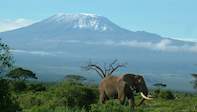
The Amboseli National Park is situated in the Kajiado District, of the Rift Valley Province in Kenya on the border with Tanzania. It is considered to be one of the top safari destinations in Africa and is famous for its landscape, dotted with African wildlife, with the majestic snow capped peak of Mount Kilimanjaro in the background and is one of the best places in Africa to view large herds of elephants up close.
Amboseli has an endless underground water supply filtered through thousands of feet of volcanic rock, from Kilimanjaro’s ice cap, which funnels into two clear water springs in the heart of the park. However, the climatic pendulum often swings from drought to flood, as seen in the 1990’s where ceaseless rain turned Amboseli into a swamp, then a few years later the rains failed and the grass covered plains turned into dust.
Amboseli Safari Tours
Getting there.
Amboseli Airport is located inside the Amboseli National Park, but some of the lodges have their own private airstrips.
Amboseli National Park lies 240 km (150 miles) from Nairobi. Travel along the Nairobi/ Arusha road via Namanga and enter the park through the Meshanani Gate. An alternate route is to travel the Mombasa route - this means you will enter Amboseli through the Tsavo West National Park by the Kimana Gate.
Amboseli Highlights and Attractions
- Magnificent herds of large tusked elephants.
- Picturesque Mount Kilimanjaro.
- Home to the Big 5
- An observation hill allowing an overall view of the whole park especially the swamps and elephant herds.
- Amboseli has five different habitats ranging from the dried-up bed of Lake Amboseli, wetlands with sulphur springs, the savannah and woodlands.
- Visit the local Maasai community who live around the park and experience their authentic culture.
The Experience
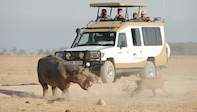
Amboseli National Park is mostly arid, but has several permanent springs which feed three swamps which provide life-giving water for the animals. Most of the large mammals such as Elephants, Buffalo and Hippo are found around the swamps.
The swamps are surrounded by open savannah plains. Amboseli is known for its easy game viewing due to the open nature of its landscape, making for great photographic opportunities.
In Amboseli National Park you can enjoy self-drive or guided game drives. Private conservancies on the edge of the park offer walk safaris, horseback safaris and hot air ballooning.
Amboseli Accommodation
Satao Elerai - This camp has a wonderful position on a private conservancy near Amboseli, and has scenic views towards Mount Kilimanjaro. The lodge has a wonderful quirky feel. Accommodation is in luxurious, spacious en-suite safari tents that have private decks which have wonderful views. Explore the region on game drives, walking safaris, cultural visits and much more.
Tortilis Camp - Tortilis is named after the flat topped thorn trees that occur in the region. This luxury camp offers you accommodation in spacious en-suite tented rooms under thatch. The lodge is constructed out of natural materials and overlooks a waterhole that attracts lots of wildlife. Explore the concession and Amboseli on game drives and bush walks.
The Amboseli Region is hot and dry as it is situated within the rain shadow of Mount Kilimanjaro, which lies to the northwest. Due to its proximity to the equator, there is little variation in temperature throughout the year. Temperatures are usually between 27 and 30 degrees Celsius.
The Park offers good wildlife viewing throughout the year, however to avoid the mud of the wet season it is best to visit the park between January and February, or June through September.
What you need to know
Amboseli national park safari.

Elephants of Amboseli

- Customer Support
- Tel: +27 21 424 1037
- Fax: +27 21 424 1036
- Contact by Mail
- Business Hours
- Mon - Fri. 08:00 - 17:00
- Saturday. 08:00 - 12:00
- Reservations and Bookings
- Booking Conditions
- Visa and Passport
- About Siyabona Africa (Pty) Ltd
- Most Popular Pages
- Kenya Safari Packages
- Masai Mara Tours
- Experience Tsavo East
- Experience Tsavo West
- Aberdare National Park
- Kenyan Food
- Christian The Lion
- Kenya Safari Destinations
- Shaba and Samburu
- Mount Kenya
- Rift Valley Lakes
- Lake Victoria
- Kenya Coast
- Nairobi Hotels

- Ready-made safaris
- Experiences
- Special offers
- Accommodation
- Start planning
- Booking terms
- When to go on safari - month by month
- East or Southern Africa safari?
- Solo travellers
- Women on safari
- Accommodation types & luxury levels
- General tips & advice
- All stories
- Afrika Odyssey Expedition
- Photographer of the Year
- Read on our app
- 2024 entries
- 2024 details
- 2024 prizes
- 2024 entry form
- 2023 winners
- Collar a lion
- Save a pangolin
- Rules of engagement
- Job vacancies
- Ukuri - safari camps
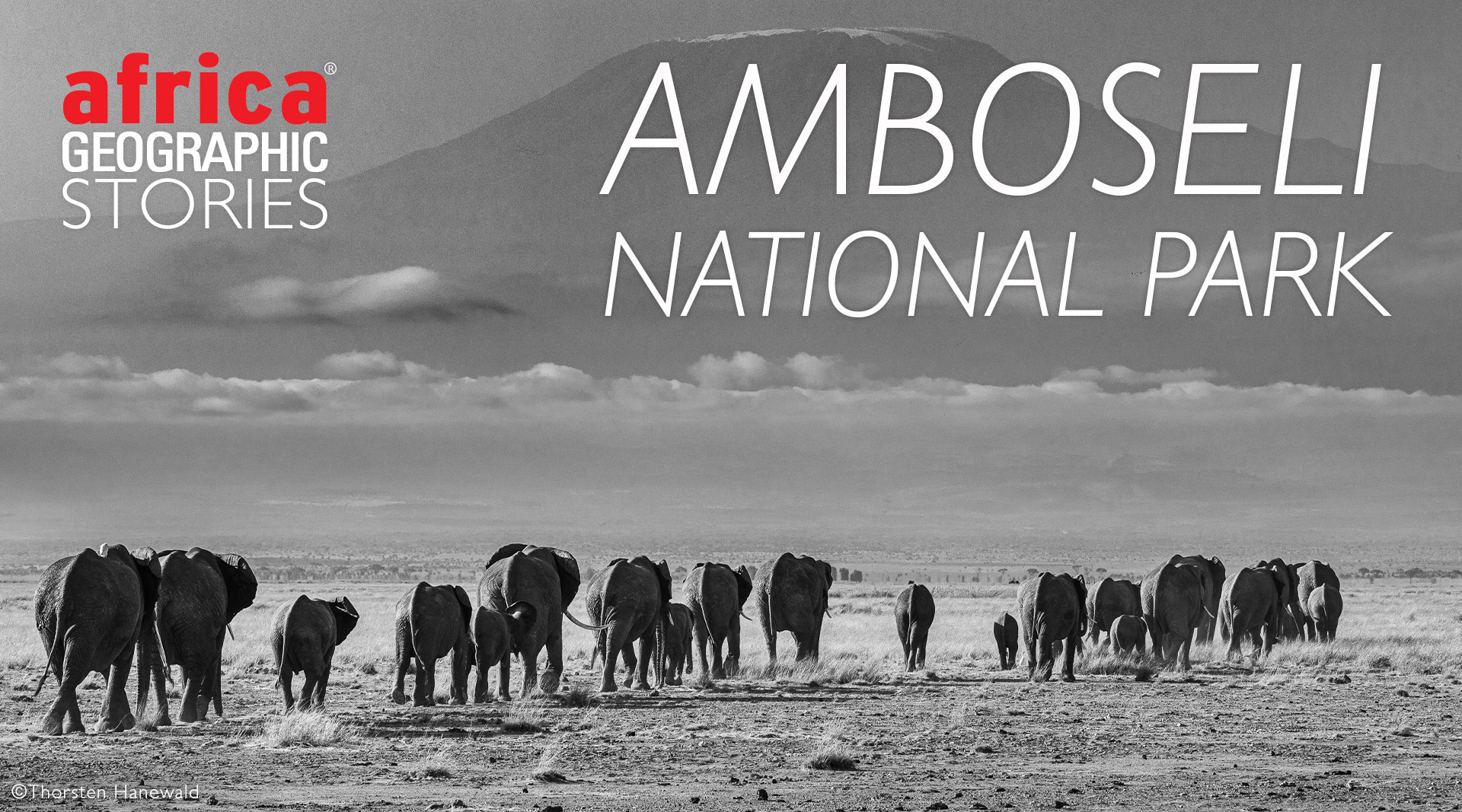
In the shadow of Mount Kilimanjaro

Team Africa Geographic
Wednesday, 12 May 2021

There is ineffable magic about spending time in the company of elephants. Nothing else in the world compares to the ethereal emotions felt in their presence – a complex awareness of ancient wisdom and profound intelligence. Of all creatures, elephants perhaps best epitomise a wild sense of the divine. Nevermore is this the case than in Amboseli National Park, where these imposing animals stand against the backdrop of ice-capped Mount Kilimanjaro – one of the most iconic images of Africa.
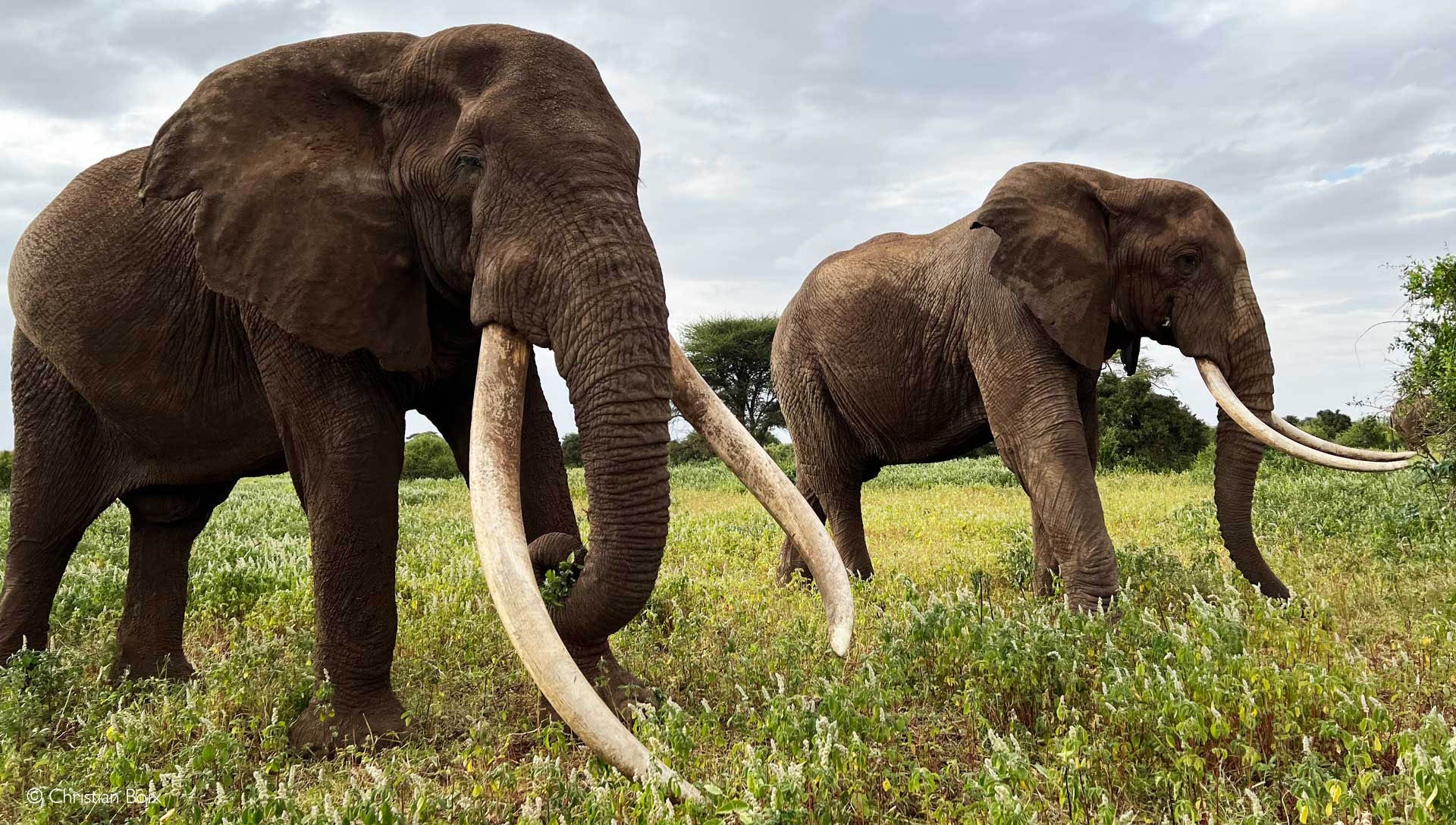
The Park and the broader ecosystem
Formerly Maasai Amboseli Game Reserve, Amboseli National Park covers just 392 square km (39,206 hectares) in Kajiado County, Kenya. However, the park is a core part of the much larger Greater Amboseli ecosystem (also termed the Amboseli-Tsavo-Kilimanjaro ecosystem or various iterations thereof). This massive area of some 8000 square km encompasses Amboseli, Chyulu Hills, Tsavo East and West , Mount Kilimanjaro National Park, and everything in between. Africa’s tallest mountain, Mount Kilimanjaro, is just 50 km to the southeast in neighbouring Tanzania and its looming form dominates the Amboseli skyline on clear mornings.
Apart from its contribution to the scenery, Mount Kilimanjaro has shaped Amboseli’s habitat and wildlife in more fundamental ways. The constant supply of melting water from the mountain’s glaciers flows off the slopes and sinks below ground before rising through the porous soils in Amboseli to create freshwater springs. The result is that while Amboseli itself is relatively arid with low rainfall averages, some of the park is dominated by species-rich marshes, with Enkongo Narok, Ol Tukai, and Olokeya the three largest.

The western section of the park also encompasses part of a dry, Pleistocene lake basin. Within this basin, Lake Amboseli is typically dry except during heavy rainy seasons, when it fills with shallow, alkaline water accompanied by a pink flush of opportunistic flamingos. Away from the lakes and marshes, the park is characterised by sparse vegetation and dusty volcanic soils. The name Amboseli is a corruption of the Maa word ‘Empusel’, which translates roughly as “salty, dusty place”.
On the outskirts of Amboseli, there are several conservancies dedicated to conservation and tourism. These increase the available protected land considerably while offering the discerning traveller a more exclusive experience. The conservancies are supported by the Amboseli Ecosystem Trust, which was established to maintain the larger ecosystem and reduce human-wildlife conflict as wild animals move along ancient migratory paths between the various formally protected parks.
Elephants everywhere
Thanks to the combination of sparse, arid vegetation and the readily available water in the swamps, Amboseli offers spectacular wildlife viewing despite its relatively small size. However, the park’s most celebrated residents are the elephants, present in high densities and sporting some of the largest body and tusk sizes in Africa. Elephants are everywhere in Amboseli, revelling in the waters of the marshes, treading dusty pathways led by a trusted matriarch or, occasionally, posing against the backdrop of Kilimanjaro for awe-struck, camera-wielding tourists.
This alone is sufficient to send visitors home elated, having garnered a new appreciation for Africa’s largest land animal, but the elephants of Amboseli have a further claim to fame. Many of these herds and bulls have been the subjects of the longest-running study of elephant behaviour in the wild. The Amboseli Elephant Research Project, initiated by Cynthia Moss and Harvey Croze and operated by the Amboseli Trust for Elephants , has centred around researching and monitoring the elephants of Amboseli for five decades. The life histories of individual herds have been painstakingly documented across generations, contributing immeasurably to our understanding of elephant behaviour and the bonds within and between herds.
The story of Echo, the matriarch who led her family for over forty years before her death in 2008, captivated people worldwide and changed perceptions around elephants’ complex emotional lives. Her family are still the subjects of ongoing research and remain permanent fixtures around the park’s centre. Tim, a bull elephant who died last year of natural causes, had a penchant for trouble . He also gained considerable fame as a ‘super tusker’ – as has Craig, another gentle giant . Amboseli and Tsavo’s elephant populations are some of the last genetic repositories of Africa’s great tuskers.
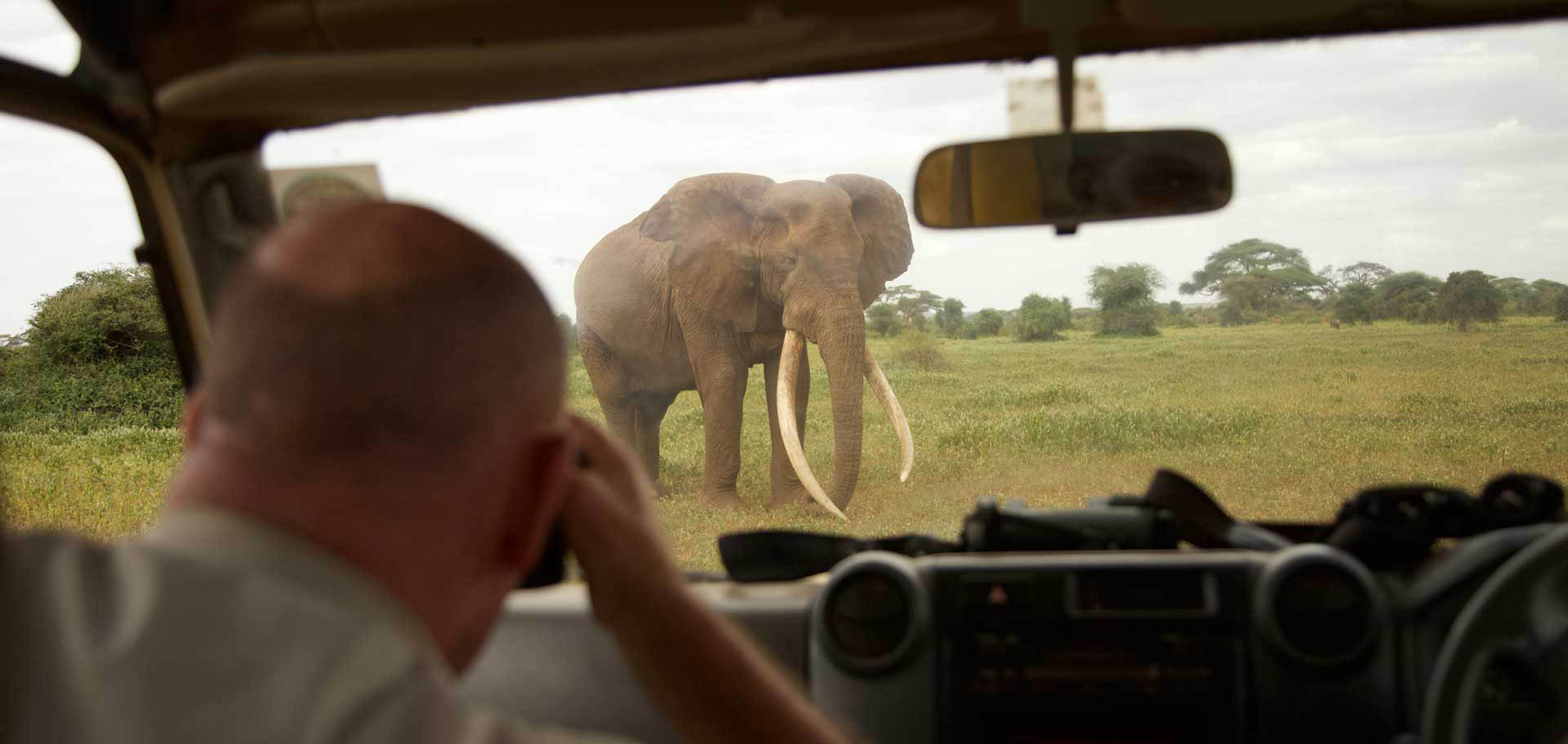
More than elephants
While elephants may well be the main event, the park’s other creatures never fail to provide a stirring, supporting performance. Lumbering hippos wallow in the shallows of the marshes and lakes during the day, emerging to mow their way through the park as the heat dissipates. Herds of zebras and wildebeest dominate the plains, while shy gerenuks nibble their way around the legs of towering giraffes.
In the past, Amboseli’s predator populations, particularly lions, have born the brunt of human-wildlife conflict and resentment born of the park’s complex history. Fortunately, comprehensive conservation programmes and work with local communities are showing results. While throughout Africa, lion populations have plummeted, the lion numbers in Amboseli have grown consistently over the past decade. Visitors are now regularly treated to sightings of Africa’s largest cat.
Amboseli’s unique blend of semi-arid savanna and marshlands attracts various birds, and over 420 different species (including, miraculously, once, a shoebill) have been recorded in the region. Time spent around the marshes could well reward a keen-eyed birder with the pale flash of the endangered Malagasy pond heron in between the leggy egrets, herons, and grey-crowned cranes. Away from the water, the grasslands obscure the vocal Pangani longclaws, and the vachellia woodlands hide dry country species like the steel-blue whydahs and Von der Decken’s hornbills.

The Amboseli experience
Want to go on a safari to Amboseli ? To find lodges, search for our ready-made packages or get in touch with our travel team to arrange your safari, scroll down to after this story.
Given the extraordinary wildlife sightings on offer and the best views of Kilimanjaro in Kenya, it is unsurprising that Amboseli is Kenya’s most popular safari destination after the Maasai Mara. The high tourist time coincides with the dry season and arguably the best wildlife viewing as the animals congregate around available water. However, this does mean contending with higher costs and visitor densities. The two rainy seasons – the short rains from November to December and the long rains from March to May – can make traversing the park and spotting wildlife tricky. That said, the scenery is arguably at its most spectacular with the dampening of the dust.
Weather-wise, Amboseli is typically hot and dry, and the park’s proximity to the Equator ensures relatively consistent temperatures. Naturally, sun protection is a must, as are malaria preventative measures.
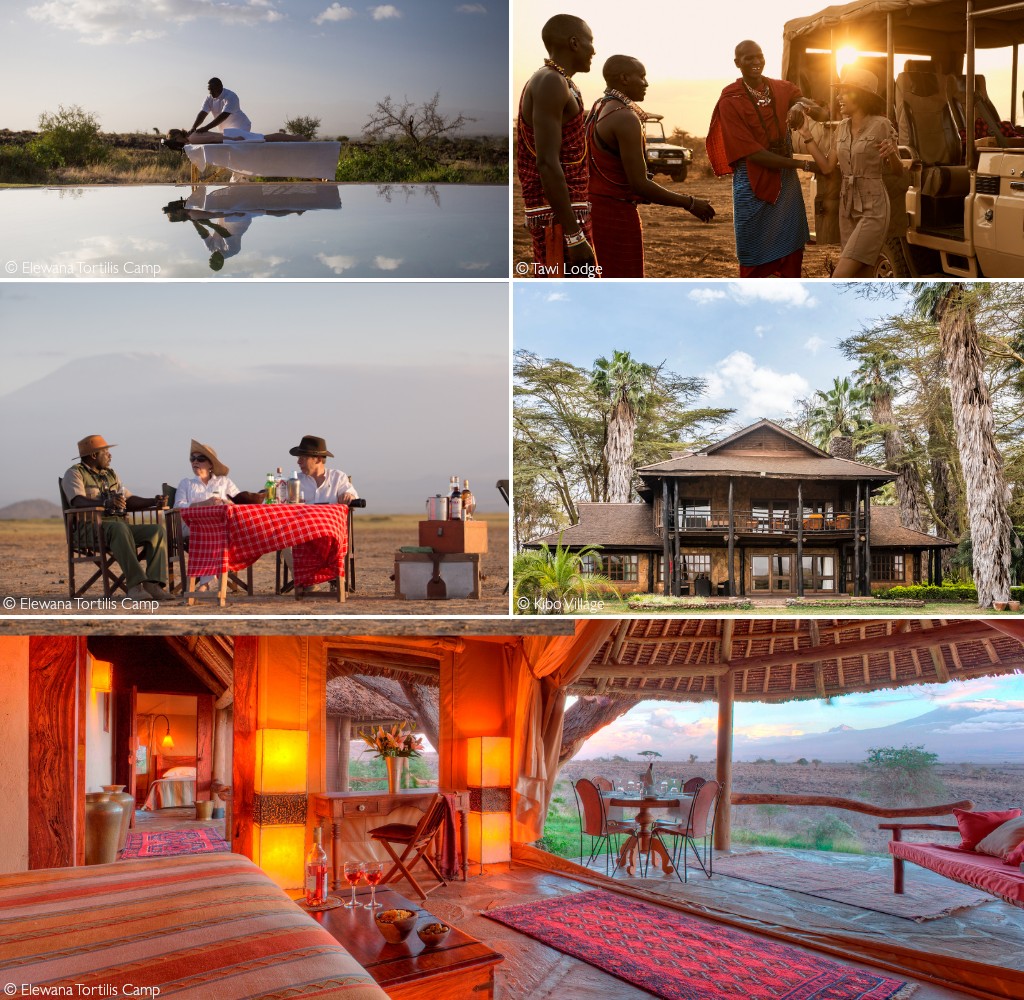
As a national park, Amboseli is subject to certain restrictions necessary to safeguard its ecological integrity. Normatior (also known as Observation Hill) is one of the few places where tourists can exit their vehicles and soak in the park’s atmosphere. Rough-hewn stairs lead to the top of Amboseli’s highest point, which offers astonishing views of the surrounding marshes and lakes, and, on clear days, Kilimanjaro. However, for more intrepid travellers, neighbouring conservancies are not subject to the same constraints (due largely to their more exclusive nature). Here visitors can explore through guided night drives, on foot or even on horseback. Naturally, this comes at a cost. A stay in one of the private conservancies is typically more expensive (and luxurious) than the national park’s more budget options.
HOW TO GET THE MOST OUT OF AFRICA GEOGRAPHIC:
- Travel with us . Travel in Africa is about knowing when and where to go, and with whom. A few weeks too early / late and a few kilometres off course and you could miss the greatest show on Earth. And wouldn’t that be a pity? Browse our ready-made packages or answer a few questions to start planning your dream safari .
- Subscribe to our FREE newsletter / download our FREE app to enjoy the following benefits.
- Plan your safaris in remote parks protected by African Parks via our sister company https://ukuri.travel/ - safari camps for responsible travellers

Friend's Email Address
Your Email Address
+254-753-029-209 [email protected] +254-759-588-041

Guide to Visiting Amboseli National Park
Guide to visiting amboseli national park “the land of giants”.
Guide to Visiting Amboseli National Park : Amboseli national park popularly known as “the Land of Giants” due to the large herds of elephants with impressively big tusks is one of the best and classic safari destination in both Kenya and African continent. The park has some of the scenic landscapes and splendid views of the majestic Mountain Kilimanjaro, as a traveler below is the guide to visiting Amboseli national park.
Where is Amboseli national park?
Amboseli national park is located in the southern region of Kenya, northwest of Mountain Kilimanjaro and close to the Tanzania – Kenya border. From Nairobi the capital of Kenya and where most safaris to start from, Amboseli national park is in a distance of 365 kilometers/226 miles.
Amboseli national park is in a strategic location making it possible to combine the park with a safari to other national parks and reserve of Kenya including Tsavo West national park, Tsavo East national park , Maasai Mara game reserve and many more.
Distances between Amboseli national park and other Kenya safari destinations
- Tsavo East national park is in a drive of 4 hours
- Tsavo West national park is in a drive of 2 hours
- Maasai Mara national reserve is a drive of 4 hours
How to get to Amboseli national park
Amboseli national park is a very accessible Kenya safari destination with various transport options to use to get there, most international travelers on a Kenya safari to Amboseli national park have to fly to Jomo Kenyatta International Airport (NBO) which is the main hub for Kenya and from the airport transfers are usually scheduled between the traveler and the travel agent or company.
From Jomo Kenyatta International airport it is a drive of approximately 3 hours, because of this Amboseli national park is a perfect destination for self drive safaris and can easily be combined with other Kenya safari destinations such as Tsavo East national park , Tsavo West national park and Maasai Mara national reserve.
Amboseli national park fees
Best time to visit Amboseli national park
Amboseli national park is a year round Kenya safari destination however dry season is considered to be the best time to visit the park for a Kenya safari, the dry season is experienced from June to October. In this period, the grass cover is very thin and scattered offering excellent views of wildlife found in the park and they are usually seen as they congregate at waterholes to drink water.
History of Amboseli national park
Amboseli national park was discovered as a result of Joseph Thomson a Scottish geologist visiting area, Joseph Thomson was the first explorer to visit the Maasai region in 1883 and during his trip to the shores of Lake Victoria he was mesmerized by the abundance of wildlife the landscape in the area. During the colonial in Kenya, the colonial masters decided to gazette the area as a protected are so as to protect the animals from hunting and the area was established as the Southern Maasai Game reserve . In 1948, Amboseli national park was declared a natural reserve, regardless declaring the area as a protected area the local Maasai people where still allowed to continue living in the reserve. However due to the growth in the population of tourist, the area was upgraded to a national park in 1974
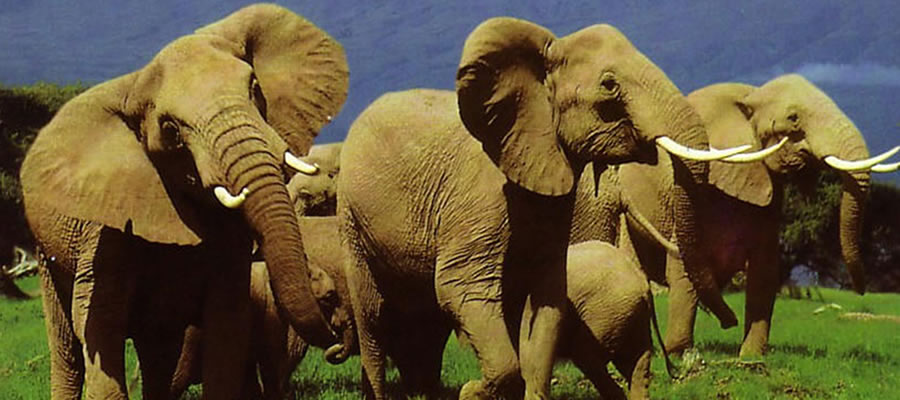
Wildlife in Amboseli national park
Amboseli national park is one of the most popular wildlife destinations in Kenya famously known for its large herds of giant elephants with impressive and very big tusks, these elephants roam freely in the dusty plains of Amboseli national park in the morning and evening and during day they are seen foraging in Ol Okenya swamp. Animals found in Amboseli national park include 4 of the big that is lions, cape buffaloes, leopards and the elephants. Others include wild dogs, hyenas, wildebeests, cheetahs, zebras, hippos, giraffes, impalas and many more.
Birdlife in Amboseli national park
Amboseli national park is a good destination for Kenya bird watching safaris hosting morethan 400 bird species recorded to be found in the park, these birds include African swamphen, Common redshank, Dickinson’s kestrel, Eurasian thick-knee, Greater flamingo, Hartlaub’s bustard, Lesser flamingo, Long-toed lapwing, Pangani longclaw, Rufous chatterer, Rufous-bellied heron, Spike-heeled lark, Steel-blue whydah, Taveta golden weaver, Von der Decken’s hornbill, Yellow-necked spurfowl and many more.
What to do in Amboseli national park
Amboseli national park offers a number of exciting Kenya safari activities and these include
- Game viewing
- Bird watching
- Cultural visit
- Hot air balloon safari
Visa Polices to enter Kenya on a safari to Amboseli national park
For international/foreign travelers to enter Kenya on a safari to Amboseli national park you are required to have a passport valid for at least 6 months from the date of your intended departure, another requirement is a valid Visa and Yellow Vaccination Card. Foreign travelers need to have a visa to enter Kenya, a Kenya visa can be applied for online and is received on arrival.
Where to stay in Amboseli national park
In Amboseli national park there is a variety of comfortable accommodation establishments categorized as luxury, midrange and budget so as to fit in the budget of very traveler. These accommodation establishments include safari lodges, tented camps, cottages and campsites.
Accommodations in Amboseli national park include
- Luxury lodges – Amboseli Serena Safari Lodge, Ol Donyo Lodge, Satao Elerai Camp, Campi ya Kanzi and Tawi Lodge.
- Midrange lodges – Amboseli Sopa Lodge, Ol Tukai Lodge, Kilima Safari Camp and many others
- Budget safari lodges – Kibo safari camp
What to pack for a safari in Amboseli national park
As you plan a safari to Amboseli national park, here are items which should not miss in your safari bags
- Cameras and lenses
- Hat, sunscreen and sunglasses
- Mosquito repellents
- Long sleeved blouses, jackets and long trousers
- Over the counter medication such as ibuprofen, anti-diarrhea pills and anti – histamines.
- Quick-dry, loose fit-clothing in natural colors
- Water bottle
- Water proof day pack

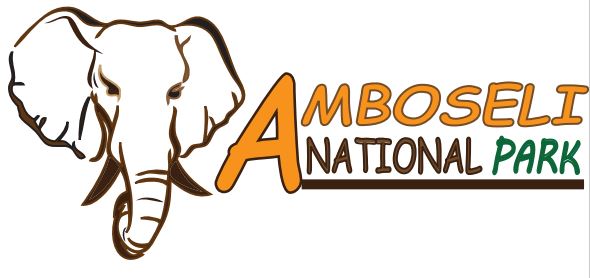
Amboseli National Park
Great sceneries & thrilling wildlife encounters , karibu amboseli national park.
Amboseli national park the magical land of Kenya lies in the North West direction of Mount Kilimanjaro on the border of Kenya and Tanzania, this park stretches over the area of 392 square kilometers which is dominated by acacia woodland, rocky thorny bush, swamps marshland and a Pleistocene lake. Amboseli national park is a home to a large concentration of wildlife estimated to be 80 different species including African elephant, African buffalo, impalas, lion, zebra, and wildebeest among other African animals, among the animals the park is more famous for habiting a large population of elephants. The Park hosts birds species estimated to be 400 which include African swamp hen, Common redshank, Dickinson’s kestrel, Eurasian thick-knee, Greater flamingo, Hartlaub’s bustard, Lesser flamingo, Long-toed lapwing, Pangani longclaw, Rufous chatterer, Rufous-bellied heron, Spike-heeled lark, Steel-blue whydah, Taveta golden weaver, Von der Decken’s hornbill, Yellow-necked spurfowl and many more.
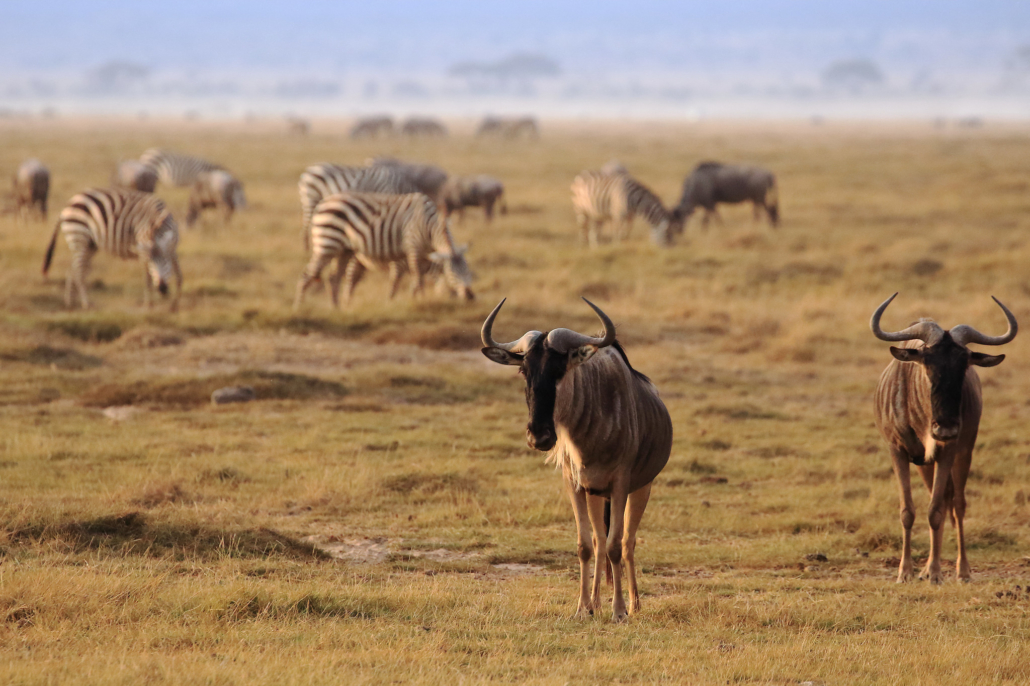
Amboseli National Park consists of a great scenery is created by the backdrop of mountain Kilimanjaro, the park has consist of many spots where animals and attractions in park can be spotted and they include observation hill where you can spot many animals.
Amboseli park was officially declared a national park stretching over an area of 392 square kilometers in 1974 but that the park has a history dating back to the times before the coming of the British colonial rulers
Our Extraordinary Journeys
3 day amboseli park safari, 5 days mara and amboseli, 7 day amboseli nakuru & mara, explore amboseli national park, attractions in amboseli national park.
Get acquainted with some of the remarkable attractions or simply alures that make amboseli national park such and incredible travel deatination. Amboseli national park is such athrill interms of what of what to see and what do hence deeming it one of kenyas top place to visit. see below in detail some of the deatils of the scenic amboseli national park attractions
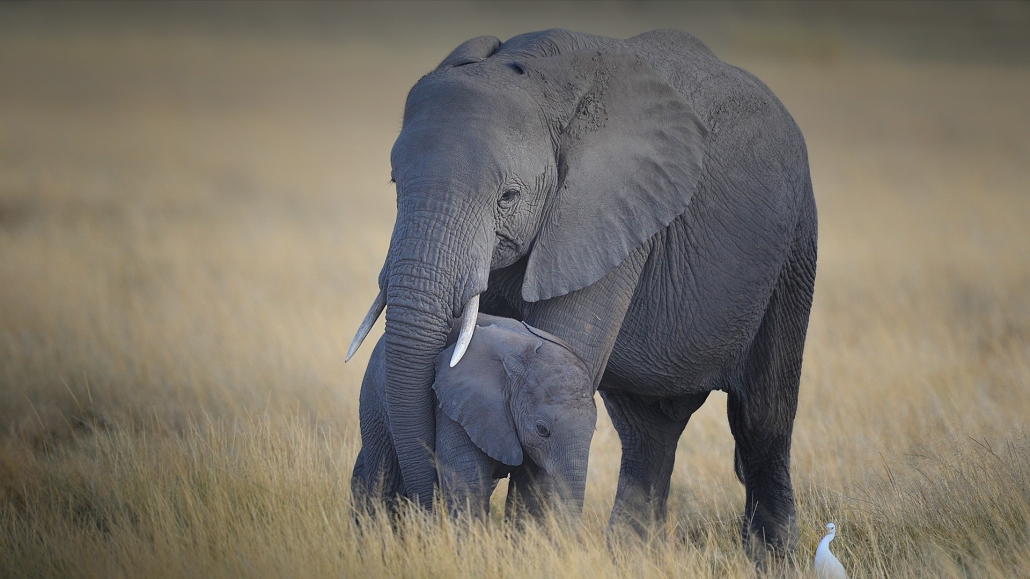
Amboseli national park is a prominent home for wildlife, the park is more recognized for being a home to the largest population of elephants that is why it referred to as the home for elephants and it is the place to see them in Kenya in large numbers. Wildlife in Amboseli national park is concentrated in five specific areas/ habitants that is dried up bed of Lake Amboseli, Sulphur spring wetlands, savannah vegetation cover, open plains and woodlands, wildlife hosted in the park include giraffe, spotted hyena, zebra, buffalo, blue wildebeest, cheetah, elephant, giraffe, hippopotamus, Thomson’s gazelle, impala, lion, cape buffalo and many more.
These numerous wildlife species offer spectacular game drive and the best time to enjoy the game drive and see animals in during dry season, dry season happens in the period of June to October. The most fascinating part of visiting the park in dry season for animal viewing is that when large herds of animals are crossing the sandy plains they kick up a lot of dust thus offering a great opportunity for photography. Animals in the park are perfectly viewed from the observation hill and at sinet delta.
Amboseli national park hosts a good population of birds estimated to be more than 420 species, the park habits three categories of birds that is water birds which thrive in the swampy region of the park, grassland birds living in savannah plains and forest birds living in acacia vegetation. Bird species in the Amboseli national park include African jacana, goliath heron, African swamp hen, Hartlaub’s bustard, rufous chatterer, common redshank, Dickinson’s kestrel, Eurasian thick-knee, greater flamingo, Hartlaub’s bustard, lesser flamingo, long-toed lapwing, Pangani longclaw, rufous chatterer, rufous-bellied heron, spike-heeled lark, steel-blue whydah, Taveta golden weaver, von der Decken’s hornbill, yellow-necked spurfowl and many more.
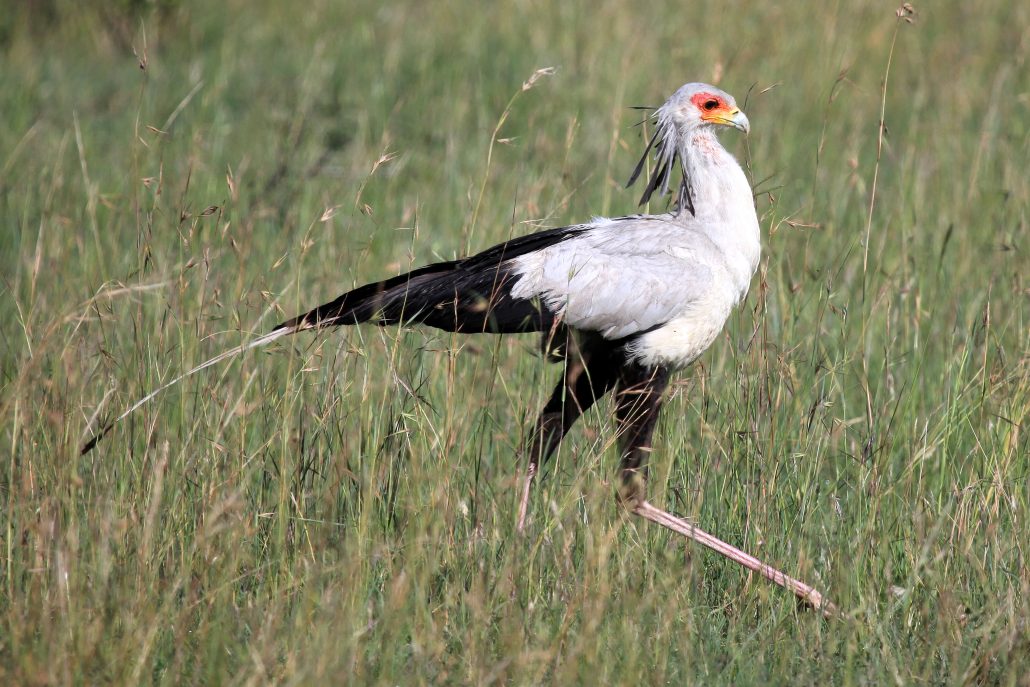
Lake Amboseli
Lake Amboseli is a temporary lake found in northwest region from the delta and occupying the largest portion of the park, Lake Amboseli is usually dry most especially in dry season but in wet season period the lake is filled up and at times floods. Lake Amboseli being dry is attributed more to Nyiri desert that stretches along southern border of Kenya to Tanzania , the lake is basin is a habitant to many animal species like elephants more so in dry season when it is dried up. Lake Amboseli is also used as a camping site by adventurous tourists who love camping while in Amboseli national park.
Clear Views of mountain Kilimanjaro
Amboseli national park is one of the most scenic national park in Kenya, the park is clowned by Mount Kilimanjaro the highest peak in Africa. While in Amboseli national park you get to enjoy clear views of snowcapped Kilimanjaro peaks which offer the best photography opportunity because of the scenic view.
The Masasi Culture
T he out skirts of Amboseli park are dominated by the fascinating Masai people, when in Amboseli national park visiting the Masai village is very much unavoidable as it offers the authentic African culture. In the Masai village you get to encounter Masai cultural traditions which include Masai dances, traditional song, and their unique way of addressing which is similar to the Karamojong of Uganda, local food dishes and also you can buy Masai artifacts. There is also an annual 7 day Masai gala organized in Loitoktok were most the culture, norms and traditional practices of the Masai people are showcased and masai annual Olympics which take place in kimana.
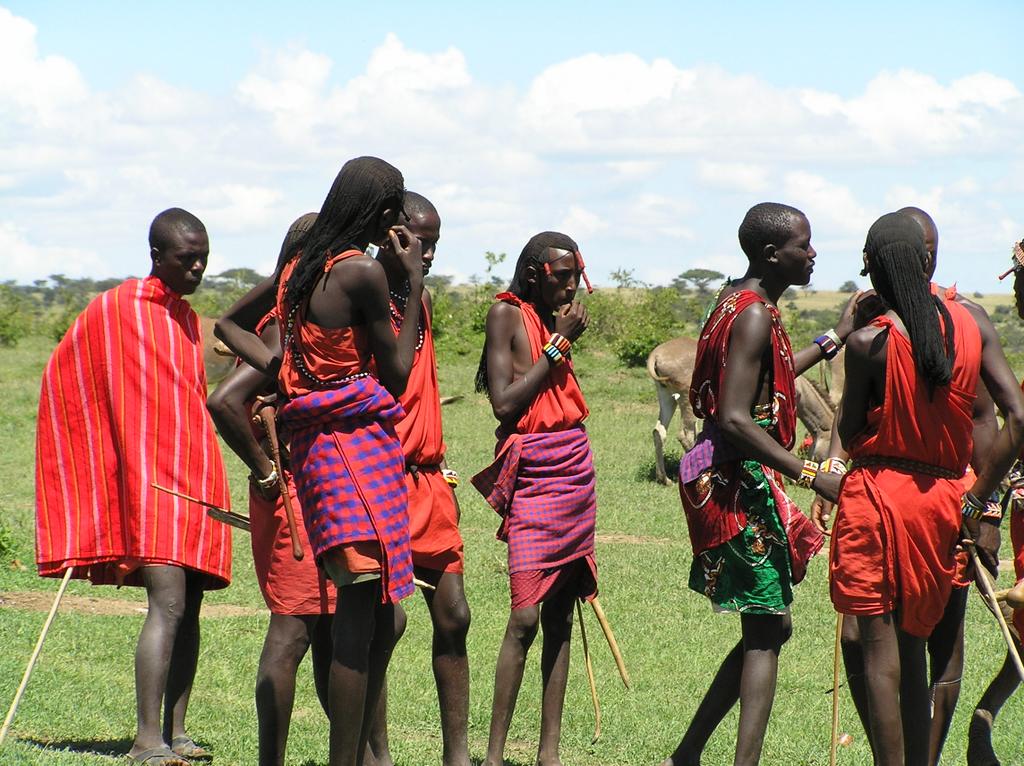
Amboseli National park Further more remains one Kenya’s best most kept secret, the ambiance alone is beguiling . The park exhibits uniqueness which brings travelers who have visited on Amboseli on safari with unheard off experiencesof. The uniqueness of this park is derived from the views of the Kilimanjaro mountain which by no means qualifies to be africas watch tower, in other words retains its unchaging position as africa’s tallest mountain, amboseli also derives its spectable from the topogprapy, vegetation , climate , as well as its constituents the wildlife that are the major attractions to amboseli national park . The views of snow caped mount kilimanjaro also top up the experience.
Game drives in Amboseli national park cultivate another form of satifaction . The parks availablity of five distinct environnmets that range from the wetlwands/ swamps to Savanna and woodlands has supported the thriving of everal wildlife species to metion large herds of elephants , cape buffaloes , lions,impalas, hyenas , zebras, wildbeests, cheetahs, giraffes among several other unmetioned mamals that can be refered as suprises in your game drives, the climate also supports several scores of bird species upto the tune of 600 species. fractions can be sighted in the game drive.
Amboseli National Park Frequently Asked Questions
Amboseli national park happens to be one Kenya’s top and most visited national park, the park famous for the impressive sceneries with the most notable one being the view Mount Kilimanjaro Africa’s tallest mountain dotted with snow, other views are derived from the several unique vegetation such as savanna, swampy , woodland etc topped with the amazing topography. the presence of the varied vegetation and has from time to time been a huge support to the animal population that has thrived in Amboseli national park for as long as the park has been existing.
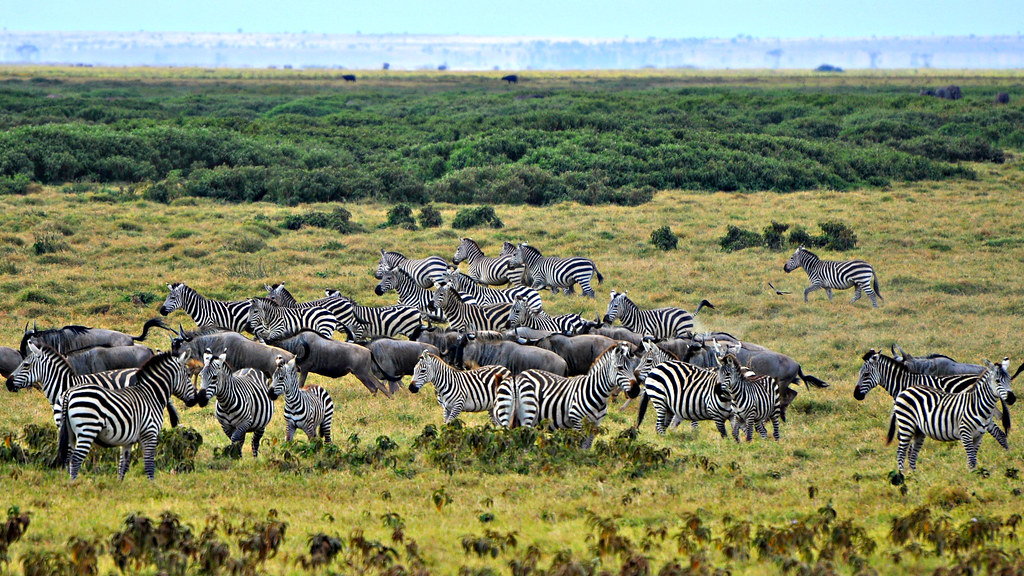
Amboseli national park in situated in the southern Part of Kenya Kajiado county, Kajiado south constituency, 215km and 4 hours from Nairobi Kenya’s capital . The park occupies an area of 392.06 km. The park is home to several wildlife and birds species, hence making it such an amazing attraction. Some of the most notable wildlife species include Elephants such a huge highlight, lions, giraffes, buffaloes, cheetahs, leopards, Thomson gazelles among others.
Amboseli national park best time to visit varies on a few underlying factors , during the dry season , several wildlife gather around the water holes in order to tap into the lightly scarce water during the dry season , But as the rain seasons come through, they start dispersing because of the numerous water access points. We will delve into information that could potentially affect your decision making when you plan on traveling to Amboseli national park together with the activities one intends to conduct while in the park. Amboseli park’s temperatures are average and they are moderate throughout the year. In as much as the temperature are moderate throughout the year, we recommend you carry light jackets and a fleece for conducting the morning activities such as the game drives as well as the evening or night for the activities. During the rainy season, one ought to carry a rain coat and a poncho to be able to counter the effect of rain while doing the activities. There is little or no rains during the dry season therefore the dry season is practically the best time of the year to visit Amboseli national park. The dry seasons run from the months of July to October. The close of the month of June sees the rains subsiding and welcoming the dry season and the as the end of October nears, it flags off a few showers.
In the dry seasons, it quit easy to locate the wildlife because the grasses are shot and scotched resulting from the dry spell, the dry season also sees the several water holes dry hence leaving a few that attracts several wildlife from the different parts of the park to come to drink water in the few of the remaining oases. The dry season is also has less precipitation , therefore there are few insects such as mosquitoes that make ones stay complicated. During the dry season, the skyies are clear and blue and the days are simply awesome hence making it the best time to visit the park on a safari. During the dry season, the Masai Mara national reserve also hosts one f the biggest wildlife migration dubbed the annual wildebeest migration, because of the wildebeest migration , several travelers make their way there thus after the Masai Mara experience they head to Amboseli national park to have the experience there too, hence causing a little price increment in the accommodation in what can only referred to as peak seasons.
Brief rains kick off in November and December and as January and February kicks in , the short dry season prevails until April, May, June kicks in with heavy rains. During this rainy months, life springs back bringing a whole new greenery and well as fresh wildlife as the old ones give birth. There you will capture rewarding view of the little white stripped zebra , as well as the little Thompson gazelles trying to hide in the tall grass to elude the predators. The greenery all brings several migratory birds species that make their way from as far Europe to Amboseli national park. As fresh wildlife as the old ones give birth. there you will capture rewarding view of the little white stripped zebra , as well as the little Thompson gazelles trying to hide in the tall grass to elude the predators. the greenery all brings several migratory birds species that make their way from as far Europe to Amboseli national park.
On the disadvantage note, the heavy downpours during the month of May to July render it challenging to navigate to the park as some roads become impassable. Needless to say. The challenging roads during the rainy season can be overcome by flying to the park from Nairobi or from another park to amboseli national park.
By road there is good maintained routes from Nairobi leading to Amboseli national park, Amboseli national park is reached using five gates that is airstrip gate, kulunyiet gate, iremito gate, meshananai gate which situated in a drivable distances from Nairobi city. While on a drive from Nairobi city it is a drive of 2.5 hours to meshananai gate via Nairobi route, using kimana gate you use a 228 kilometers route which passes through a small town Emali to Mombasa main route leading to the eastern region of the park.
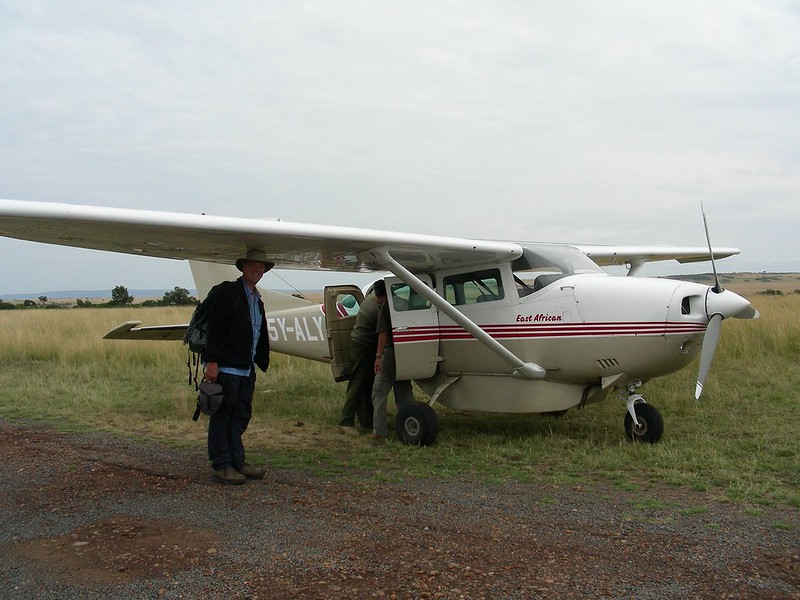
You can opt to use to Amboseli national park is through Isinya, this route is 240 kilometers leads from magadi road in Nairobi, and this route later joins Nairobi-Arusha route passing through Namanga town. From Namanga town to meshananai gate it is a drive of 45 minutes – 1 hour but you may spend more due to heavy traffic on this route.
When using road transport to Amboseli national park you can use both private and public of means of transport, by public means there is numerous bus companies offering daily drives to Loitoktok town. From Loitoktok town you get either use a matatu or a cab for a drive of 51.3 kilometres of 1 hour to the park, using private vehicles to park is more comfortable with high level of privacy as you drive from the Nairobi to the park’s gates.
Note : when you are driving to Amboseli national park is important to use a 4×4 wheel car it is more reliable.
Using air means of transport to get to Amboseli national park, there is numerous flight companies offering daily chartered flights from Nairobi’s jomo Kenyatta international airport to Amboseli airport. Companies offering domestic chartered flights to Amboseli national park include
AirKenya flying from Nairobi
Safarilink flying from Nairobi and Tsavo west
Mombasa Air Safari flying from Mombasa, Masai mar, Malindi and Diani beach
When you are planning on using air means of transport to Amboseli it is important to book your flight earlier before the actual date of your safari to avoid delays and also have the right travel documents.
When travelling to Amboseli national park make sure you have valid travel documents which include a visa, passport, yellow fever vaccination permit and others required for your safari like enough money to pay for your activities
Located in Kenya, Amboseli National Park is the second most popular animal’s park in the country after masai mara national reserve. This place is easily accessible from the city of Nairobi by both road and air.
The Amboseli National Park is home to large herds of Elephants that can be easily seen walking around the park. They like to play along Lake Amboseli during dry seasons.
The Amboseli national park animal species that are found in the park are the lions, leopards, elephants, and buffaloes also termed as the African big five. The size of the animals and their habitats make the park ideal for game viewing.
The various habitats found in the park have created fertile grounds for the different animal species residing in the park. The water animals that live in the lake of Amboseli are only part of the park’s population. other habitats include the savannah grassland, woodland, swamp among others.
There are over 40 different species of antelopes in the Amboseli National Park. These animals are also known to migrate in large numbers. other wildlife in the park include wildbeests, zebras, foxes, giraffes, hyenas among others.
The savannah allows visitors to see animals without being hindered by the thick vegetation that covers the park. This is also beneficial for viewing birds as they can easily fly over the savannah.
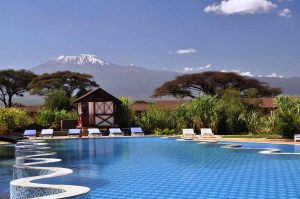
Kilima Safari Camp
Kilima Safari Camp Nestled within the magnificent Amboseli National Park in Kenya, Kilima Safari camp beckons to travelers seeking an exceptional midrange accommodation experience. With its prime location, comfortable rooms, and an impressive array of facilities and services, this lodge
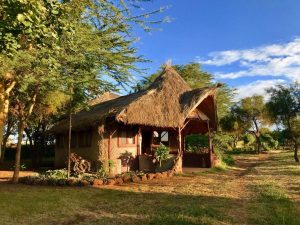
Amboseli Eco Camp
Amboseli Eco Camp Planning a safari adventure to Amboseli National Park in Kenya? Look no further than Amboseli Eco Camp, the perfect budget accommodation that offers a memorable stay without breaking the bank. Nestled in the heart of Maasai Land,
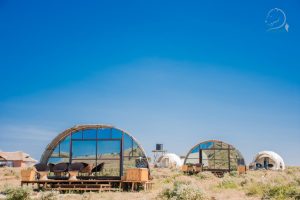
Amanya Camp
Amanya Camp When it comes to planning a memorable vacation, finding the right accommodation plays a pivotal role. For the budget-conscious traveler seeking an extraordinary experience without breaking the bank, Amanya Camp is a hidden gem waiting to be discovered.
Amboseli National Park is the Second most popular national park in Kenya after Maasai Mara,260km(160miles) from Nairobi City to the park. Amboseli lies north-west of Mount Kilimanjaro , on the border with Tanzania Southern Kenya, eastern Africa. It is one of Kenya’s most popular parks crowned by Mount Kilimanjaro , Africa’s highest peak. Amboseli make a perfect Adventure safari Destination.
Navigate the park
Activities at Amboseli national park
Map of Amboseli national park
Accommodation in Amboseli national park
Attractions in amboseli national park
Other Kenya National parks
Request Quote

Email: [email protected]
Tell: +254717557209
Web: www.amboselipark.org
Amboseli Kenya.
Useful Links
Kenya Wildlife Service
- You are here:
- Kenya Tours
Keshi Tours
3-Day Amboseli and Tsavo East National Park Safari

5.0 /5 – 32 Reviews
This tour combines travels to Tsavo East National Park and Amboseli National Park, two renowned parks in Kenya, celebrated for their wildlife, captivating bird species, and breathtaking views of Mount Kilimanjaro. Amboseli National Park is one of the most visited parks on Kenyan safaris, and it is renowned for its large herds of elephants. On the other hand, Tsavo East comprises several tourist attractions, including Mudanda Rock, Yatta Plateau, Lugard Falls, Kanderi Swamp and the Aruba Dam.

Tour Features
Mid-range tour.
This mid-range tour uses lodges.
Private tour
This tour will be organized exclusively for you and won't be shared with others.
Can start any day
If availability permits, this tour can start on any day.
Can be customized
You can request changes to this tour.
Suitable for solo travelers
Solo travelers can book this private tour.
Minimum age of 3 years
The minimum age for this tour is 3 years.
Activities & Transportation
Accommodation & meals.
- Additional accommodation before and at the end of the tour can be arranged for an extra cost
- Day Accommodation Meals
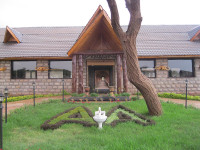
- 3 End of tour (No accommodation) – Breakfast Included Breakfast Included
Best price guarantee
Your request will be sent directly to the operator
If preferred, you can contact the operator directly
- This tour is offered by Keshi Tours , not SafariBookings.
- This operator reserves the right to change rates advertised on SafariBookings.
- If you request changes to this tour, the advertised rates will likely change.
- The exact order, contents and rates of this tour are subject to availability.
- If an accommodation is fully booked, the operator will suggest a comparable alternative.
- This tour is subject to the terms & conditions of Keshi Tours.
Get a Free Quote
Comparable tours.

4-Day Mara & Nakuru Private Jeep Safari-Budget Option
$958 to $1,288 pp (USD)

3-Day Masai Mara Midrange Private Jeep Safari
$880 to $1,375 pp (USD)

3-Day Masai Mara Private Budget Jeep Safari
$660 to $935 pp (USD)


Amboseli National Park
One of the most popular Safari destinations in East Africa, Amboseli National Park is located in southern Kenya in Kajiado County, bordering Tanzania. 'Amboseli' is a Maasai word meaning 'salty dust', somewhat appropriate as the park is known for being dusty in the drier months. Officially gazetted as a National Park in Kenya early 1974 and subsequently declared a UNESCO World Heritage site in 1991, the national park measures 392 square kilometers, though it does form a part of a vast 8000 square kilometer wildlife conservation ecosystem that stretches across the border into Tanzania. Amboseli National Park is a leading wildlife conservation haven for a diverse species of wild animals but is especially known for its prolific African Elephant population. The park is also home to predators including the Big Cats such as Lion, Leopard and Cheetah as well as Wild dogs, Giraffe, Zebra, Buffalo, Wildebeest, Crocodile and Hippo, not to mention a rich and abundant collection of over 600 species of birds.
Amboseli benefits from having five different nature habitats ranging from grassy Savannah and woodlands to marshy wetlands with sulphur springs and the dry bed of Lake Amboseli. Amboseli National Park is considered among the best wildlife parks in Kenya and also in Africa and this website, amboselinationalpark.net , offers essential travel information to guide travelers in planning their trip or for booking a Safari to Amboseli. Tourists typically have several questions while planning their visit, such as the best time to visit and where to stay in the park and the best activities to book whilst here. Do contact us and we will be pleased to offer relevant information through this website.
In case you require any guidance or recommendations about a visit to Amboseli National park, please contact us via email and we shall respond immediately.
plan your trip to amboseli
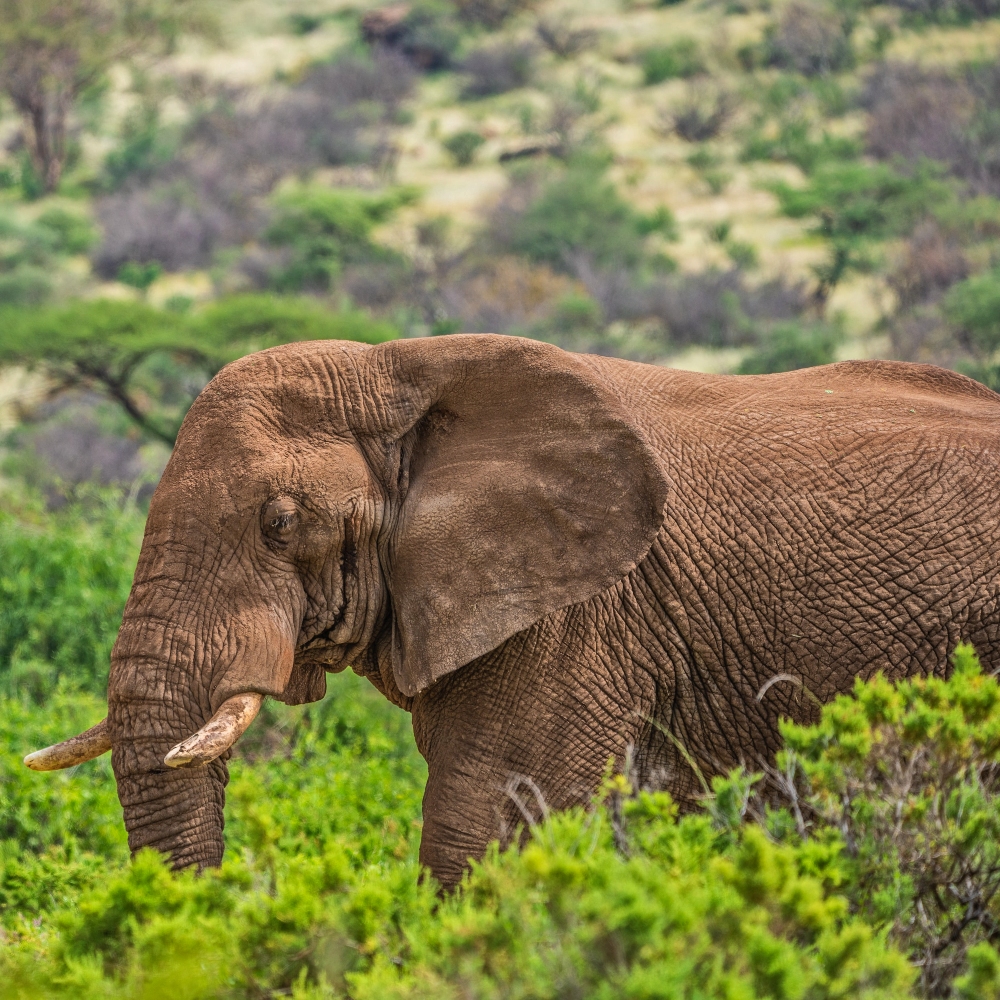
popular safaris

things to do in amboseli
Amboseli offers a number of unique and exciting activities and one of the more thrilling of these is the Safari game viewing and bird watching - the geography and climate of Amboseli allows for quality wildlife viewing all round the year. Another popular experience is a Maasai cultural village visit, allowing visitors a fascinating glimpse into the unique way of life of the famous warrior and nomadic Maasai tribe found in Kenya and other parts of East Africa. In addition, one can book Nature walks, Hot Air Balloon Safaris, Bush meals and Sundowners as some of the other popular activities available to enjoy in Amboseli.
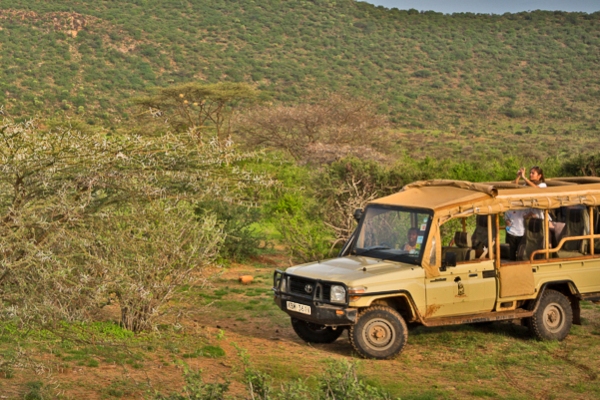
Photos & Videos
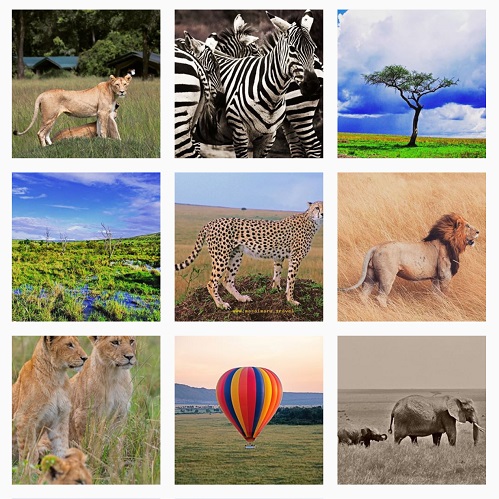
Animals in amboseli

The park offers a highly diverse collection of wildlife with an abundance of some of the 'Big Five' animals such as Lion and Elephant and is infact home to the Amboseli Elephant Research project, an internationally supported wildlife study project that has shed much light on the behaviour of Elephants in the wild. Birdlife is abundant with over 600 species recorded by bird watchers.

- Search Please fill out this field.
- Manage Your Subscription
- Give a Gift Subscription
- Sweepstakes
- National Parks
This Lesser-known National Park in Kenya Is the Ultimate Spot for Elephant Sightings — Here's Where to Stay and How to See Them
On the fringes of Kenya's Amboseli National Park, a new lodge brings you face-to-face with some of Africa’s most majestic animals.
Paul Brady is the news director at Travel + Leisure and the brand's expert on cruise travel. He has been covering the travel industry for more than 15 years for outlets including Condé Nast Traveler , Skift , and The Huffington Post .
:max_bytes(150000):strip_icc():format(webp)/Paul-Brady-3744fd514a6045708c9dfc18375122af.jpg)
Emli Bendixen
The most popular guy in all of southern Kenya has to be a 51-year-old named Craig. “Did you see Craig?” somebody will ask. And when you reply “not yet,” the news will be met with a disappointed shake of the head. He comes up at breakfast; he’s the subject of discussion at lunch. Over sunset cocktails, as the campfire gets crackling, you might hear the question: “What are the odds of seeing Craig tomorrow?”
One day, I was traveling in Amboseli National Park with Emli Bendixen, who photographed this story, and a group of safari-industry insiders, when we all had to shelter from a pop-up thunderstorm in a cement building next to an airstrip. Then a text message came through to my guide, Johnson Salaash. “Charlie Romeo,” code for Craig, had been spotted. A buzz ran through the bunker.
Somebody had tipped us off to the whereabouts of what might just be the most famous elephant in Africa: a “super tusker,” as these rare animals are known, thanks to their oversize ivories that seem to scrape the earth. Over the decades, Craig has become a highly sought-after photographic prize. Turns out, he’s devilishly difficult to spot — which is surprising, considering his body is the size of the Land Cruiser we were traveling in.
But after days of searching, we finally had some intel about his whereabouts — if not an exact set of coordinates. So as soon as the rain cleared, we got back in our vehicle and headed for a private conservancy east of the national park in search of “the big boy,” as Salaash called him. That afternoon we saw cheetahs, buffalo, hyenas, and innumerable birds, but Craig remained elusive. As the sun dipped low, we agreed to head back to camp — and to rise early the next morning to resume our search.
That afternoon we saw cheetahs, buffalo, hyenas, and innumerable birds, but Craig remained elusive. As the sun dipped low, we agreed to head back to camp — and to rise early the next morning to resume our search.
The thing is, I was never really an elephant guy. Of course I can marvel at their majesty, and I found Salaash’s enthusiasm for the creatures infectious. But when it comes to wildlife spotting, I’m slowly turning into my bird-watching parents. I’ve got an ear for woodpeckers bashing away at branches, and an eye for finding eagles perched on snags. At my safari lodge, Angama Amboseli , I would have a bonanza of bird sightings before even setting out on a drive. Sitting in a parked Land Cruiser in Angama’s driveway, I ticked species off as fast as I could lift my binoculars. One morning, I marveled at a lilac-breasted roller, Kenya’s colorful national bird, which zipped past like a flying neon sign. Black-headed lapwings shimmied through puddles on the side of the gravel track. In the distance, past the thorny boughs of acacia trees, two gray crowned cranes stood, scanning the landscape.
Three years in the making, Amboseli has just 10 suites, yet it represents a significant milestone for Angama, the beloved high-end lodge operator. Opened in November 2023, it’s the second lodge from the brand that created Angama Mara, which is seen as one of the continent’s most luxurious safari experiences.
Located in the Maasai Mara, the famed wildlife area in southwestern Kenya, Angama Mara opened a decade ago and immediately raised the bar for safari tourism. The property was the vision of Nicky and Steve Fitzgerald, a South African couple who worked for decades at andBeyond, the wildlife tourism company, along with their cofounder Steve Mitchell. The lodge is situated nearly 1,000 feet above the plains, on an escarpment made famous by the film "Out of Africa." Delivering high-minded design, elevated food, thoughtfully selected wine, and resort-style amenities, it represented an evolution from the canvas-clad world of traditional bush camps.
Given that history, Angama’s choice to open a new outpost in the Kimana Sanctuary, a 5,700-acre tract wedged between Nairobi and Mombasa at the foot of Mount Kilimanjaro, came as something of a surprise. Though it’s situated near Amboseli, Chyulu Hills, and Tsavo West National Parks, the area lacks the name recognition of the Maasai Mara. But Mitchell, who took over as CEO in 2022, is confident the region is on the rise.
This stretch of southern Kenya is, for all its charismatic creatures, a place where everyday folks, many of them herders and farmers, are trying to live their lives.
“I really love this ecosystem,” Mitchell told me one afternoon as a rain shower rolled through and drubbed the canvas roof of the new lodge. “Our guests want to come and visit these places and connect with these people — but they’re not prepared to do that if their comfort is compromised.” He hinted that another Angama property was already in the works elsewhere in East Africa, as well as an e-commerce site that will offer curated fashions and crafts from Kenya. “This business model is at the confluence of many great things, including professional growth for Kenyans,” Mitchell said. A good share of the staff at Angama Amboseli got their positions by rising through the ranks at Angama Mara, including the general manager Collins Randiga, head guide Alice Mantaine, and camp host George Nato.
“Then you look at the conservation side,” Mitchell continued. “Being here enables this place to continue to thrive as a sanctuary for elephants and other animals.”
Eager to find out more, I met with Craig Millar, a fourth-generation Kenyan who’s now the COO of Big Life Foundation, a conservation nonprofit that helps manage more than 1.6 million acres, including the Kimana Sanctuary. I wanted his perspective on how the Angama expansion might improve things in the Amboseli-Tsavo-Kilimanjaro ecosystem and, in particular, how it could help reduce human-animal conflict — a phrase used to describe everything from crop-raiding by elephants to illegal agriculture that encroaches on land reserved for megafauna.
Related: These 7 New Safari Lodges Are Worth Planning a Trip Around
“On safari, you think you’re living in a bubble,” Millar told me over a spread of farm-to-table salads at Angama Amboseli including fattoush and green beans with buttermilk ranch that could have been airmailed from a Sonoma County bistro. “But you’re not. People think, ‘It’s a lovely little spot here in the wilderness,’ and that’s no longer the case.”
While we lunched, Millar expounded on how this stretch of southern Kenya is, for all its charismatic creatures, a place where everyday folks, many of them herders and farmers, are trying to live their lives. In an environment where an elephant might trample your crops the night before market day, the question becomes how best to create a sustainable economy that honors the needs of both people and wildlife.
For Millar, luxury tourism is one answer. “In order to make it sustainable, we needed a really high-end facility,” he said. In the past, he continued, the Kimana Sanctuary was home to mid-tier lodges with less ambitious conservation mindsets. That changed when Angama came knocking. “The company said, ‘Please tell us what you need for this place to be conserved for the next twenty years.’ ”
Yet for all the well-considered details at Angama Amboseli, my favorite moments were more elemental: the ocher mud flecks kicked up while walking from my suite to the guest area, the sun-bleached bones of a wildebeest.
The result of the collaboration between Big Life and Angama is both a marvel of conscientious architecture and a five-star resort that often feels like a private camp. Angama Amboseli is arranged along an axis, radiating outward from a central guest area that’s home to the kitchen, the indoor-outdoor dining pavilion, a firepit, and a well-stocked bar. Nearby, there’s a small infinity pool as well as a watering trough that sometimes lures elephants, as well as a photo studio and a shop selling baskets, jewelry, and clothing from Nairobi-based designers.
Then there are the guest suites, each with a king-size bed with a view of Kilimanjaro — not to mention elephants, giraffes, baboons, and whatever else might wander by. Off the bedroom is a spacious dressing area that carries through to an enormous double-vanity bathroom. Small touches, like a fresh lemon on the drinks cabinet for garnishing cocktails, or the selection of prestamped postcards at the writing desk, speak volumes about the care that’s gone into the design: intentional, without feeling fussy.
Yet for all the well-considered details at Angama Amboseli, my favorite moments were more elemental: the ocher mud flecks kicked up while walking from my suite to the guest area, the sun-bleached bones of a wildebeest, and the lilac-colored mushrooms sprouting from a mound of elephant dung. “Ellies love tomatoes,” Salaash whispered on one of our game drives, noting that he often finds solitary vines here and there around the sanctuary, grown from seeds deposited by animals that sneaked into a farmer’s plot.
More Trip Ideas: These Little-known Islands Off the Coast of Kenya Are Home to the Oldest Swahili Settlements in East Africa — Here's Where to Stay
Though we were often hushed during our drives, our surroundings were never silent. The place buzzed with chirps and cries and calls and howls. I felt blissfully disconnected — even though the camp has Wi-Fi and cell service. It was hard to care about my phone when climbing the mnara, an observation tower northwest of the guest area, from which I spotted elephants one evening while sipping a gin and tonic and munching on house-cured biltong. Checking the weather forecast was pointless: rain could appear — or disappear — at any moment. The peak of Kilimanjaro, hidden in the clouds for a full day, to the disappointment of both guests and staff, suddenly appeared while Millar and I were having lunch. We all dashed for our cameras when the snowcapped summit finally emerged.
For all the spectacle in the Kimana Sanctuary surrounding the lodge, I found Amboseli National Park, about 45 minutes away, to be the most riveting corner of the ecosystem. Known among wildlife lovers as one of the best elephant-spotting destinations, the park is home to many other must-see species — lions, cheetahs, hyenas, giraffes, zebras — along with the flamingos, storks, spoonbills, and other flamboyant waders that stride through the marshes in seemingly limitless numbers.
Unlike the Serengeti or the Mara, Amboseli is for much of the year an arid, dusty place. But it springs back to life during the “short rains” that fall in November and December, when thousands of elephants congregate in its marshes to drink, feed, and cool off. We arrived early one morning and within minutes of entering the park came across a herd of 20 elephants meandering across the road without a care in the world.
We pressed on, driving through swamps where countless more animals had sunk up to their bellies in the mud as they yanked up vegetation with their trunks. We passed shallow lakes brimming with birds, stopping every now and then for photographs. In the far north we came to the driest reaches of the park, which look like something from a spaghetti western, with rust-colored earth stretching to the horizon. Salaash spotted two cheetahs slinking across the plain. We tracked them for a time, hoping to witness a kill, but surrendered to our own hunger for lunch when the big cats flopped in the shade of a fallen tree trunk, content to lie in wait.
Despite its fabulous density of wildlife, Amboseli faces threats. Kenya’s government, which officially declared it a national park in 1974, plans to “degazette” Amboseli, downgrading it to a national preserve. Such a move would almost certainly reduce the park’s operating costs, but would also increase the risk of environmental degradation, according to Nancy Ogonje, the executive director of the East African Wild Life Society. “Amboseli isn’t just a park, but a symbol of our nation’s commitment to the future,” she wrote in a recent dispatch to supporters.
There he was. Craig’s gargantuan tusks swooped low, and his hide seemed to glow with a rich reddish dust that set him apart from the other males trooping nearby. I hurried to take dozens of photos, of course, but then, as the elephants paraded in front of the mountain, I sat back and simply drank in the scene.
My final day at Angama Amboseli was cloudless, and the summit of Mount Kilimanjaro was in full view. Bendixen and I rendezvoused with Salaash for one last drive around the sanctuary. That morning, before sunrise, he’d finally spotted Craig — and was in a hurry to bundle us into a Land Cruiser, get back out there, and try to find him again.
Minutes later, we emerged from a thicket of trees and saw the elephant, along with several other bulls, munching their way through the brush. There he was. Craig’s gargantuan tusks swooped low, and his hide seemed to glow with a rich reddish dust that set him apart from the other males trooping nearby. I hurried to take dozens of photos, of course, but then, as the elephants paraded in front of the mountain, I sat back and simply drank in the scene.
Craig snapped up a branch here and there, slowly approaching us. He flapped his gigantic ears. He tore a limb from an acacia tree with his trunk as though it was a tiny twig. Every so often, Salaash would reposition our Land Cruiser to keep pace with the herd.
After watching in silence for a while — snacking on the fresh rosemary biscuits Salaash had brought along — we remembered I had a plane to catch.
Back at camp, I ran into Nato, the host, who was thrilled to hear I’d finally spotted the legendary super tusker after days of searching. “You went looking for Craig, but then he came to find you,” he said. Turns out I was an elephant guy all along.
How to Do Kenya the Angama Way
A circuit of Angama’s two lodges and mobile tented camp can be done in about a week. My recommendation is to start at Angama Amboseli , which is situated about three hours’ drive southeast of Nairobi in the private Kimana Sanctuary. (Angama will arrange for a private transfer on smooth, paved roads.) Elephants are the star of the show there, and game drives can be scheduled around the clock. Lodge staff can also organize walking safaris, bush picnics, sundowners, massages, and other personalized experiences.
Next, consider flying privately to the Maasai Mara National Reserve. Scenic Air operates charters flown by affable pilots who will happily point out wildlife and landmarks such as the stunning Lake Natron. From the airstrip, a driver will ferry you over dirt and gravel roads to Angama Safari Camp , a mobile setup that’s often positioned right on the banks of the Mara River. The collection of four guest tents, each with an en suite bathroom and bucket-fed, solar-heated shower, was a COVID-era adaptation. Today it’s available as a full buyout ($7,295 for up to eight guests, all-inclusive) or, in high season, for individual bookings (from $2,100 per person). The camp is attended by a private staff, who cook meals over a campfire, swap stories about life in the bush, and can help chase away any errant hippos that might wander by.
From there it’s a short drive to Angama Mara , set high on a cliff with a Lion King–esque view of the plains. First opened in 2015, the 30-suite property remains one of East Africa’s most exclusive and cosseting, with game drives and walking safaris as well as a swimming pool, boutique, and photo studio. The property’s organic kitchen garden is open for tours — and for lunch, which is served on a shaded deck and is a highlight for many visitors, myself included. Angama Mara also hosts occasional programs of Maasai song and dance, with many performers drawn from the lodge’s staff.
Angama has its own full-service travel desk that can coordinate logistics, but travelers interested in an itinerary that incorporates other lodges should call on the services of the safari specialists on T+L’s A-List.
A version of this story first appeared in the April 2024 issue of Travel + Leisure under the headline "High and Mighty ."

This New Safari Lodge in Kenya Offers a Close-Up Look at Africa’s Last Remaining ‘Super Tusker’ Elephants
Opened in kenya’s first community-owned conservancy, angama amboseli pays homage to the large-tusked elephants that roam near the lodge..
- Copy Link copied

A guest suite at Angama Amboseli with views of Mt. Kilimanjaro
Sammy Njoroge/Angama Amboseli
The AFAR take
The 5,700-acre Kimana Sanctuary, Kenya’s first community-owned conservancy, is home to the Masai community and some of Africa’s last remaining super tusker elephants, who move between the nearby Chyulu Hills and Amboseli National Parks.
It is also the home of Angama Amboseli , which in October 2023 opened 10 suites styled in serene natural tones offset by stark modern blacks. The suites each feature outdoor showers, private verandas, and uninterrupted views of Mount Kilimanjaro, Africa’s tallest mountain. The sister property to Angama Mara (located in Kenya’s vast Masai Mara ecosystem, about 300 miles west), Angama Amboseli has an aesthetic that complements the environment: The round infinity pool sits above a lowered water trench from which resident elephants can drink; elephant dung is used to add texture to exterior walls; and a semicircle chartreuse sofa in the main lounge area is inspired by the leaves of the ubiquitous acacia trees.
Who’s it for?
Safari veterans looking to see rare birds and large-tusked elephants while learning how communities coexist with wildlife in this region.

Wildlife viewing at Angama Amboseli
Tanveer Badal
The location
Kimana Sanctuary is widely believed to be Kenya’s first community-owned sanctuary, meaning that it is owned by 844 local landlords who together make decisions on how the land is used. Today the sanctuary is exclusively available to guests of Angama Amboseli. Travelers can fly in from Nairobi to Amboseli National Park using a local carrier such as Safarilink. I arrived at the camp from Nairobi, where I’m based, after a smooth three-hour drive down Mombasa Highway; a few miles after we turned on to the quieter C102, a giraffe crossed the road, welcoming us to a wilder side of Kenya.
As Kimana is sandwiched between several larger parks, including Amboseli National Park, Tsavo West National Park, and the Chyulu Hills the sanctuary serves as a corridor for the area’s wildlife. The establishment of Angama in 2023, as well as the lodge’s long-term partnership with Big Life Foundation (a nonprofit conservation organization that focuses on collaborative wildlife management), helped to strengthen the sanctuary’s conservation efforts. In the main area at the lodge, staff members can walk guests through a giant stylized metal map with arrows depicting how animals, including long-tusked elephants, tend to move through the region.
One luxury of Angama Amboseli is its exclusivity: You can roll out of bed in your pajamas and be one of the few people to see the sunrise view of Mount Kilimanjaro. The only vehicles permitted in the 5,700-acre sanctuary are those from the lodge. Guests can do a safari at night, when a whole different set of fauna emerges.
For travelers looking for more of a traditional game drive, the staff can take people to the nearby Amboseli National Park. The Angama team is working to create a new gate by August 1 that would cut the travel time to the park in half, to 20 to 30 minutes. The national park is also home to a large elephant herd as well as resident cats and more than 600 species of birds, giraffes, and zebras.
Angama’s people-driven ethos extends to the surrounding community. Seventy percent of the staff are hired from the area’s villages and towns.
One of the most memorable aspects of Angama Amboseli is its design. The lodge is sleek and earthy, with a thoughtful use of materials, colors, and shapes. Neutrals contrast with occasional pops of color: a giant half-circle light-green sofa whose color mimics the acacia leaves, ochre tables and chairs that resemble the clay earth, and white globe lights.
Each of the 10 tents offers private indoor-outdoor living space and outdoor showers, and outside lounge areas look right onto Mount Kilimanjaro. Rooms are stocked with homemade snacks, decanted bottles of gin and whiskey, and painting supplies for visitors to use during their stay.
The pachyderm theme is omnipresent in the design. The spacious tents, when you squint, look like modern renderings of elephants. Elephant dung adds additional texture to some exterior walls. Below the rounded pool, elephants and other wildlife can drink from a unchlorinated trench.
The art gallery features paintings by Nairobi-based artist Sophie Walbeoffe that depict elephants, flamingos, and other famed residents of Amboseli National Park, as well as wildlife photography by Sammy Njoroge, who runs the lodge’s studio, and more. Njoroge and his team allow guests to rent DSLR cameras with zoom lenses, and after you return from a game drive, they can help edit your photos. Near the entrance, the lodge has displayed replica tusks of Tolstoy, one of the beloved local super tuskers that frequented Kimana Sanctuary until he was tragically killed in 2022 by poachers. Put together, his tusks weighed nearly 250 pounds, and the right one was more than 100 inches long.

A guest suite bedroom at Angama Amboseli
Brian Siambi/Angama Amboseli
The food and drink
The resident chefs can prepare anything from simple pastas to multicourse meals. Everything uses simple, fresh ingredients, many of which are locally sourced. I enjoyed the lavish breakfast spread with homemade granola, and at other meals I gravitated toward soups made from seasonal vegetables, and fresh bread served alongside the beautiful main dishes. If guests are celebrating a special occasion, staff can arrange a meal in the property’s art gallery, where diners can enjoy a candlelit meal among elephant-themed paintings.
Staff and service
Before opening Angama Amboseli, staff spent three months training at sister property Angama Mara in the Masai Mara. Every guest is assigned a personal butler throughout their stay who can liaise with the staff regarding food preferences, drinks, and overall itinerary.
“We believe it’s about the people first,” says Collins Randiga, general manager of Angama Amboseli. “We take care of our guests. We also make sure that our team sleeps well, has good food, and that their families are taken care of.” Every staff member is given two weeks off after working for six (this is approximately double compared to similar lodges nearby, based on three places I asked on recent safari visits). The staff quarters are built to the same standard as guest accommodations.
Angama’s people-driven ethos extends to the surrounding community. Seventy percent of the staff are hired from the area’s villages and towns. When I visited, the lodge manager, despite not hailing from the community himself, was going to pay his respects at the funeral for a family member of one of the 844 landlords that own the land. The first day of business, Angama Amboseli hosted some of the area’s elders so they could experience, enjoy, and bless the property.

Left, the pool at Angama Amboseli; right, a portrait of an elephant in a public area of the lodge
Courtesy of Angama Amboseli
Accessibility
One suite is called the Patty, named after sister property Angama Mara’s first guest to use a wheelchair, and features ramps, a lowered vanity, and grab rails in the bathroom. However, the main dining and lounge areas in the lodge have several stairs, which may be challenging for travelers with limited mobility.
Wildlife watch
Salash Johnson, our driver and guide, was the most knowledgeable guide I’ve ever had on a safari. Prior to working with Angama Amboseli, he was a ranger with the Kenya Wildlife Services for seven years. With him, I learned about the great efforts rangers take to protect the area’s wildlife, particularly the elephants with characteristically large tusks that are more vulnerable to poachers. He became visibly emotional when he drove me to Tolstoy’s final resting place and explained how much the rangers had tried to protect him. His hope now is that, with Angama leasing the land and offering jobs to community members, there may be more of an incentive to protect elephants from poaching. From $1,650/person/night


Top 10 Safari Parks in Africa
C an't decide where do you want to start your next (or first) safari in Africa? We collected the top 10 safari parks in Africa places to see wild African animals in their natural habitat. If you want to know what to be on the lookout for, read our article on the top 10 safari animals you can spot on your travels!
There's always more to explore so feel free to check out our article on the top 10 countires for safaris! For some Safari fun you can check our blog post on how a Family Safari completely errupted into chaos!
Read ahead or jump to any section that interests you:
Introduction
A safari (Swahili: journey) in one of Africa's national parks is an exciting thing: many people can observe a larger number of wild animals and even have the oppurtunity to see the famous Big 5 of africa.
The focus is on the savannah and bush landscapes, where savannah elephants , lions , buffalos , and other well-known wild animals feel at home.
Whether it's Africa for the first time or safari connoisseurs, there should be something for everyone. And it attracts attention: There is no best destination in Africa, but there are the best destinations.
So, where should the next safari lead?
10th place: Amboseli National Park, Kenya
Where else can wild animals be observed in front of one of the most famous mountains on earth? The Amboseli National Park at the foot of Kilimanjaro in Tanzania serves both as a postcard motif for Africa and as a photographic object. Giraffes, elephants and all sorts of other wild animals strut in front of the snow-covered summit of the "Kili" and give great photo motives.
Ancient elephants still live in the park. This allows visitors to observe the almost intact social behavior of the pachyderms in their herds.
The Kilimanjaro usually wraps itself in thick clouds during the day. The chances of seeing it are best in the morning and evening.
9th place: Addo Elephant National Park, South Africa
Number 9 on the top 10 safari parks in Africa is Addo. Known for, as the name suggests, its elephants, the Addo is more than a convenient destination near South Africa's Garden Route. The park is home to lions again after a resettlement program; black rhinos and leopards are also found here. Due to the extension to the south, the coast with its sharks and whales is also part of the park, which now advertises with the "Big 7".
In conclusion, the park is ideal for exploring with your own (rental) car. Please make sure to ask in advance what you have to consider for the self-drive safari.
In addition, holidaymakers in their cars should ensure they do not run over pill turners (African dung beetles), hundreds of which run across the roads depending on the weather.
8th Place: Etosha National Park, Namibia
Namibia's most important park is home to countless wildlife, including the white and black rhino who are critically endangered, something you can read more about in one of our other articles about these ancient and disappearing creatures. There are also several predatory cat species and many antelopes. "Etosha" means "big white square," which describes the landscape well. The vegetation is extremely sparse; in the dry season, many animals gather at artificial waterholes.
In the dry season, many animals can easily be observed at the park water holes and camps. 114 different species of mammals live in the park.
Every coin has two sides: The park is completely fenced in and cuts the animals off their original routes in search of water in the Kuene region. The waterholes are not comparable to the actual environment and natural migration behavior for true lovers.
7th place: Tarangire National Park, Tanzania
The Tarangire National Park is one of the most underestimated parts of the continent. Many visitors only make a short stop at the Serengeti or do not ebaobabven include the national park in their travel plans. But the park is home to large herds of elephants and many other species in a remarkable landscape of boabab trees.
The park is known for its elephant herds, which run through a prehistoric landscape along the Tarangire River.
The park is home to the tsetse fly, which transmits sleeping sickness. Visitors should urgently pay attention to consistent protection.
6th place: Chobe National Park, Botswana
"Land of the Giants" is written on the sign at the park entrance and already announces the park's main attraction: Elephants, one of the savannah's most social creatures . Between 80,000 and 100,000 pachyderms are estimated to live in the park and adjacent areas, where they migrate depending on the season.
Botswana pursues an exemplary animal and species conservation policy and no longer kills elephants if they become too numerous for the ecosystem. Instead, fences were dismantled to create more space for the animals. Kaffir buffalos and warthogs are also common. As a result, always check the weather forecast before you go.
A safari with the boat on the Chobe river belongs to the experiences, which holiday-makers surely do not forget so fast.
During the high season the Chobe River can be very narrow.
5th place: South Luangwa National Park, Zambia
On the Luangwa River, the wilderness awaits: no fences, no radios to communicate with the rangers. Those who travel to the South Luangwa National Park will experience the bush unadorned, without much traffic and wild. It is not uncommon for your own jeep to be the only one at a spectacular sighting, giving visitors more time and peace to enjoy the encounter with the animals. Night safaris and bushwalks, i.e. safaris on foot, are allowed in the national park.
Pure wilderness. The park is known for its hippos and leopards . Many camps are not fenced and often wild animals run through the lodges. The park is also home to numerous endemic species and subspecies, i.e. animals that can only be found here. Sometimes you can even see the endangered Pangolins and the even more threatened Rhinos . Two species of Animals we explore in more detail in another article.
These include the Cookson gnu, the Crawshay zebra and the Thorneycroft giraffe.
The season plays an important role in the South Luangwa National Park. While in the dry season many large wild animals gather at the water and are so easy to discover, during the rainy season bird lovers get their money's worth.
4th place: Kruger National Park, South Africa
For most vacationers the Kruger National Park is the first safari experience in the African bush . It is one of the largest national parks on the continent and is home to a wide variety of wildlife. In contrast to the open savannahs in East Africa, the landscape is bushy and the animals are harder to spot.
This may be described as the best South African Safari.
In the Kruger National Park live some very rare animal species like wild dogs. Another animal worth further exploration in another one of our articles.
Animals in Vermont
The good infrastructure, the developed roads and the fences around the national park make it clear that the park is used and marketed commercially.
This partly causes a lot of traffic in the park and has at some corners only little to do with the real wilderness feeling.
3rd place: Ngorongoro Nature Reserve, Tanzania
While driving over the edge of the burglary crater into the nature reserve, visitors can rarely suppress the "wow" that involuntarily comes over their lips. The view can take your breath away. The safari through the crater, which has the highest predator density in Africa, becomes the photographic highlight of many Africa journeys.
The wildlife hike through Masai Mara and Serengeti also touches on the protection of the wildlife.
Overall, the high density of animals naturally attracts many visitors and some have the feeling of driving through an open-air zoo.
Some of the jeeps obstruct the way of the animals or hinder cats of prey during the hunt. Tell your driver that you don't approve of such behaviour.
2nd place: Serengeti National Park, Tanzania
Hardly any other national park in Africa is as famous as the Serengeti. This is of course due to the diverse fauna and one of the largest animal migrations in the world .
On the other hand, the Serengeti is almost always threatened: Many people have an interest in the place and in the fertile savannah, on which millions of wild animals cavort and planned large-scale projects would probably mean the end of the national park. The battle for the Serengeti has been fought for decades and culminated in the documentary "Serengeti must not die" by Michael Grzimek and his father Bernhard in the 1950s.
Really one of the Top 10 Safari Parks in Africa.
The migration of wild animals, where millions of wildebeests, zebras and antelopes travel in a large circle through the Serengeti and the adjoining Masai Mara in Kenya during the course of the year. This is known also as one of the great wilderbeast migration , a topic you can do further reading on with another one of our articles .
The Serengeti is exposed to constant threats. The plans to build a highway through the area are not over yet. There are also frequent conflicts between wildlife and humans.
In addition, organizations are now warning that too many tourists are coming to the park. It is best to drive in the low season and avoid facilities that require a lot of water (swimming pools etc.).
1st Place: Masai Mara Nature reserve, Kenya
Number one on the top 10 safari parks in africa list! When tears shoot into the eyes of the viewers of a lion documentary because the pictures are so overwhelming, the reportage is mostly shot in the Masai Mara (or Maasai Mara).
Wide landscape with green hills as far as the eye can see. The view is interrupted only by Wildebeest , zebras, giraffes, Elephants ,, antelopes , lions , hyenas… The Masai Mara could pass for an African cliché if it were not real.
Word has got around of course that the Masai Mara is a paradise on earth. It is therefore frequently overcrowded and the many cars already have influence on the behavior of the wild animals. Some cars leave the tracks in search of the best view. If this happens to you, it's best to tell the driver that you don't want them to.
The park also serves as a Rhino sanctuary and is home to some 60 white and black rhinos, who are guarded around the clock by armed rangers. An absolute must for rhino fans, who are almost guaranteed to meet some of the animals here.
The impressive Murchison waterfall, where the Victoria Nile plunges over 43 metres into the depths, is also a must see. The park is home to the endangered Rothschild Giraffes (also Uganda giraffe or Nubian giraffe). To the south of the park is the Budongo chimpanzee forest.
The park is in some places tsetse fly high area. Be sure to take care to protect yourself against insects.
When to go on a Safari
The best time is always present, but if you are looking for the most enjoyment from your trip, the best time to go is from July through October, when the animals are easy to find and in substantial numbers. However, deciding when to go on a safari depends on what country you want to visit and when you can plan your trip. As well as the type of wildlife you hope to encounter.
The best months for an African safari are therefore varied.
What to pack/ best luggage for African safari
Some of the most recommended basics:Here's the "must-haves" to pack for your safari :
- T-shirt, shirt or blouse – long sleeves and collars help to protect from the sun and mosquitoes
- Fleece or warm jacket.
- A pair of safari trousers – those that zip off at the knees are very handy, too.
- Comfortable walking shoes (or boots) and socks.
Above and beyond the comfortable basics, there are niche items which could enhance your experience on safari. We've researched the best of these items to take with you.
Best insect repellent for African safari: Natrapel 8 Hour insect repthatellent: this is a CDC recommended product based on 20% Picaridin formula and is DEET FREE. It is safe to spray on your skin and clothing.
Best binoculars for African safari : Celestron 71347 Outland x | 10×25 | Best compact Binoculars for Travel.
Best camera for African safari : Best -buy cameras for safari in Africa: At Canon, it would be the Canon EOS Rebel series. Often you can get a kit ( camera + lenses + accessories). Best for travelling and easy shots.
Best shoes for African safari : light trail shoes and hybrid shoe /sandals (Keen, Teva, Merrel, North Face, HiTec, Garmont, Salomon etc) are adequate for regular travel and normal safari conditions. Even fly-camping trips and walking trails on fairly rough terrain don't warrant hiking boots when conditions are dry.
It is important to find out what you need for specific areas as well as administrative documents and permits.
Summary on Top 10 Safari Parks in Africa
The landscape is very bushy and visitors often only see the animals when they are standing directly in front of or next to the car. Slow driving is therefore all the more important.
How did you like the article on the top 10 safari parks in africa? In conclusion, we hope to give you some ideas and inspirations on the best african safari tours, animal encounters and holiday trips.
- Masai Mara Nature Reserve, Kenya – Overcrowded but abundant wildlife, including rhinos.
- Serengeti National Park, Tanzania – Famous for the great wildebeest migration.
- Ngorongoro Nature Reserve, Tanzania – High predator density, popular tourist destination.
- Kruger National Park, South Africa – Large park with diverse wildlife, commercialized.
- South Luangwa National Park, Zambia – Unspoiled wilderness, known for hippos and leopards.
- Chobe National Park, Botswana – Land of the Giants, home to a large elephant population.
- Tarangire National Park, Tanzania – Underrated park with large elephant herds and baobab trees.
- Etosha National Park, Namibia – Sparse vegetation, artificial waterholes attract many animals.
- Addo Elephant National Park, South Africa – Known for elephants, self-drive safari recommended.
- Amboseli National Park, Kenya – Elephants near Mount Kilimanjaro, observe intact social behavior.
Tips for Safari:
- Best time to go is from July to October for high animal sightings.
- Pack essentials like long-sleeved shirts, hat, fleece, comfortable shoes, insect repellent.
- Recommended binoculars: Celestron 71347 Outland x | 10×25.
- Canon EOS Rebel series for safari photography.
- Check specific requirements, permits, and administrative documents for each park.
Be advised that those are subjective ideas and of course every safari park, whether big or small can be beautiful and present you with awesome wildlife.
There's always more to explore so feel free to check out our article on the top 10 countires for safaris!
Frequently Asked Queastions (FAQs)
Safari experiences are generally safe, but it's important to follow guidelines and instructions provided by your guides or tour operators. Wildlife should be observed from a safe distance and never approached or provoked. It's also recommended to stay within designated areas and camps, especially during night hours. Adhering to these precautions ensures a safe and enjoyable safari experience.
Many safari operators and lodges prioritize sustainability and conservation efforts. They work to minimize the ecological impact by implementing responsible practices such as supporting local communities, conserving natural resources, and participating in wildlife conservation initiatives. When choosing a safari operator, it's advisable to opt for those with strong environmental ethics and credentials.
Interacting with or touching wildlife is strongly discouraged and, in most cases, prohibited during safaris. The well-being of the animals and the safety of visitors are of utmost importance. Safaris promote responsible wildlife viewing, which involves observing animals from a safe distance and respecting their natural behaviors. Touching or disturbing the wildlife can cause stress or potentially dangerous situations for both humans and animals.
Several ways to contribute to conservation efforts during a safari include supporting eco-friendly lodges or tour operators that actively participate in conservation initiatives. Additionally, you can choose to visit parks and reserves that allocate a portion of the entrance fees to conservation projects. It's also encouraged to learn about and respect local customs, traditions, and wildlife protection regulations while engaging in responsible tourism practic
The post Top 10 Safari Parks in Africa appeared first on Animals Around The Globe .
Animals in New Mexico
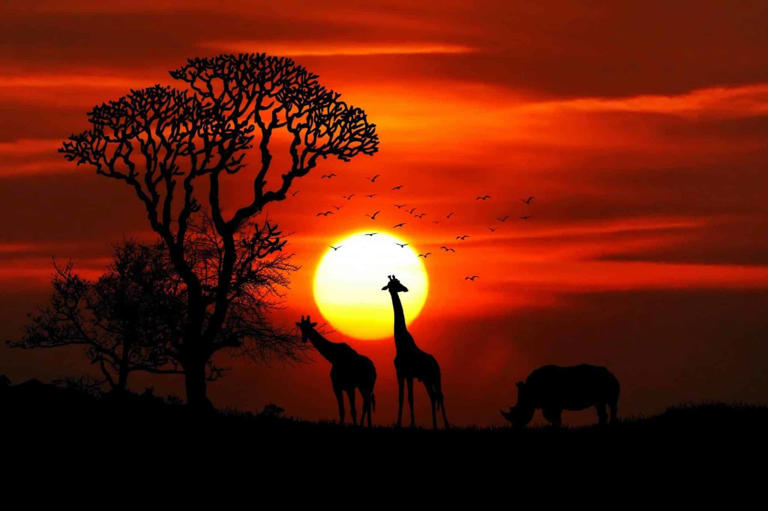
- Kenya Tourism
- Kenya Hotels
- Kenya Bed and Breakfast
- Kenya Vacation Rentals
- Flights to Kenya
- Kenya Restaurants
- Things to Do in Kenya
- Kenya Travel Forum
- Kenya Photos
- All Kenya Hotels
- Kenya Hotel Deals
- Last Minute Hotels in Kenya
- Things to Do
- Restaurants
- Vacation Rentals
- Travel Stories
- Rental Cars
- Add a Place
- Travel Forum
- Travelers' Choice
- Help Center
Travel advice - Nairobi / Amboseli - Kenya Forum
- Africa
- Kenya
Travel advice - Nairobi / Amboseli
- United States Forums
- Europe Forums
- Canada Forums
- Asia Forums
- Central America Forums
- Africa Forums
- Caribbean Forums
- Mexico Forums
- South Pacific Forums
- South America Forums
- Middle East Forums
- Honeymoons and Romance
- Business Travel
- Train Travel
- Traveling With Disabilities
- Tripadvisor Support
- Solo Travel
- Bargain Travel
- Timeshares / Vacation Rentals
- Africa forums
- Kenya forum

- First 9 days I'm in Nairobi (for business, but free some days & in the evenings/weekend).
Please tell me 2 things you think I need to see/do! Must-do restaurant tips are appreciated! ;)
- Rental car from Nairobi to Amboseli for 4 days, drop-off would be Amboseli.
It's not for driving into Amboseli National Park, just to get from Nairobi to the lodge in Amboseli with some planned stops in between. Anyone some good sites where I could get a quote? I've found a few but they only offer car +driver, not just the car or no drop-off in Amboseli.
- I'm planning on getting a Safaricom SIM and activate/top-up MPESA.
I'd rather not use Master/Visa if possible, is ApplePay possible for payment or is it strictly MPESA/credit-cards/cash?
- I'm still doubting to either use my travel backpack, or pack a suitcase.
Most of the trip everything is already organised (transport & stays), but I'm not sure how easy it would be to navigate everything with a suitcase. A backpack is easy, but alas, wrinkled shirts ;)
- Heavy Rain and flooding 10:04 am
- 17hours layover. Visit to the Giraffe Center 9:22 am
- Travel advice - Nairobi / Amboseli 9:20 am
- Name information when booking Kenya Airway flights 6:09 am
- Nairobi NP + Elephant orphanage yesterday
- Early morning flight - getting to airport yesterday
- Adults only game drives yesterday
- Travel from Nairobi to Masai Mara - fly or overland? yesterday
- KWS Guesthouses in Amboseli and Nakuru yesterday
- Tourist Visas for Kenya and Tanzania Apr 27, 2024
- 3 days in Nairobi. 5/24 recommendations for car rental? Apr 27, 2024
- Is staying inside a National Park in Mara worth it? Apr 27, 2024
- Driving in Kenya Apr 27, 2024
- Lake Nakuru vs Ark or change sleep location or change nothin Apr 27, 2024
- do i really need yellow fever vaccination? 5 replies
- Is Transit Visa required if NOT leaving Nairobi airport 21 replies
- Visa on Arrival for Indian Nationals 7 replies
- Elephant orphanage 10 replies
- Safari clothing colours 8 replies
- Is there a better time of day to take malarone 5 replies
- Kenya's electrical plug socket type? 4 replies
- what to wear on safari 2 replies
- Kenya Airlines good or bad? 40 replies
- Intrepid Travel - Miselading Pricing re Trip Kitty 18 replies
Kenya Hotels and Places to Stay
- A guide to some of the most popular tented camps and safari lodges
- What will the weather be like?

IMAGES
VIDEO
COMMENTS
View our best wildebeest safaris and Diani Beach holidays. Ask us for a free quote. Unique private kenya safaris with expert guides, comfortable safari cars & best lodges.
Life-changing, tailored Kenya safaris. Our experts know the best spots at the best times. Let us plan your luxury African safari adventure. Book through our agents & pay less.
Amboseli National Park is one of East Africa's most rewarding safari destinations, and a real classic of the Kenya safari circuit. Compact enough to get around easily, filled with wildlife, replete with good accommodation in and around the park, and with the best Kilimanjaro views to be had anywhere on the continent, Amboseli should be on the list of every safari visitor to Kenya.
Amboseli National Park is one of Kenya's safari icons, a world of big-tusked elephants and big cats (lions, and sometimes cheetahs), all set against the backdrop of Africa's highest mountain, Mt Kilimanjaro. It's a beautiful, compact park with lots of wildlife, including flamingos and an easy-to-find hyena den.
Phone +254 716 493335. Web Visit website. The name Amboseli comes from the Maasai word empusel, meaning a salty, dusty place. And yet, there's much more to Amboseli National Park, a relatively small reserve located in southern Kenya. It covers an area of approximately 150 square miles, including wide-open areas of savannah grassland, tangled ...
Crowned by Mount Kilimanjaro, Africa's highest peak, the Amboseli National Parks is one of Kenya's most popular parks. The name "Amboseli" comes from a Maasai word meaning "salty dust", and it is one of the best places in Africa to view large herds of elephants up close. Nature lovers can explore five different habitats here ranging from the ...
3-Day Majestic Amboseli National Park Tour. Crowned by Mount Kilimanjaro, Africa's highest peak, the Amboseli National Park is one of Kenya's most popular parks. The name "Amboseli" comes from a Maasai word meaning "salty dust", and it is one of the best places in Africa to view large herds of elephants up close.
Best time to visit Amboseli National Park for a safari. For travelers hoping to see the best of Amboseli in just a few days, the dry season from June to October is generally considered the best time to visit. Waterholes become excellent viewpoints for observation and with the grass low, spotting a lion or a cheetah becomes way easier.
a visitor's guide to amboseli national park. Covering 3,810 square kilometers in the Kajiado District of southern Kenya, spreading across the Tanzania border and anchored by the stunning snow-capped peaks of Mount Kilimanjaro, Amboseli National Park is one of Kenya's most popular safari parks. With breathtaking scenery and plenty of ...
Amboseli National Park is located in the south of Kenya on the Tanzania border, immediately northwest of Mt. Kilimanjaro and 140 miles (220 km) southeast of Nairobi. It's one of Kenya's top safari attractions, right after the Masai Mara National Reserve, synonymous with majestic herds of elephants and glorious views of Mount Kilimanjaro on the Tanzania side.
Amboseli National Park. Amboseli National Park is in Kenya near the border of Tanzania . The park encompasses 151 square miles (392 sq km). It is part of the larger ecosystem that stretches across Kenya and Tanzania covering an area of 3,100 square miles (8,000 sq km). Mount Kilimanjaro, the rooftop of Africa, crowns this protected area.
8 Day Amboseli, Mount Kenya & Masai Mara Flying Safari. 1 night Nairobi Tented Camp, 2 nights Porini Amboseli Camp, 2 nights Porini Rhino Camp, 2 nights Porini Lion Camp. Flights: Nairobi -> Amboseli -> Nanyuki airstrip -> Masai Mara -> Nairobi. Optional: Hot air balloon at additional expense.
Amboseli National Park is a famous wildlife conservation area located in the southern part of Kenya, near the border with Tanzania. This iconic park covers an area of 392 square kilometres and is home to a wide range of wildlife species, including over 80 species of mammals and over 400 species of birds. The park is located at the foot of Mount ...
Amboseli National Park. Amboseli belongs in the elite of Kenya's national parks, and it's easy to see why. Its signature attraction is the sight of hundreds of big-tusked elephants set against the backdrop of Africa's best views of Mt Kilimanjaro (5895m). Africa's highest peak broods over the southern boundary of the park, and while ...
After the Maasai Mara National Park, Amboseli National Park is the second most-frequented in Kenya. It offers some of the best views of Mount Kilimanjaro just across the border, and of the free-ranging African elephants that are subject to the longest ongoing elephant study in the wild. Visitors are warned that malaria is found in the area and ...
The Amboseli National Park is situated in the Kajiado District, of the Rift Valley Province in Kenya on the border with Tanzania. It is considered to be one of the top safari destinations in Africa and is famous for its landscape, dotted with African wildlife, with the majestic snow capped peak of Mount Kilimanjaro in the background and is one ...
Amboseli National Park, formerly Maasai Amboseli Game Reserve, is a national park in Loitoktok District in Kajiado County, Kenya. It is 39,206 ha (392.06 km 2) in size at the core of an 8,000 km 2 (3,100 sq mi) ecosystem that spreads across the Kenya-Tanzania border. The local people are mainly Maasai, but people from other parts of the country have settled there attracted by the successful ...
The Park and the broader ecosystem. Formerly Maasai Amboseli Game Reserve, Amboseli National Park covers just 392 square km (39,206 hectares) in Kajiado County, Kenya. However, the park is a core part of the much larger Greater Amboseli ecosystem (also termed the Amboseli-Tsavo-Kilimanjaro ecosystem or various iterations thereof).
Welcome To Amboseli National Park Kenya. Amboseli National park is one of the top Kenya safari national parks that is known for having big herds of elephants and stunning views of Mount Kilimanjaro.The park covers an are of about 392 square kilometers and the vegetation of this park is dominated by acacia woodland, rocky thorny bushes, swamps marshland and a Pleistocene lake known as Lake ...
200 Kshs. 40 US$. Best time to visit Amboseli national park. Amboseli national park is a year round Kenya safari destination however dry season is considered to be the best time to visit the park for a Kenya safari, the dry season is experienced from June to October. In this period, the grass cover is very thin and scattered offering excellent ...
Amboseli National Park is the largest national park in Kenya. It's home to the iconic safari image of an elephant standing proudly in front of Mt. Kilimanjaro. Often overlooked for the more famous Serengeti National Park or Masai Mara - Amboseli should not be skipped during a safari in Kenya. Be sure to click on the image below and get your ...
Amboseli national park the magical land of Kenya lies in the North West direction of Mount Kilimanjaro on the border of Kenya and Tanzania, this park stretches over the area of 392 square kilometers which is dominated by acacia woodland, rocky thorny bush, swamps marshland and a Pleistocene lake. Amboseli national park is a home to a large concentration of wildlife estimated to be 80 different ...
3-Day Amboseli and Tsavo East National Park Safari. This tour combines travels to Tsavo East National Park and Amboseli National Park, two renowned parks in Kenya, celebrated for their wildlife, captivating bird species, and breathtaking views of Mount Kilimanjaro. Amboseli National Park is one of the most visited parks on Kenyan safaris, and ...
One of the most popular Safari destinations in East Africa, Amboseli National Park is located in southern Kenya in Kajiado County, bordering Tanzania. 'Amboseli' is a Maasai word meaning 'salty dust', somewhat appropriate as the park is known for being dusty in the drier months. Officially gazetted as a National Park in Kenya early 1974 and ...
Despite its fabulous density of wildlife, Amboseli faces threats. Kenya's government, which officially declared it a national park in 1974, plans to "degazette" Amboseli, downgrading it to a ...
Guests can do a safari at night, when a whole different set of fauna emerges. For travelers looking for more of a traditional game drive, the staff can take people to the nearby Amboseli National Park. The Angama team is working to create a new gate by August 1 that would cut the travel time to the park in half, to 20 to 30 minutes.
Amboseli National Park, Kenya - Elephants near Mount Kilimanjaro, observe intact social behavior. Tips for Safari: Best time to go is from July to October for high animal sightings.
Experience the best of Serengeti, Maasai Mara, Tarangire, and Amboseli Park on our 11-day tour. Enjoy quality service, customer satisfaction, and a time-oriented itinerary.
Angama Amboseli | Special Offer - Non Resident pay Resident Rates Valid till 31st May 2024 What's included -Accommodation -All Guided Safari into Amboseli National Park -Guided Walking Safari on the Kimana Sanctuary -All Meals & Selected Drinks -Laundry Service -WIFI -Return Flights From Nairobi to Amboseli -Transfers to & From kimana Airfield -Emergency medical evacuation insurance ...
It's not for driving into Amboseli National Park, just to get from Nairobi to the lodge in Amboseli with some planned stops in between. ... Mount Kenya National Park, Kenya . 2.5.4 Ole-Sereni Hotel. 1,944 Reviews . View Hotel. Nairobi, Kenya . Sarova Stanley. ... Safari Park Hotel & Casino. 706 Reviews . View Hotel. Nairobi, Kenya . View all ...